

What To Do With 3 Month Old Baby? 53 Development Activities
- Last Updated: June 30, 2023
By Sarah Peerless
The first few weeks and months with a new baby can be pretty hectic. Feeding, feeding, feeding interspersed with many diaper changes and (hopefully) some naps!
But around the end of the third month, when the 4th trimester is nearing the end, all THAT baby admin eases just a little.
You may find you have a little breathing space and are wondering, what to do with your 3-month-old all day? Or, how to play with a 3-month-old?
Here, we’ll share variety of simple and fun developmental activities specifically designed for 3-month-old babies.
These baby activities aim to support their cognitive, sensory, physical, and social-emotional development, while creating moments of joy and connection.
Exciting times ahead!
Prepare for lots of smiles and get ready to embark on a journey of discovery and growth with these engaging and fun developmental activities for three month old babies.
Table of Contents
How do I entertain my 3 month old all day?
To entertain your 3-month-old throughout the day, incorporate a few minutes of interaction, play and exploration when you can. Activities for a three month old baby need to be short and sweet, a few times every day as your baby will still take plenty of naps and eat often .
Engage in activities that stimulate your 3-month-old baby’s developing senses and help build fine and gross motor skills, such as those listed below.
Your baby will also be happily entertained by accompanying and observing you as you go about your daily tasks.

How to play with a 3 month old baby at home
When playing with a 3-month-old baby at home, focus on activities that encourage motor skill and sensory development.
This can include a few minutes of tummy time, using new and interesting items with different textures and providing colorful age-appropriate toys to engage their senses. Incorporate singing, talking, and cooing to promote language development and bonding.
Remember to follow your baby’s cues , allowing for rest and sleep as needed, and provide a safe environment for playtime and activities.
Tips for doing activities with your 3-month-old baby
Here are a few tips for doing activities with your three month old:
Look for cues that baby actively wants to play
- purse lips, coo, babble, smile
- bright eyes, relaxed breathing and facial expression
- open eyes wide and try to make eye contact
- turn and look towards sounds
- relaxed body with slow, smooth body movements
- actively responds to you when you engage
Watch for cues that baby has had enough
Watch for these signs that your three-month old is tiring and needs a break and/or to go go sleep:
- lose interest in surroundings
- not want to hold eye contact
- curl into the fetal position and/or become still
- suck fingers, thumb or hands
- rub eyes and ears

Start with short sessions
Young babies are easily overstimulated and tire quickly. They need to sleep in the day and can only manage short periods of time awake .
So a few minutes may be plenty for an activity for a three month old. Of course, some activities will be more tiring and/or stimulating than others.
So start with short activity sessions and gradually increase the duration to longer stretches as your baby grows and is seeking more engagement.
Use gentle and slow movements
Keep in mind that your baby’s motor skills are still developing. Start with gentle, slow, and controlled movements when playing or interacting with them to avoid overstimulation or discomfort and build from there.
Incorporate repetition
Babies thrive on repetition and familiarity. Repeat songs, rhymes, and activities they seem to enjoy. Make some activities part of your daily routine with your three month old to develop a sense of predictability.
Stay safe and supervise
Always prioritize safety and ensure objects have no sharp edges or small parts. Always stay within arms reach of your three month old.
Remember that every baby is unique
Adjust activities and techniques based on your baby’s individual preferences and developmental progress. Let them go at their own pace.
Enjoy it and take plenty of pictures!
Remember to relax, have fun, and enjoy the precious moments spent with your baby. Cherish the opportunity to bond and witness their growth and development during these early months. And keep your smart phone or camera within reach!

What do 3 month old babies like to play with?
At 3 months old, babies like playing with materials and toys that stimulate the senses . They are particularly drawn to objects with bright contrasting colors, different textures, and gentle sounds.
Three month olds enjoy playing with soft items that they can grasp or squeeze. A favorite toy of my babies at this age has been the crinkly ones.
But the world is your oyster. If you’re wondering how to play with a 3 month old, then grab any toy or items that make new and interesting noises. These will intrique a young baby.
They’ll also enjoy looking at simple board books and lying under a colorful mobile.
3 months old baby milestones
Here are some typical developmental milestones to expect in your 3-month-old baby. The fun activities for three month olds listed below will help your baby reach these milestones.
Remember that every baby develops at their own unique pace, so don’t panic. But if you do have any concerns, consult with your pediatrician or healthcare provider.
Hearing & Vision
Following objects or people moving in their field of vision from side to side. Turning their head at familiar sounds, like the sound of your voice.

Social skills, language skills and communication
Starting to smile and interact more with familiar faces, responding to smiles and voices.
Cooing, making various vowel sounds and experimenting with different vocalizations.
Gross motor skills
The head wobble is gone! Or very nearly. A three month old will or will nearly have the neck strength and head control to hold their head steady when upright or during tummy time.
Pushing legs against a firm surface when held by the trunk.

Fine motor skills
Beginning to reach for and grasp objects or try to bat them. Exploring hands by bringing them to their mouth. Opening and shutting hands.
Nearly every activity you offer your baby will offer some form of sensory exposure and experience. Here are some simple and fun sensory activities for a three month old baby that focuses mainly on a tactile and auditory experience.
TOUCH stimulation & sensory activities for a 3-month-old
Sensory play and sensory activities are important for kids and you can start from birth. Purely by being out in the big wide world, your baby will be exposed to a vast array of new sensations.
Here are some 3-month-old baby sensory activities to encourage and expand exposure, starting with their sense of touch.
Touch is important for bonding, cognitive development and also for movement. Touch is, in fact, the starting point for movememnt. It’s through touch that babies develop body awareness.

Deep pressure touch is the most effective way to calm and relax your baby , since this is the sensation they experienced in the womb. This is why swaddling , holding baby close and baby wearing is the most effective way to settle your baby and help them fall asleep .
There are plenty of tactile sensory activities for three month olds that will stimulate rather than calm. These are things you can try when baby is content and alert and giving you signs they want to engage in play.
1. “Round and round the garden, like a teddy bear”
Simple baby action songs like this are an ideal activity for three month olds.
Trace your finger on baby’s palms and very gently but firmly walk your fingers up her arm. Watch your baby’s reaction for the tickle part of the rhyme as this light touch may irritate.
Another good one is ‘This Little Piggy’ as you count your baby’s toes.
Both of these tick another box when it comes to baby’s development; the language benefits of hearing these rhymes too.
2. Sensory balls
Introduce different textured balls, such as a soft plush ball , O-ball , or ping pong ball for your 3 month old to touch, hold, and explore.
You could also make sensory balloons by filling a balloon with different materials from the kitchen, like flour, oats or corn kernels.
(They’re a little egg-shaped, making this a perfect easter activity for babies.)

3. Soft fabrics
Lie your baby on variety of soft fabrics, such as satin, fleece, or velvet. Strip them out of their clothes so they’re just in their diaper and can feel the material against their whole body. Lie them on their back or try a different fabric every time you do tummy time.
4. Feather tickle
Gently stroke your baby’s skin with a soft feather or a feather-like object to provide a light tactile sensation. This activity for three month olds should get some different facial expressions going.
Light touch like this can be irritating so only continue if your baby is enjoying it. Hopefully you’ll get a smile!

5. Baby massage
Massage is a form of deep pressure touch that can both calm and stimulate your baby’s senses. It’ll help baby develop awareness of their own body which in turn helps develop spatial perception.
Baby massage can also help with the discomfort of trapped wind. Likewise it can help get things get moving is baby is struggling to poop . Read all about the benefits of baby massage here .
Here’s a great video with some pointers on getting started with baby massaage.
6. Water pouring from different objects
Most babies love splashing and playing in the water. If so, this is an easy activity for bathtime , one you may already doing.
Simply gently pour water over her tummy. You can experiment with different intensities and temperatures of water too (within a reasonable range of course).
Try with a toy watering can, by squeezing a sponge or using water or sand toys with multiple holes or water coming straight out the tap. Each will have a different and interesting sensation.
7. Soapy leg stretch
Here’s a great activity for 3-month-olds that’s happy to lie in a bath chair when bathing. When soaping your baby massage and stretch out her arms and legs, one at a time.
When you’re done massaging each arm, end with a little hand rub. Then do the same with the each leg, ending in a bit of a foot massage.
(Sounds like heaven, doesn’t it?!)
8. Wet sponge squeeze
Here’s another one for bathtime. Soak a small sponge in water and let your baby hold and squeeze it. Your 3-month-old may successfully squeeze water on herself helping to develop cause and affect reasoning.

9. All over raspberries!
Here’s a simple and fun activity for your three month old straight after their bath, before getting them dressed. I would recommend putting on a diaper first. The last thing you want is a faceful of wee…
Blow raspberries all over your baby’s tummy, arms, legs, feet, in those cute neck folds, arm pits… wherever you can find enough room to make a good noise!
VISUAL Sensory activities for 3-month-olds
Your baby’s vision at birth is really poor – blurry and in shades of grey. This is because they’ve had almost no light exposure in the womb.
Vision develops rapidly however and while at first is completely reactive i.e. moving eyes in reaction to the environment. By around 2 months babies will consciously move their eyes and “track” or follow items of interest.
When it comes to visuals soft, muted colors will help to calm and settle (hence bringing color into the nursery with pastels). To help baby settle to sleep and sleep well, dim the lights and use good blackout curtains .
On the flip side, bright colors and bright lights are stimulating. .
Just by being awake in the day and looking around them, your baby is getting plenty of visual stimulation. And all the activities you do with your three month old will have a visual element.
But if you’re wondering what to do with your 3-month-old to specifically aid visual perception and descrimination, here are some things to try.

10. Pull faces!
Your baby will love studying your face, particularly when feeding . This is the distance at which babies focus best at first.
You can encourage focus by animating your face when you talk and pulling funny faces. Yeah, I know, motherhood gets us doing some odd things!
Likewise, allow your baby the opportunity to study other familiar human faces – I’m sure you’ll have plenty of volunteerrs to hold your little one.
11. Look at family photos around the house
Take a walk and show your baby different photos of family members. Allow your 3-month-old the chance to try to focus on any she shows interest in.

12. Show your baby high contrast toys and books
Most mobiles and baby toys are colorful and bright – it’s a case of the higher the contrast, the better. There are also books specially designed for babies with black and white patterns and pictures.
In the UK some of these books were included in our free welcoming baby pack, but you can easily recreate your own black and white stimuli with paper and pen.
13. Lie your baby under the trees
Obviously this is weather and environment permitting, but your 3-month-old will love watching gently swaying branches and leaves. You may even find they fall asleep!

14. Lie baby next to or sit with them in front of a mirror
Mirror play is great for babies – it’ll be some time for them to realise that it’s their own reflection they’re looking at. In the mean time, a mirror will entertain and engage your 3-month-old and help them improve their focus and tracking skills as they move in front of it.
Unbreakable mirrors are often included in mobiles an play mats so your baby can enjoy them during other activities such as tummy time.
SMELL sensory activities for three month olds
Taste and smell are highly developed at birth – better than ours in fact. But their exposure to different smells and tastes is very limited. For this reason, new, strong smells will be highly stimulating and can easily irritate.
By 3 months old your baby should have got used to the immense variety of different smells their exposed to simply by being at home and taking trips out with you.
When it comes to taste, of course babies only drink breast milk. However you can expose them to different flavors if you’re breastfeeding, simply by eating a varied diet. Research has shown that familiar flavors babies are exposed to while breastfeeding, are favored when it comes to weaning ( source ).
Anyway, back to smell! There are some simple ways to offer your three month old the opportunity to experience different smells.
15. Cook with your baby
Well not literally! But if you can try to cook while your baby is in the kitchen every so often they’ll enjoy new smells frequently. Of course, if you have other children, the likelihood is your baby will be awake and aware while they’re eating.
But if your kids are anything like mine, they’ll have a limited repertoire of foods they eat! If this is the case, on the odd occasion that you cook something with a little more flavor and spice, have your baby close enough to have a sniff.
16. Guided spice tour
Sounds a very posh activity for a three month old, doesn’t it? Well, all you need to do is get your spices out the spice rack or cupbaord, take the lids off or open them and hold them near enough your baby to smell.
Be careful not to get too close and stay away from anything hot or violent – you don’t want your little one to get a load of chilli powder up their nose…
Gross motor & MOVEMENT activities for 3-month-olds
For young babies, movement stimulation and gross motor activities starts with the experience of being moved. This means exposing your three month old baby to movement as well as giving them the chance to move.
This will help develop muscle tone plus balance and coordination. Eventually your baby will be able to control their own movement.
When it comes to calming versus stimulating sensations: gentle, rhythmical movements will calm and soothe. Hence why the gentle movement of a rocking chair will help settle them and help your baby fall asleep.
By contrast, quick and jerky movements will alert or even irritate.
If you’re wondering what to do with a 3 month old baby when awake, try one of these movement activities:
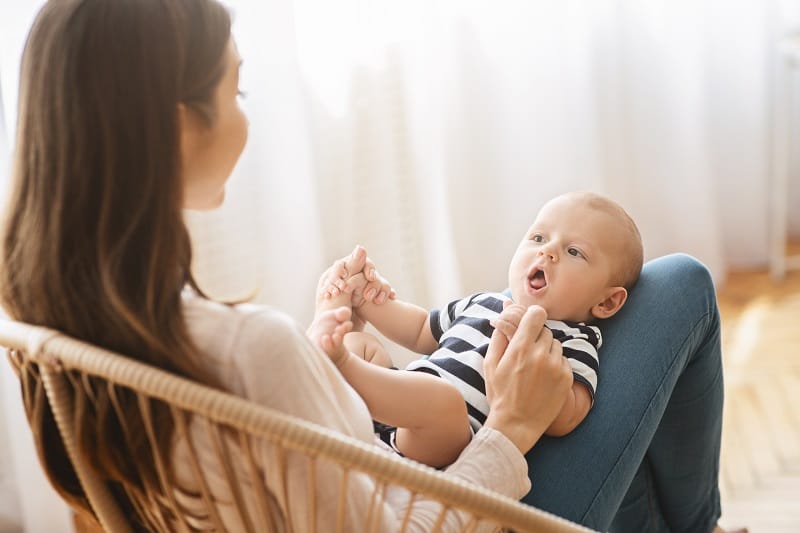
17. Baby arm crossing
Prop baby up on the incline of your legs and hold your baby’s hands in yours, as in the above photo. Then simply cross their arms to the opposite side rhythmically, a bit like an aerobics class for babies.
My dad discovered this one and it became his most useful (perhaps only?) skill with both of my babies. If baby was crying she would stop. If she was happy and content, she would smile in delight!

18. Baby bicycles
Similar to crossing their arms, you can try bicycling their legs. The gentle pressure on the abdomen may also help relieve trapped wind.
19. Baby sit-ups
A simple activity for three month olds that involves moving your baby from lying on her back to sitting up. You can do this by lifting the blanket she’s lying on, or holding her hands.
This will help develop those all-important core and trunk muscles.
20. Kick about lying on back
There are many activities for your three month old that need no outside props yet are developmentally beneficial. This is one of them.
You simply lie your baby on the floor on a firm yet soft surface (carpet or rug) on her back. This gives your 3 month old the freedom to move naturally, to kick legs and flail those arms as she pleases.
This freedom is important, helping to build muscle tone and coordination.
If your baby isn’t used to such freedom and is quickly worried or agitated, then start with a few minutes while you’re close by and build up to longer session.
I’ve always offered my babies a few minutes to have a kick about diaper free before getting in the tub .

21. Baby Gym or DIY Activity Center
A baby gym or activity center with hanging toys is a great investment for young babies . They will enjoy attempting to bat the toys, promoting the motor skills in their hands and arms.
The toys normally detach and offer different tactile sensations and noises too providing another sensory activity for your 3-month-old.
I love this one pictured, from Forest Friends….
However, it’s easy to create your own activity center, by hanging different items, like silicon kitchen utensils, scarves or other suitable things from a table and lying your baby underneath. Obviously be extremely careful there’s no chance of anything becoming loose and dropping onto your baby.
22. Supported sitting
Hold your baby in a sitting position on your lap, so your lap is a chair and they face away from you.
Alternatively sit your baby across your lap, facing either left or right and support them with a hand either side of their torso.
This will excercise and help build different muscles yet again.

23. Bouncing!
If you have a bouncy chair, then you probably regularly bounce them to help settle them. This is the kind of regular, rhythmical movement that babies like.
They may also enjoy to kicking and making the chair bounce. My little boy twin had this down to a fine art and was so happy bouncing away.
Of course, your baby shouldn’t be strapped into their chair for lengthy periods, but if your baby enjoys the bouncy chair and is getting plenty of physical excercise, let them go for it a few times a day.
24. Dance moves
Put some music on, hold your newborn firmly or carry them in a baby sling and get moving. Experiment with different tempos of music and different styles. Or just put on your favorite tunes and enjoy!
Another good activity for three month olds that you’ll enjoy too.
Fine motor activities for three month olds
Babies have very little in the way of fine motor skills at this age. Their gross motor skills will improve and develop first, so be sure to include some of the developmental activities for three months old from the previous section on a daily basis.
At 3 months of age, babies are still becoming aware of their hands and learning how to use them in a controlled manner. They’re in the discovery stage!
This learning includes being able to open and shut their hands and to grip and hold small items.
So if you’re wondering what to do with your 3-month-old to help develop their fine motor skills, here are a few ideas .
25. Clap baby’s hands together
This helps your baby become better aware of their hands. You can try clapping their hands while enjoying other developmental activities with your three month old baby, like singing songs or reading nursery ryhmes together.
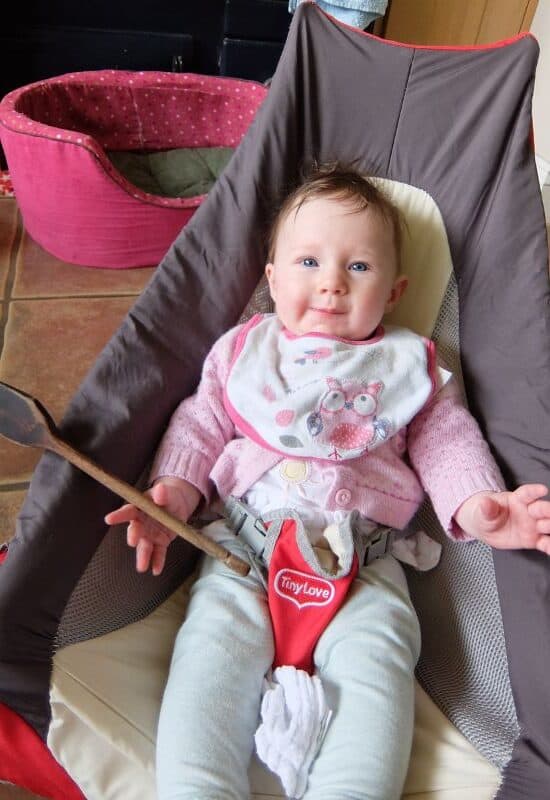
26. Offer your 3 month old items to hold
Small soft toys, such as those from an activity gym, are ideal safe items for your baby to practise holding. As are weaning spoons, teething toys, duplo blocks or other kitchen utensils.
27. Encourage them to reach and grab toys
You can then hold a toy just out of your 3-month-olds reach, encouraging them to reach and grab them. This will also help develop their hand-eye coordination.

28. Play with a balloon
Yup, it’s not only bigger kids that love balloons! If you’re wondering how to play with a 3 month old with a balloon, the easiest way is to hold or tie one within their reach. Then encourage them to bash it. You can also bat the balloon around in front of them – a good excercise in visual tracking.
29. Hand and foot finders
If you’re wondering what to do with a 3 month old when they’re lying on their back, this is a good one, that also helps them to learn where their hands and feet are.
Hand and foot finders , or rattles, attach to the wrist or ankle and rattle when the arm/leg is moved.
Your 3-month-old will also learn in time that kicking their leg or waving their arm, is the reason for the noise, helping to develop the concept of cause and affect.
Tummy time activities for 3-month-olds
Tummy time is vital in getting the neck, shoulder muscles, arms and core muscles working and developing, preparing baby for crawling and then walking. More on the importance of tummy time here .
Unfortunately, not every baby enjoys tummy time – if yours is one of those, the key is to keep sessions short (start with just a few minutes each time) and try lots of different ways.
Tummy time doesn’t just mean putting your baby on their front on her play mat and walking away (tempting as it is to go make yourself a cup of tea…)
Including a variety of different tummy time activities for your three month old also the opportunity to practice different skills and experience different sensations from a different perspective.
Lying on the front can also help your baby burp or simply alleviate a gassy tummy . It’ll also help soothe if your baby is colicky .

30. Tummy Time on Parent’s Chest
Lie down on your back and place your baby on your chest on their tummy. This provides closeness and support to your baby if they lack confidence during tummy time.
It’s also a lovely way to interact and bond with your baby in a completely different position. Talk or sing to your baby while they study your face. They’ll love it!

31. Tummy time pillow
You can buy a special tummy time pillow (sometimes they come with activity gyms and/or play mats) or you can use another small pillow. A nursing pillow also works well.
Simply place it under your baby’s chest to elevate them a little.
This is a good way to ease them into tummy time and allow your baby to build up strength before being able to manage time on their front unaided.
You can then place items of interest in front of the pillow within their reach. Like soft toys or a sensory playmat…
32. Sensory Playmat
Provide your 3-month-old with a playmat with different textures and items of interest such as crinkly fabric, ribbons, or patches of different materials. They’ll enjoy touching and explore it while lying on their front.
Language, hearing and socio-emotional activities for a 3-month-old baby
A newborn’s hearing is as good as an adult’s and memory for sounds is good. At birth, your newborn will quickly recognize your voice and other sounds she heard while in the womb.
At around 3 months your baby will start to try and mimic sounds and coo; this is the basics of communication and the first step in language development.
Gentle, rhythmical sounds help calm baby as does the dull consistency of white noise, while i rregular sounds and loud noises may stimulate and irritate .
If you’re wondering what to do with a 3 month old baby at home to help language and social development here’s some inspiration. However, it’s such a natural thing to interact with your baby socially, you’re likely to be doing some of these fun activities for a three month old baby already.

33. Copycat noises
At around 3 months your baby will start to try and mimic sounds and coo. This is the first step in language development. You need to coo and talk back! It may feel silly but this is so important and easy too, once you’ve let go of any inhibitions.
Simply respond to their vocal expressions and other funny sounds your baby makes with smiles and words.
You’ll probably find yourself naturally using a higher pitch and soothing tone. This baby talk or ‘parantese’ is another of mother nature’s clever tricks. Talking in this way encourages baby to listen and is most effective in aiding language development.
34. Sing lullabies & read nursery rhymes
Sing soft lullabies or nursery rhymes to your baby, providing a soothing and comforting experience while introducing them to the melody of language. Your baby will love listening to you and enjoy the rhythm of the different inflections of your voice.

35. Reading stories
At 3-months-old, reading is more about introducing a wide variety of different words to your baby. Good language development comes from exposure to… yup, good language!
Simple board books with colorful pictures add another sensory dimension to the experience, giving your baby something new and interesting to look at too. But really, any book will do when it comes to hearing a wide range of vocab.
So if you haven’t done so already, include story time in your daily schedule. It’s normal to read stories at bedtime, but any time will do.
36. Peek-a-Boo
If you’re trying to think how to play with a 3 month old anywhere and everywhere, no probs (or brainpower!) needed, peek-a-boo is a must.
Simply cover your face with your hands or a blanket, then reveal yourself with a smile. This will foster a sense of anticipation, surprise, and social interaction and will hopefully get you a smile or two!

37. Gentle touch and cuddling
Provide gentle touch, cuddling, and skin-to-skin contact, which promotes a sense of security, trust, and emotional well-being.
38. Baby sign language
Introduce simple gestures or signs, such as waving bye-bye or blowing kisses, to facilitate early communication and understanding between you and your baby.
You could take this further when your baby is older and take them to a baby signing class, which will help you teach your baby to communicate with you before they can speak.
39. Play classical music to your baby
Classical music can calm and stimulate your three month old, depending on what you choose.
For calm and relaxation, music from the baroque period is said to be best due to its slow tempo and rhythm similar to the Alpha rhythm of the brain. So try some Bach or Handel:
Your baby may also enjoy music from the classical and early romantic periods so try composers such as Mozart, Beethoven, Chopin, Vivaldi, Haydn:
Some of these will be more suitable for when your baby is awake and alert rather than during your bedtime routine or when sleeping, as they’re more fast-paced.
Of course, the benefit of classical music to babies has not gone unnoticed by those in the music business!
However, there is definitely an advantage in buying a music mix designed for babies. You can be sure that won’t be any pieces with loud crescendos or fast frantic sections, not what you want when trying to help your baby sleep .
40. Use your baby’s name
Your baby’s name is the first thing they’ll learn, so ensure you use their name as much as possible.
This is really easily done if you frequently talk to your baby: “Come on Harry, time to go for a bath!” or, “What’s that smell Harry, do you need a diaper change?”
You can also incorporate your baby’s name into songs that you sing.
Brain development activities for 3 months baby
Cognitive activities are those that engage and stimulate a baby’s thinking, problem-solving, and learning abilities. If you’re wondering what to do with a 3-month-old to help the development of these skills, then these simple learning activities will help.
41. Flying objects
Use toys or bright colored objects to encourage your baby to visually track and follow the objects. This will support their visual perception and entertain them too.

42. Stacking toys
Don’t worry, you’re not expecting your 3 month old to be able to build towers or anything like that! At this age you can use stacking cups and other toys to help your baby develop an understanding of spatial relationships and concepts like size, shape, and quantity.
It won’t be too long before your baby is able to build and stack so a simple set of blocks or plastic cups are a worth and inexpensive investment.
We have these Melissa & Doug Alphabet Stacking Blocks which are brilliant for tall towers and a set of plastic stacking cups that now get used for water and sand play a lot.
43. Books & toys with buttons/sounds
Toys that produce a response when pressed or activated are an easy way to teach your baby about cause and affect, i.e. that an action has a specific outcome.
As well as singing toys, there are plenty of board books with buttons for songs or other noises to accompany the story. These allow you to incorporate a bit of literacy into the play.
Try Baby’s First Playtime Songs . There’s a button for every song in the book.
Or Busy Noisy Farm with a sound for all the different animals on the farm.
Reading and interacting with these books and toys will be a fun activity for your three month old that they’ll continue to enjoy well into the toddler years.

44. Roll a ball
Demonstrate to your 3-month-old that when pushed, a ball will roll. This will also help to develop cause and affect reasoning.
Rolling a ball will also encourage and strengthen visual tracking skills.
You can then incorporate balls into other activities as your baby grows. You could use a ball in tummy time when your baby is stronger and more confident positioned on their front.
45. Locate the sound
Help your 3-month-old practice locating a sound with new sounds close to but not immediately in front of them. If you don’t have a baby rattle, shaking spoons in a tupperware or something similar will give your baby a sound to turn towards.
For more sanity-saving tips and advice for babies, check out:
- Baby sleep strategies: How to help your baby sleep through the night in 10 steps (NO CIO)
- How To Keep Your Baby’s Hands Warm At Night (10 Practical Tips)
- 24 Game-Changing Newborn Hacks For First-Time Parents
Montessori activities for 3 month old
If you’re wondering what to do with a 3 month old during the day to fit with the Montessori ethos, here are a few activities to try. And don’t panic, they’re terribly simple and don’t involve doing much at all!
At this age, we can focus on the “practical life” Montesorri concept. This focusses on looking after ourselves and our environment. Otherwise known as chores!
If you have kids, there are a billion of these to do at any one time. Having your baby with you and observing as you go about these chores is all it takes.
It’s also not too difficult to incorporate nature and the great outdoors into your 3 month olds day, weather dependent of course.

46. Folding laundry
There are many chores to pick to allow your baby to see some of the practicalities of life. Why folding laundry? Well, you can do this anywhere and at any time, fitting it to you and your three month olds schedule.
Sit your baby in their bouncy chair and fold the laundry right there in front of them on the floor. Or lie them on their back while you’re in sight folding at the table.
Not only is your baby observing you , but you can throw in a few other good developmental activiteis for your three month old in the process:
- tell your baby what you’re doing
- give them small items like socks to hold, allowing to practise gripping
- offer them materials with different textures and weights to experience new sensations
- whistle, or sing, while you work!
Somehow it will make this rather thankless task a little more joyful!
47. Putting away clothes
After you’re done folding, it’s time to pack everything away – even more tedious in my opinion!
But this can be a fascinating experience for a 3 month old baby as they get to move from one room to another, filled with completely different sights and sounds.
It may take a little longer with your baby accompanying you, but for the extra stimulation and engagement, it’ll be worth it.

48. Nature observation
Take your 3-month-old baby outdoors and let them observe nature’s sights, sounds, and textures. Show them different plants, let them touch the grass and encourage them to hold hold small items, like pine cones, leaves or a clump of moss.
Watch and listen to the birds and keep an eye out for squirrels and other wildlife, narrating what you can see to your baby.
This is a lovely activity for three month olds that will do you the world of good too. There’s nothing better than reconnecting with the natural world. Try to stop, listen and spend time in the moment.
Things to do with a 3 month old outside the house
Getting out and about, whether on foot or by car , provides a break from the usual indoor environment. It’ll stimulate your baby’s curiosity, as they experience new environments. It’ll also do you the world of good too.
With a three month old, there’s always a lot to do, yet if your baby is waking up a lot at night , finding the energy and motivation to get stuff done can be a struggle.
I found that even after an early start , due to you know who waking at sparrows, leaving the house would give me a new lease of life.

49. Go for a walk
Just like observing nature in the previous 3-month-old activity, a simple stroll in the buggy will expose your baby to different sights, sounds and smells. This time, the focus can be anywhere and everywhere that’ll provide something of interest new and different. And is convenient to you.
A walk along a busy high street, popping into a shop or two if you want, to the park to watch people excerising… it doesn’t have to be more complicated than that.
50. Feed the ducks
Interacting with animals, even at a young age, can help foster empathy and a love of animals. Feeding the ducks allows your baby to observe and learn about animals in a gentle and enjoyable way.
There are plenty of developmental opportunities in this simple activity:
- You can encourage your baby to grip and hold the bread.
- As your three month old follows the ducks as they move and swim, their visual tracking skills are strengthened.
- Talk to your baby about the ducks and what you’re doing, increasing their exposure to new words and expressions.
51. Swing at the park
More swinging, but this time outside. The best way for your 3 month old to enjoy this activity is in a baby sling or baby carrier – they’ll not yet have the strength to sit in a baby swing.
So strap your baby on and swing gently on the swing.
A soothing and calming activity that will help if your baby is getting tired.

52. Mom and baby classes
There are plenty of mom and baby classes to choose from these days. These are as much for moms as they are for the baby! A great way to meet other moms and have (or attempt) some adult conversation.
These classes helped me no end in the early months with my babies. They helped me structure the week and forced me to get out the house even when I really didn’t want to!
Check your local area and facebook groups for classes. Here are some of the ones you may find on offer:
- baby massage
- music and movement
- mom and baby yoga
- infant swim classes
- mommy & fitness (mom work out with baby in carrier or buggy)
- storytime
- play groups
53. Play on a blanket outside
Add a different dimension to lying on a blanket or tummy time simply by moving outside. Your baby will have a completely different environment to observe and experience.
You could even move their bouncy chair, allowing them to view the outdoors from another angle.
If your 3-month-old is happy and content you may be able to hang the washing or even do a bit of gardening!

Ready to have fun with these developmental activities for three month olds?
Hopefully now you’re not wondering how to play with a 3 month old or wondering what to do with them all day. You should now have an abundance of simple developmental activities for three month olds to keep you both busy, engaged and enjoying special moments together.
Useful stuff? Want to save it for later? Want to share with other moms? Click above or pin this image:

Got any comments or questions?
I’d love to here from you. (Your email address will not be published.)
Or contact me direct at [email protected]
Want to dig a little deeper? Check out these other related posts:
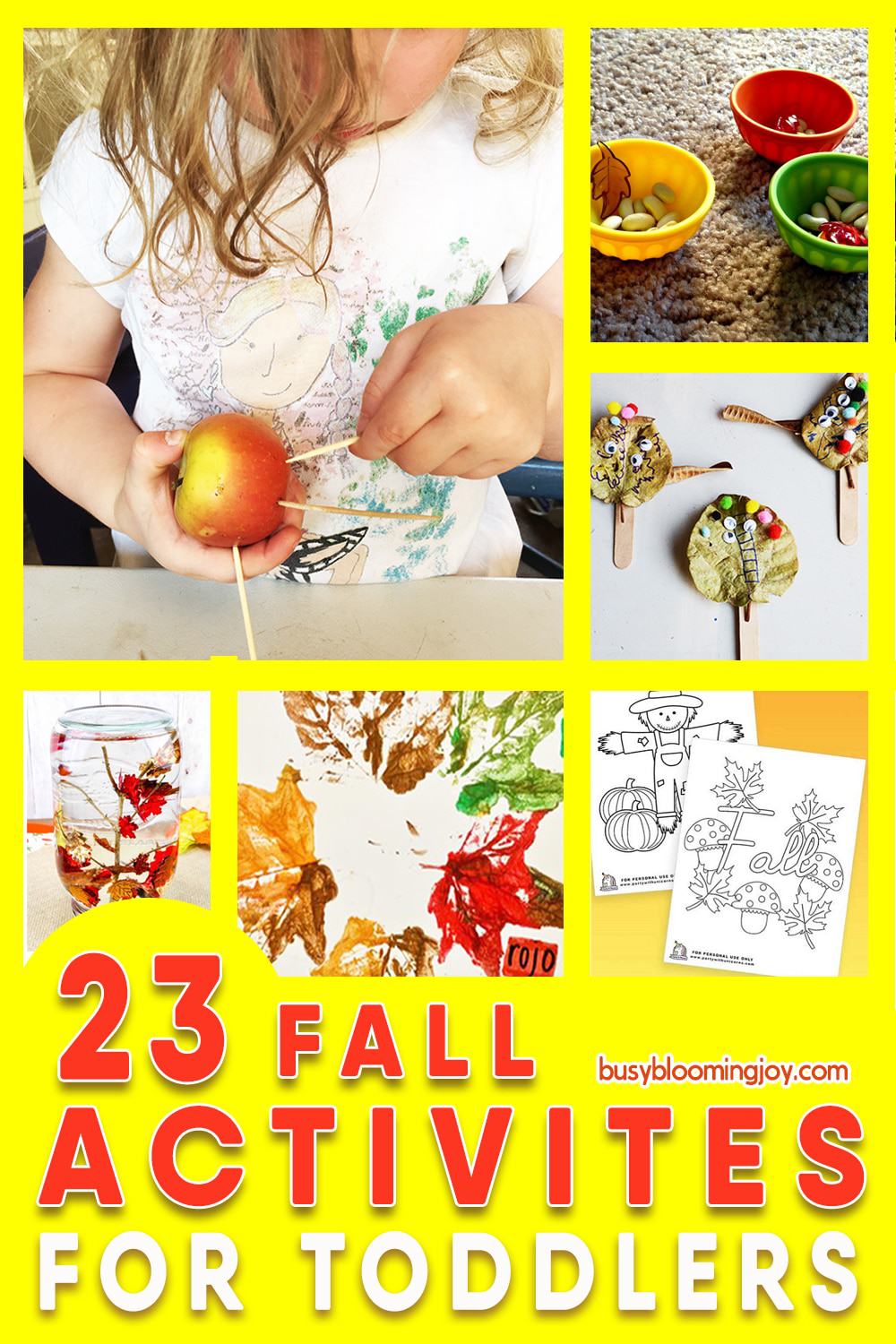
25 Fall activities for toddlers – simple, low prep & educational (and for you, sanity-saving!)
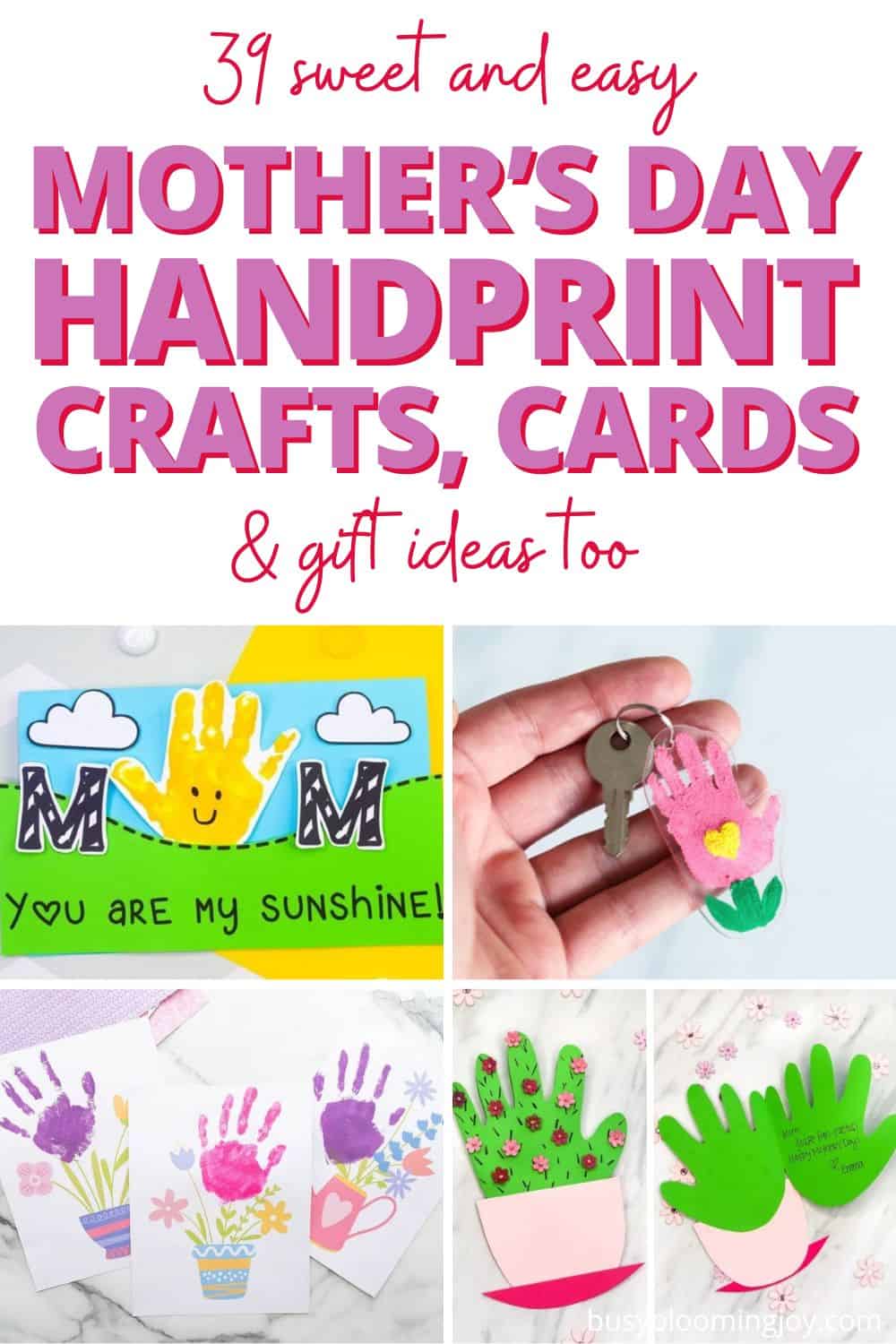
39 Easy Mothers Day Handprint Crafts, Cards & Gift Ideas

55 Easy & Fun Christmas Crafts For Toddlers Age 2, 3 & 4

Cute Valentine’s Day Handprint Craft (Free Templates) for Babies, Toddlers, All Kids!
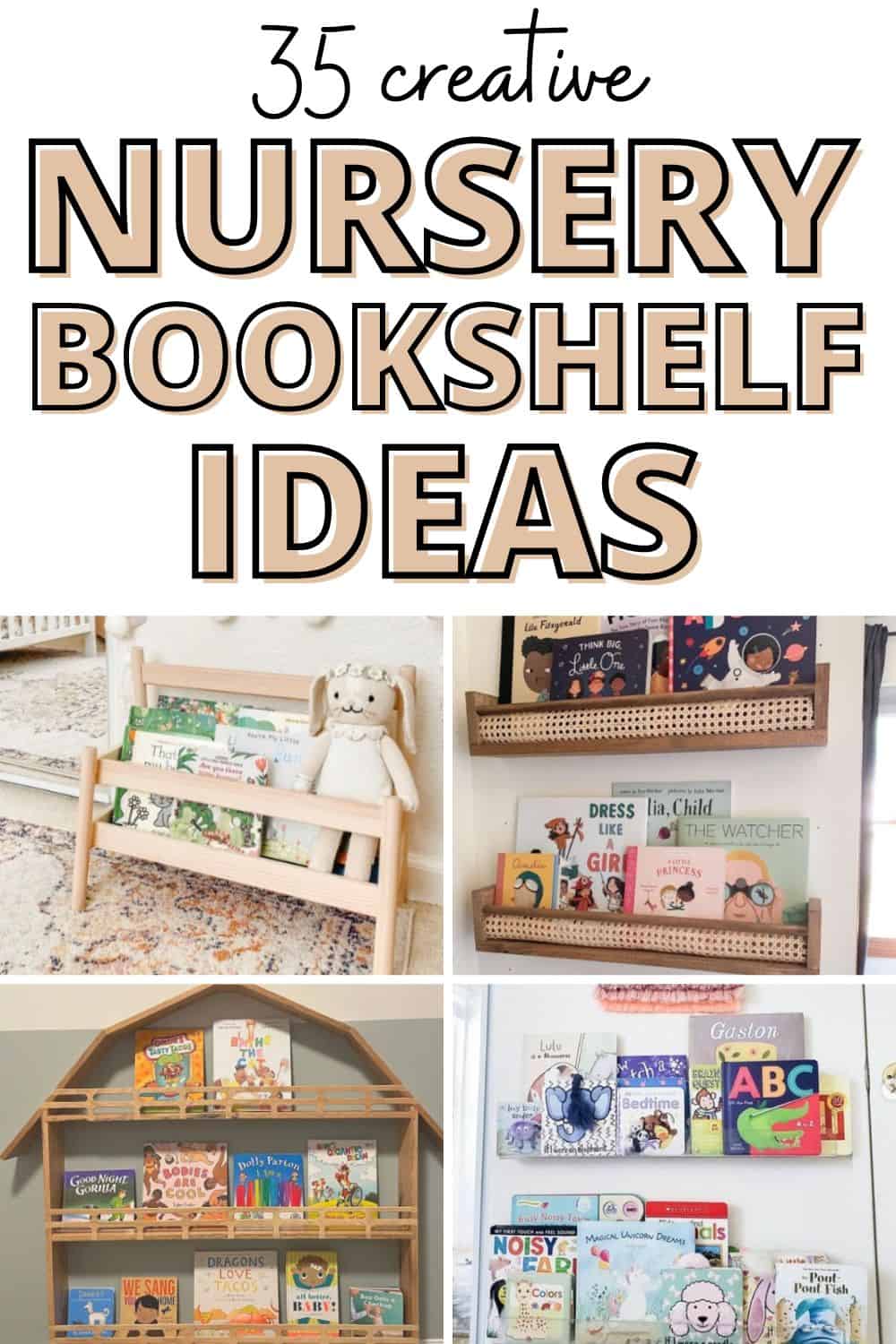
35+ Cute & Practical Nursery Bookshelf & Bookcase Ideas

Homemade snowman Christmas card to make with your toddlers (cute, simple, fun!)
A little about me.
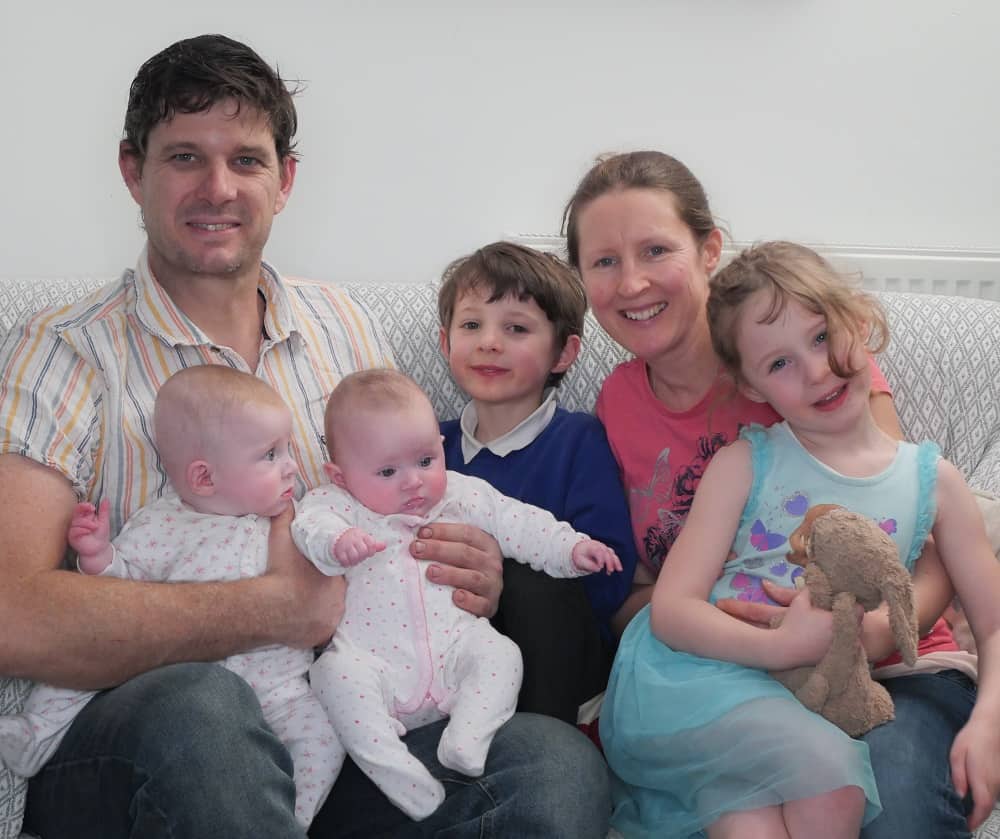
Hi, I'm Sarah
Mom of four outrageously gorgeous Littles. Yup, four! The twins are now two and that title still brings me out in a cold sweat… Yet I’m just as determined to give them the best without losing my mind. I reckon it’s possible! Most days.
I love a challenge and have to find out they ‘why’, ‘what’ or ‘how to’ – there are rather a lot of these when it comes to kids…
I also love, love, love things to be neat and tidy and just so. The Littles normally have other ideas!
Intrigued? Find our more about the team at Busy Blooming Joy here .
Looking for something?
Recent posts.
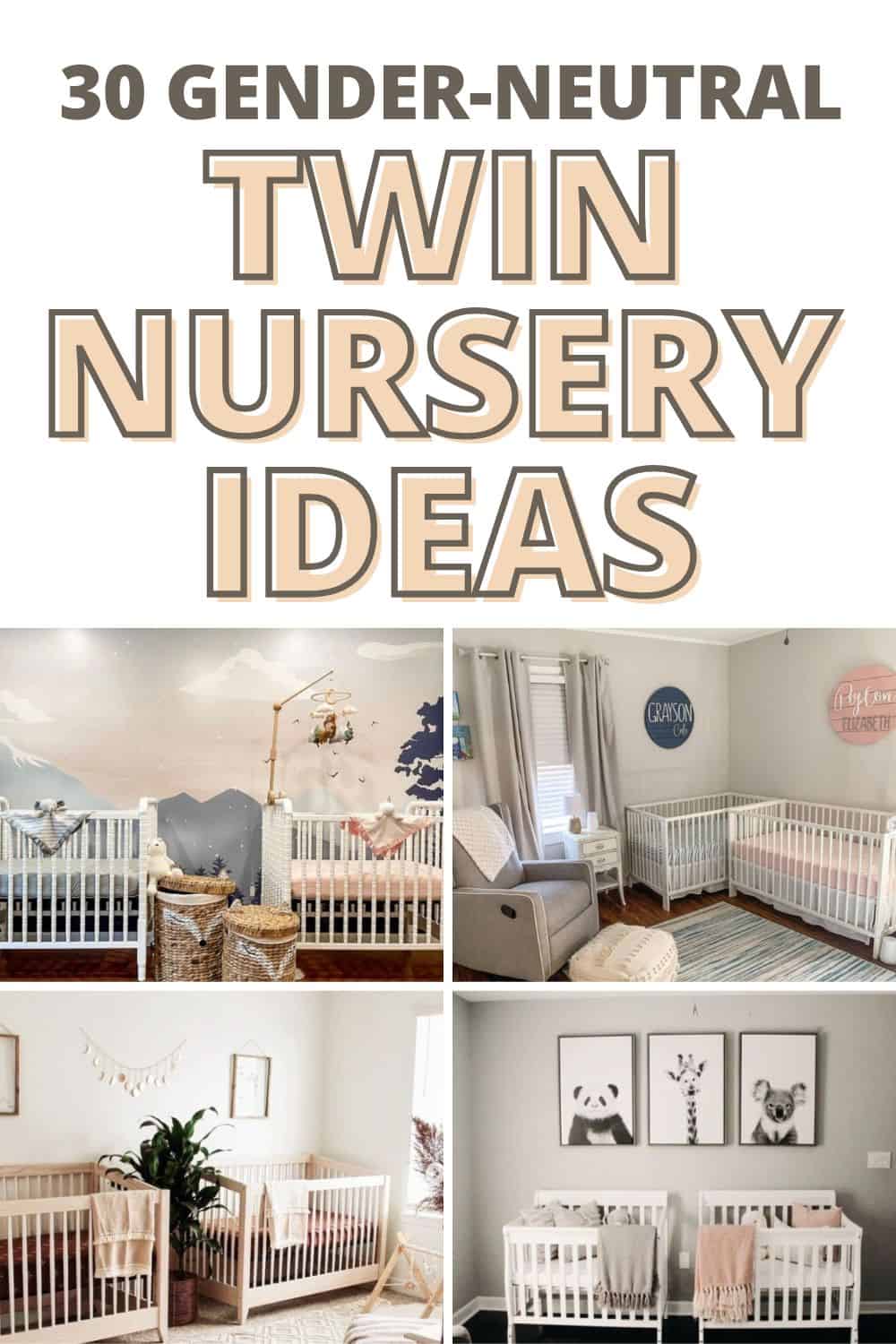
Want more sanity saving Know how?
Just the latest from Busy Blooming Joy. No spam or random stuff.
Let’s connect:
Copyright Busy Blooming Joy 2023, all rights reserved.
WELL BEINGS WITH ALYSIA
50 Best Learning & Sensory Activities to Do with a 3-Month-Old
In the first few months of a baby’s life, they are learning so much! As a parent or caregiver, you probably wonder how you can help a 3-month-old baby’s development. In this post, I will share sensory and learning activities that are fun and appropriate for a 3-month-old.

It’s important to remember that every baby develops at their own pace. These activities are developmentally-appropriate for babies 2 months to 4 months old (and beyond!). Explore the milestones for 3-month-olds below for more information.
Every baby will have their own preferences and things they enjoy. Pay close attention to your baby while you play together. You’ll quickly discover the types of activities they enjoy. I recommend learning about the benefits of sensory play for babies and stages of play theory too!
Always closely supervise your baby while they play!
Gross Motor Activities
Skills Targeted: Moving arms and legs, swiping at toys, holding head up during tummy time, lifting onto elbows/forearms during tummy time, bringing hands to mouth
A 3-month-old baby is still building the neck strength to hold their head with control. They build control and strength in their arms to reach for toys and lift up during tummy time. A 3-month-old is also developing the torso strength and body control to eventually roll over.
Fine Motor Activities
Skills Targeted: Swiping at toys, noticing own hands, holding toys
Babies will develop gross motor skills before they can refine fine motor skills. Spending time on the floor exploring how their arms and legs move will help a baby learn to use and control their hands. 3-month-olds are practicing opening and closing their hands. They are also learning to hold toys that caregivers hand them.
Language Activities
Skills Targeted: Smiling, making eye contact, cooing and making new sounds, making sounds back and forth with others, watching faces
At 3 months old, a baby learns to use nonverbal actions and sounds to interact with others. By watching a caregiver’s face, a baby memorizes the facial and mouth movements people use to communicate. They will begin to serve and return sounds to learn the rhythm of conversations.
Social-Emotional Activities
Skills Targeted: Smiling, chuckling, making eye contact/sounds/movements to catch someone’s attention, calming when soothed, turning towards voices, watching faces, noticing own hands, bringing hands to mouth, making sounds back and forth with others
Along with language skills, a 3-month-old baby is developing social skills such as smiling, reacting to voices, and making eye contact. 3-month-olds are slowly learning to manage emotions when comforted by caregivers. They are also building self-awareness as they show interest in their own hands and bring their hands to their mouths.

Cognitive Activities
Skills Targeted: Swiping at toys, watching toys and movement in the environment, noticing own hands, bringing hands to mouth, making eye contact/sounds/movements to catch someone’s attention
A 3-month-old baby is learning how they can impact their environment. They will observe their environment to learn about objects and routines. They are just learning to use their body to solve problems, like stretching an arm toward a toy. 3-month-olds also start understanding cause and effect. They discover how their sounds, actions, and smiles make caregivers respond. For example, a smile and a coo can get an adult to smile and talk back.
Sensory Activities
Skills Targeted: Moving arms and legs, swiping at toys, turning head to sounds, watching toys and movement in the environment, bringing hands to mouth, holding toys
A 3-month-old baby is still new to the world, so all experiences are sensory experiences. Babies begin to build awareness of how their body exists in space at this age. They are developing the use of their hands to hold and explore objects. 3-month-olds will react to sounds in their environment and focus on moving objects.
Literacy Activities
Skills Targeted: Watching books and movement of pages turning, smiling, cooing and making other sounds, reaching towards book
The goal of sharing books with a 3-month-old is to make reading part of a daily routine. Cuddling with a baby while reading and smiling together over a book at playtime creates a positive association with books. It’s never too early to instill a love of books.
Music Activities
Skills Targeted: Responding to sounds, cooing and making other new sounds, moving arms and legs
For a 3-month-old, music activities are a fun, sensory experience. A soothing lullaby and rocking can calm them. They will smile and chuckle during fun action songs or fingerplays. Dancing while being held will stimulate a baby’s proprioceptive and vestibular senses , too! Plus, songs are an incredible way to introduce language.
Outside Activities
Skills Targeted: Watching objects and movements in the environment
For a 3-month-old baby, just being outdoors is a sensory learning experience. They can feel the warm sun, hear birds, and see shadows moving. Babies are building an understanding that there is more world beyond their home or childcare.

Popular Questions about 3-Month-Olds & Play
What milestones happen when a baby is 3 months old.
Remember, every baby will reach milestones at their own pace. You can use the CDC milestone tracker app or checklists to follow your baby’s development. Talk to the pediatrician if you are concerned about your baby’s development.
What should a 3-month-old do in a day?
Create a daily schedule for your 3-month-old, including feeding, diapering, sleeping, and bathing routines. Between basic care routines, your baby can play in a safe space on the floor. 3-month-olds need plenty of time to play on the floor, on their backs and on their bellies.
Your 3-month-old can play in a safe space alone, with you nearby to supervise. You should also make time to cuddle and play with your baby throughout the day.
Try to minimize the time your 3-month-old spends in bouncy seats or swings. Screen time is also not recommended for babies.
How often should you play with a 3-month-old?
The amount of playtime will be different for each baby. Your baby also needs time each day when you play with them. Add the amount of playtime that works for your baby’s daily schedule. Playtime is best when your baby isn’t sleepy or hungry.
Your baby can also play alone in a safe space on the floor, with you nearby supervising.
You can include storytimes, songs, and “talking” back and forth to diapering, feeding, bathing, and bedtime routines to add more play!
What exercises can I do with my 3-month-old baby?
3-month-old babies need to spend time on their tummies every day. Tummy time helps babies strengthen their torso and upper body muscles.
You can gently bend and move your baby’s arms, hands, legs, and feet. While you do this, talk to your baby or sing a song like “Head, Shoulders, Knees, and Toes.” You can also read a board book such as Whose Knees are These? or Whose Toes are Those?
Your 3-month-old may also enjoy “standing” on your lap while you securely hold them under their arms. Only do this activity if your baby can hold their head steady.
More recent posts

How to Make Water Play Manageable: Best Tips

The Best Block Play Activities & Environments for Young Children

The Best Penguin Activities: 50 Play-Based Learning Ideas

Love Bees: 30 Bee Activities for Preschoolers, Toddlers, & Babies
Developmental Therapist
Hello, I'm Alysia (uh-lee-shuh), a developmental therapist for infants and toddlers with a B.S. in Early Childhood Education and a minor in Special Education. As the founder of Well Beings with Alysia, I'm demystifying child development for parents and early educators. Learn how to introduce the play-based activities, books, nature materials, and toys I use in classrooms and early intervention. Contact me: [email protected]
Leave a Reply Cancel reply
Your email address will not be published. Required fields are marked *
Save my name, email, and website in this browser for the next time I comment.
Free, trusted resources for baby’s development.
Track important milestones, play games based on age, and learn about important development topics to make sure baby stays on track!
- About Pathways.org
Resources By Age
- 10-12 Months
- 13-18 Months
- 19-24 Months
0-3 Months Games
- Milestones & Abilities
- Help Meeting Milestones
Let's Play!
It’s never too early to start playing games to help your child reach their sensory, communication, feeding, and motor milestones.
Games to Play
- Tummy to Play: Always remember: back to sleep , tummy to play. Baby may not like being on their tummy at first because back and neck muscles are not very strong yet. Make Tummy Time part of baby’s daily routine starting with a few minutes at a time, a few times a day. Helps baby develop core strength.
- Face-to-Face: Lie down propped up by a pillow and place baby tummy down on your chest so you’re face-to-face. Hold firmly so baby does not roll off. Helps baby strengthen core muscles and achieve developmental milestones.
- Get to Know Baby: Take time to get to know baby in every way. Smile at them. Touch hands, feet and forehead. See how they wiggle and react to touch and voices. Helps you connect with your baby.
Games for Your 1 Week Old Baby
See More Videos
- Evolving Mobile: Every couple of weeks add or change the toys hanging from an overhead mobile or play mat to grab baby's attention. Wiggling the toys can also help baby look at the new toys. When baby is able to sit up, take down the mobile due to safety risks. Helps baby develop vision by providing interesting objects and colors to look at.
- Sleeping Direction: Change the direction baby lies while sleeping. Place their head on the right side of the crib, then switch to the left side the next night. Repeat. Don't forget to always place baby on back to sleep . Helps baby build strength by turning different directions to see you.
- Mobile Songs: If your baby’s mobile plays music, sing along with the songs. Hold their hand or rock them while you sing. Play similar music for him at other times of the day, all around the house. Helps baby improve listening skills.
- Tummy Min: After diapering, lay baby on their tummy for a few minutes so Tummy Time becomes a part of their daily routine. Helps baby learn to lift up their head.
Games for Your 2 Week Old Baby
- Beep Baby: Tap baby in different places and say the name of each body part. Then say “beep” or make another sound after each new body part you touch. They may start watching your hands and anticipating each touch. Helps baby develop their sense of touch and body awareness.
- Raise to Sit: Place baby on their back facing you. Put your hands behind their shoulders and head for support and slowly raise them to a sitting position. Keep repeating this movement. Once baby can support their head, you can practice while holding their hands. Helps baby build strength.
- Mirror on the Wall: Put up a child-safe activity mirror on baby’s crib where they can see it. Say a rhyme: “Mirror mirror on the wall, Who’s the coolest baby of all?” Tap the mirror so they will glance at it and eventually they will learn that it's them in the mirror! Helps baby develop vision.
- Gentle Strokes: Before feeding, gently stroke baby’s lips with nipple or bottle to encourage mouth to open for feeding. Be sure to present the nipple/bottle in the middle of mouth. Helps baby latch on for feeding.
Games for Your 3 Week Old Baby
- Head Lifts: Baby should be starting to lift head a little bit when doing Tummy Time. Get baby to move by dangling a toy to look up at. Helps baby improve neck and head control.
- Keep a Diary: Track things like baby’s motor milestones, how often they eat, and how many ounces are eaten per day. This helps you track baby’s growth and lets doctors check baby’s day-to-day activities and patterns. If you are concerned about baby’s development, be sure to share the diary with your healthcare provider.
- Rattle Up & Down: Move and groove with a rattle – up and down. While they won't be able to shake it on their own yet, their reflexes will allow them to grasp the handle and enjoy the sounds as you help shake it. Helps baby continue to develop hearing.
- Massage Feeding: Give baby a little massage on their arms, legs, and back before showing them the nipple or bottle. Helps increase baby’s alertness to help with feeding.
Games for Your 4 Week Old Baby
- Get on Down: When baby is on tummy, get down on their level. Encourage eye contact. Place a mirror in front of baby, so they see themselves in a new way. Helps baby develop motor skills, prevents flat spots on head.
- Smiling Faces: Babies love faces. Go through pictures of family and friends or a magazine. Point out the smiling faces for baby. You can also draw a basic smiley face on a paper plate and hang it in baby's room. Helps baby develop ability to focus.
- Diaper Time Chat: When changing baby's diaper, talk about what you are doing. "We have a clean diaper for you." "Mommy is going to lift up your legs now." Helps set the foundation for baby's language skills.
- Soft Touch: While baby is alert, awake, and calm place a soft, cushy toy with a face within their arm length. The face will interest them, and the way it feels will develop their sense of touch. Move the toy up and down, left and right in front of them. Helps baby track objects and develop visual focus.
Games for Your 5 Week Old Baby
- Mirrors All Around: Take baby around the house. Share your reflection in each mirror. Point to your eyes, ask if they see them, then ask if they see their eyes, and point them out, “Here are your eyes!” Helps encourage baby to identify themselves and helps with emotional development.
- Lap Baby: Soothe baby on your lap. Place baby across your knees while you are in the sitting position and rub their back while they do a little Tummy Time. Helps you steady baby and keep them calm during Tummy Time.
- Sing Song: Play on floor with baby while they stay on their tummy. Place toys in front of them and sing songs. Baby loves your face and voice! Helps baby by making Tummy Time fun.
- Songs in Motion: Sing a song like “Wheels on the Bus” or “Itsy Bitsy Spider.” Use hand motions to get a reaction out of baby. Helps baby develop language skills.
Games for Your 6 Week Old Baby
- Tap, Tap, Tap: With baby on their back, sing a song. While singing, tap the bottom of their feet in time with the song. Baby will love hearing your voice and the tapping gives them a new sound experience. Helps baby develop listening skills.
- Hand Claps: Gently clap baby’s hands together to some music. Bring arms out in front and clap over their head, then to the right and left to the beat. Helps baby develop body awareness.
- Cycling: While baby is lying on their back, pretend baby is riding a bike by gently grasping their ankles, keeping legs apart and moving them in slow circles. Tell baby what you’re doing using simple language: “go” and “stop.” Helps baby develop motor and hearing skills.
Games for Your 7 Week Old Baby
- Hand Puppet Play: Place a puppet on your hand. Move puppet up and down, while saying baby’s name. See if they can follow the movement. Then move the puppet in a circle. As soon as they are able to follow the movement, try different movements. Helps baby develop vision skills.
- Gentle Dance: Turn on some of your favorite music. Hold baby close while you sway to the rhythm and sing along. Helps baby be calmly introduced to new sounds and words.
- Reach For It: Show baby a toy and move it towards their hand. Encourage baby to touch it. Be sure to switch sides so both hands get a chance to feel. You can even use common household items like measuring spoons. Helps baby learn to move their fists from closed to open.
Games for Your 8 Week Old Baby
- Cooing & Gurgling: Talk to baby often. They should be cooing (soft throaty sounds including vowels) and gurgling (low, throaty, wet sounds) back to you by about two months. Helps baby develop first steps to speaking.
- Switch Swat: Dangle simple objects (rattle or plastic measuring spoons) from a string so baby can swipe at it. Items that light up or make sounds work well. Change objects every few minutes to keep baby engaged. Make sure objects are not a choking hazard. Helps baby develop hand-eye coordination.
- Toy Gaze: Play with baby’s favorite toy in front of them while lying on their tummy to get them interested in looking up. Helps baby learn to lift up head.
Games for Your 9 Week Old Baby
- Parent Talkathon: Talking to baby is important! Use a slow, higher than normal pitch, almost a melodic voice to help get and keep baby’s attention. Babies prefer the sound of Moms’ and Dads’ voices. Your baby might even copy your tongue and mouth movements. Helps baby develop listening skills and mouth muscles.
- Cheesy Smile: Smiling is one of the biggest expressions babies make! Give baby a big cheesy smile and make some funny noises. Watch them smile back at you. Helps baby bond with you and teaches them how to interact with others.
- A Whole New World: Carry baby in different positions around the house. Carry baby tummy down or prop them up on your shoulder so they can see what is going on behind you. Helps baby develop head control and experience new movements.
Games for Your 10 Week Old Baby
- Face Feelings: Grab a stuffed animal and talk to it. Touch its face. Name each part (nose, ears) you touch. Let baby feel the stuffed animal’s face and yours. Name what they touch. Then help them touch their own ears, mouth, etc., while you name each part. Helps baby develop sense of touch.
- Play Peek-a-Boo: Lay baby on a blanket on their tummy on the floor. You can lay on your tummy facing your baby and cover your face with your hands or a scarf. Then uncover your face and say “peek-a-boo.” Helps baby develop play and memory skills.
- Tongue Teezer: Stick out your tongue and encourage baby to try. Try this during diaper changes or playtime. Helps baby develop tongue control
- Who Am I?: Gently bring baby’s hands to their face and help them stoke their cheeks. Point out different parts of their body as well. Helps baby learn about their body.
Games for Your 11 Week Old Baby
- Side Chats: Lie baby down and talk to them from the left and right sides. Helps baby turn head in different directions.
- Tummy Carry & Chat: Hold baby close to you in a tummy-down carry. Slide one hand under the tummy and between their legs when carrying baby tummy-down. Chat while you go: “Up!” (lift them slightly); “Down!” (bring them back down); “And All Around!” (Move them left to right.) Helps baby build strength and communication skills.
- Express Yourself: Baby carefully watches your expressions and will be using more of their own by this age. Use a variety of facial expressions. Helps baby develop early communications skills.
Games for Your 12 Week Old Baby
- Busy Fingers: Baby should be spending time looking at and playing with their fingers and hands. Putting hands or toys in their mouth is typical at this age. Be sure toys are age appropriate and big enough to not cause choking. Helps baby learn hand-eye coordination while exploring their surroundings.
- Sense of Touch: Baby’s sense of touch is fully developed at this stage. Try gently touching baby on feet and tummy. They should have reaction such as giggling or smiling. Helps baby develop sensory skills.
Games for Your 13 Week Old Baby
Subscribe to our newsletter
The Inspired Treehouse
Growing healthy bodies and minds through play!
30 Development-Boosting Infant Activities: 0 to 12 Months
May 14, 2017 By Claire Heffron
These fun development-boosting infant activities will keep little ones entertained while also boosting crucial developmental skills.
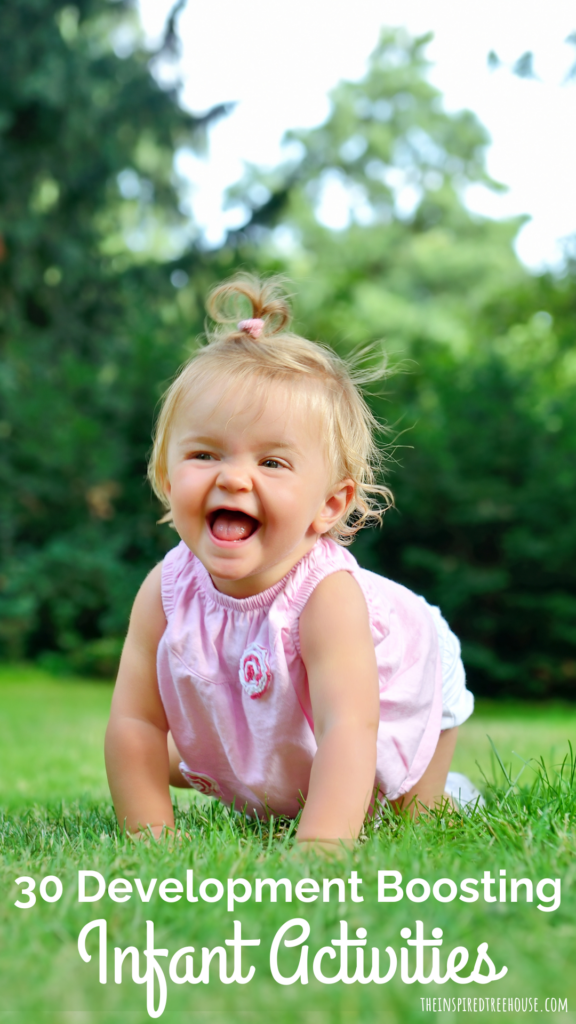
*This post contains affiliate links. Read more . *These activities should be closely supervised by an adult at all times. Babies should have exposure to play and exploration in a variety of different positions beginning from the time they first come home from the hospital. Play and movement in different positions helps to build strength and coordination , integrate primitive reflexes , and provide important input to the sensory systems . As moms, we know that it can be hard to come up with infant activities to keep little ones entertained (not to mention the grownups who are taking care of them!). But as pediatric therapists, we know how important it is to engage babies in hands-on, movement-based, and sensory-based play activities. From rolling to crawling to sitting to standing and walking , here are a few of our favorite play ideas that support a variety of developmental skills for babies during that first year.
Developmental Milestones Resources
If you’re looking for more infant activities and other ideas to support development in younger kids, don’t miss our lineup of developmental milestones products! These resources are perfect for parents and professionals who want to brush up on the basics of developmental skills for kids from birth to 5 years old. Inside, you’ll find information about how and when different fine motor and gross motor skills develop as well as tons of ideas for fun and playful activities you can do with young kids to support healthy development. These products include:
- The Developmental Milestones Mini Course This email-based course was designed by pediatric physical & occupational therapists to: –Break down the information about developmental milestones in a way that’s easy to understand -Provide beautifully-designed printable resources that are perfect for parents, teachers, and therapists -Equip parents and professionals with creative activities and ideas to support healthy development in kids -CLICK HERE TO SIGN UP!
- The Developmental Milestone Handbook This 30-page ebook is written by a team of pediatric physical and occupational therapists and includes: -Information about developmental milestones, including gross motor milestones and fine motor milestones for ages 0-5 -Over 100 activity suggestions for supporting healthy fine motor, gross motor, and sensory development -Information and activities organized by age range for quick reference CLICK HERE TO LEARN MORE!
- Printable Developmental Milestones Handout Pack This colorful child development resource printable pack includes: -12 pages of colorful, easy-to-read information sheets -Developmental milestone information for infants, toddlers, and preschoolers (ages birth to 5 years) -Emerging skills, everyday play ideas, red flags, recommended toys for each age group -Information about developmental skills including: tummy time, rolling, sitting, crawling, standing and walking CLICK HERE TO LEARN MORE!
Infant Activities: 0-3 Months
For the youngest babies, the very best place to get experience with motor skills and sensory input is on the floor. Providing sensory experiences for the baby and moving/positioning her in different ways helps to build important neural pathways that lead to healthy development. These are some of our favorite developmental activities for infants.
1 || Tummy time
Tummy time is one of the most important infant activities, beginning when they first come home from the hospital. During tummy time, babies get the benefit of important sensory input along with movement experiences that lead to strengthening, hand eye coordination, and more! Check out some of our favorite tummy time toys that can help make the experience more comfortable and entertaining.
2 || Carrying and wearing
Babywearing isn’t just great for keeping your hands free – it is also a great way to provide vestibular , tactile , and other important sensory input. Babies also get to experiment with holding their heads up in this vertical position – but with close support and supervision. And, even though it might not seem like a real “activity”, simply carrying an infant in a variety of positions provides beneficial sensory input while also allowing for elongation and strengthening of the muscles of the neck, back, and core.
3 || Rocking and swaying
This is an infant activity that most caregivers do instinctively, but – as with carrying and wearing a baby – rocking and swaying with an infant has more benefits than meets the eye! Rocking in a rocking chair or holding your infant while bouncing gently on an exercise ball is another great way to provide calming vestibular input for little ones, input that helps them learn about where their body is in space. Pair rocking and swaying with a song, and you’ll add the benefit of auditory input as well.
4 || Music and singing
Speaking of songs, singing to babies and playing music is great not only for calming and comforting, but also to help a baby discriminate between auditory input (e.g. telling the difference between mom’s familiar voice and someone singing on the radio). Music can also be a great distraction during tummy time or to begin to encourage a baby to turn his head from one side to the other. These baby action songs are perfect options for mixing music with movement!
5 || Simple toys
6 || Bath and lotion/massage
Bath time is one of the most fun and memorable infant activities. And the gentle touch of a washcloth or your hands with baby lotion also offers calming tactile input that can help a baby develop his ability to process touch in a healthy way.
7 || Floor time outside of a carrier, stroller, or swing
To reiterate, one of the absolute most important developmental experiences we can offer to babies at this age is plenty of time on the floor – on their tummies, on their backs, on their sides. It seems like such a simple thing, but babies get so much of the movement and sensory input they need when they’re allowed the time and opportunity to explore how their bodies work outside of a carrier, stroller, or swing!
Infant Activities: 3-6 Months
As babies become more alert and engaged, there are all kinds of new movement and play activities to try! At this stage, babies become a little more sturdy too, so you can begin physical development activities for infants that will encourage rolling and head control.
8 || Songs and finger plays
Old favorites like The Itsy Bitsy Spider, 5 Little Monkeys, and The Wheels on the Bus are great ways to get a baby’s visual attention during tummy time and play on the floor.
9 || Rocking and rolling
During diaper changes and playtime on the floor, gently rocking your baby from side to side from her shoulders and then from her legs is a great way to help her learn how to feel and use the different segments of her body to move and start to roll. Once your baby is comfortable with this kind of movement and is beginning to initiate some of the movement on her own, you can also assist her in rolling from her back to her tummy (helping her support her head and neck if needed).
10 || Foot rattles
11 || Books
Books are another good way to support interaction and visual engagement during tummy time, while baby is lying on his back, or just while you’re holding your little one in your lap.
12 || Upright play/supported sitting
13 || Slide and ride
Try making a little “ride” for your baby. Fold a blanket up to make a padded surface and then slowly and gently pull her around on a smooth floor surface. For older babies who are very sturdy sitters, you can try this activity in a seated position (with very close supervision).
Infant Activities: 6-12 Months
To encourage babies to learn how to start sitting up on their own, there are lots of fun and easy play ideas you can try.
14 || Seated bouncing and swaying
Try sitting your baby on your lap, supporting him at the trunk. Play with bouncing both of your knees at once, helping the baby keep his balance. Then try lifting one heel at a time, so the baby bounces/leans from side to side. Try swaying the knees from side to side.
15 || Play on an exercise ball
With very heavy hands on support, try sitting the baby on an exercise or therapy ball. Stabilize him carefully at the trunk and gently bounce, rock side to side, and rock back and forth. If baby isn’t ready for this quite yet, have him seated on your lap while you bounce and sway on the ball.
16 || Cardboard box hideout
With close supervision, practicing sitting in a cardboard box or laundry basket is a great way to build confidence and security in this new position. Pad the box or basket with a cushion or folded up towels and add some toys for entertainment.
17 || Bean bag balance
This infant activity is also a favorite for toddlers, and even older kids too! In sitting, place a bean bag on the child’s head and show her how to lean her head forward to dump it off into her hands, lap, or a plastic container.
18 || Pre-crawling practice
When your baby is just showing signs of learning to crawl , sit on the floor with your legs outstretched. Place a toy on or between your feet and place your baby on her tummy on your legs facing the toy. Gently move your legs, rocking baby from side to side or bouncing both legs together. With her arms and legs draped over your legs toward the floor, she’ll begin to get a sense of play in an all fours position without having to take all of her weight by herself.
Crawling Activities for Babies
Once baby is an official crawler there are even more fun activities you can try:
19 || Tunnel play
20 || Crawl up and down a hill
Crawling up and down a ramp, hill, or incline is great for strengthening and for proprioceptive and vestibular sensory input.
21 || Crawling obstacle course
Place pillows or cushions around the floor for your baby to crawl over.
22 || Chasing play
Encourage baby to crawl by chasing a ball or other rolling object (e.g. empty coffee can) or chasing after bubbles .
23 || Car wash
Make a crawl-through “car wash” by hanging ribbons with heavy duty tape on the edge of a coffee table or other opening for baby to crawl through. *Always supervise closely and make sure ribbons are not left out after playing!
24 || Textured crawling practice
Have your baby try crawling across bubble wrap or other textures that are taped to the floor – you can even make your own textured squares out of different craft paper and fabrics.
25 || Crawling bean bag balance
Try the bean bag balance from above in a different way – place the bean bag on the child’s back and see if she can balance it there while crawling.
26 || Outdoor crawling practice
Don’t be afraid of going outside! Crawling on grass is great practice with a soft landing and provides the opportunity for some great tactile input too.
Standing and Walking Activities for Babies
Once your baby is ready to start getting up on those feet, you can encourage pulling up to stand, maintaining a standing position, and beginning to learn to walk with these fun activities:
27 || Standing reach and step
Try putting safe but “off limits” objects on higher surfaces like the couch or coffee table (e.g. phone, remote control, old computer keyboard) – or just use favorite toys. This is great encouragement and motivation for baby to move from sitting to squatting to standing. Gradually start placing objects along the length of a couch or coffee table to entice baby to start cruising along furniture.
28 || Activity cube or activity table
29 || Push toys
30 || Movement songs
Movement songs are also great for encouraging longer periods of standing. Try Head, Shoulders, Knees, and Toes or If You’re Happy and You Know It – helping baby perform the movements or touch corresponding body parts along with the song.

- Latest Posts
Claire Heffron
Latest posts by claire heffron ( see all ).
- The Best Bilateral Coordination Toys for Kids - April 30, 2024
- Pro Tips for Conquering Toddler Separation Anxiety - April 25, 2024
- Cute Zipper Bags for Therapists - April 18, 2024
Privacy Overview
Pin it on pinterest.
GET OUR LATEST UPDATES!

50+ Simple Activities for Babies 3-15 Months
Here are 50+ super creative and engaging activities for babies you can easily create at home or in a daycare setting. From brain stimulating sensory bags to simple taste-safe sensory bins to fun contact paper baby sticky walls, you will find tons of ideas for you and your baby to enjoy and explore.

Playing with Your Baby
Playing with your baby may not feel the same as playing with a toddler or older child but babies are eager to explore and interact with their world around them. At this age they are often more interested in regular everyday objects than toys so let them explore them! They love moving objects or kicking them to see what sound they make so activities as simple as kicking tissue paper are wonderful at this age.
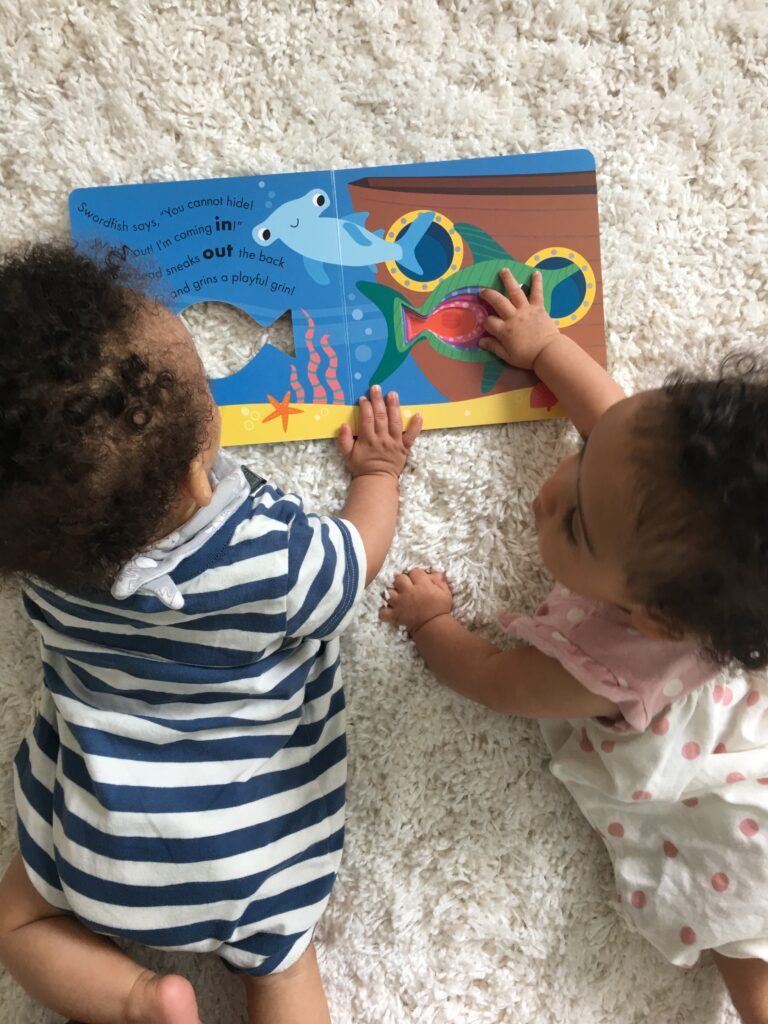
This collection ideas are all super easy to set up. In fact I did many of them with my own children when they were infants, from balloon kicking, to Easter egg water play! All of these ideas use materials that are easy to access and help babies grow and develop.

How to Use this List
I have organized the list according to age 3-6 months, 6-9 months and 9-15 months, however, many of the activities can be interchanged and older babies would definitely enjoy many of the ideas listed for younger babies.
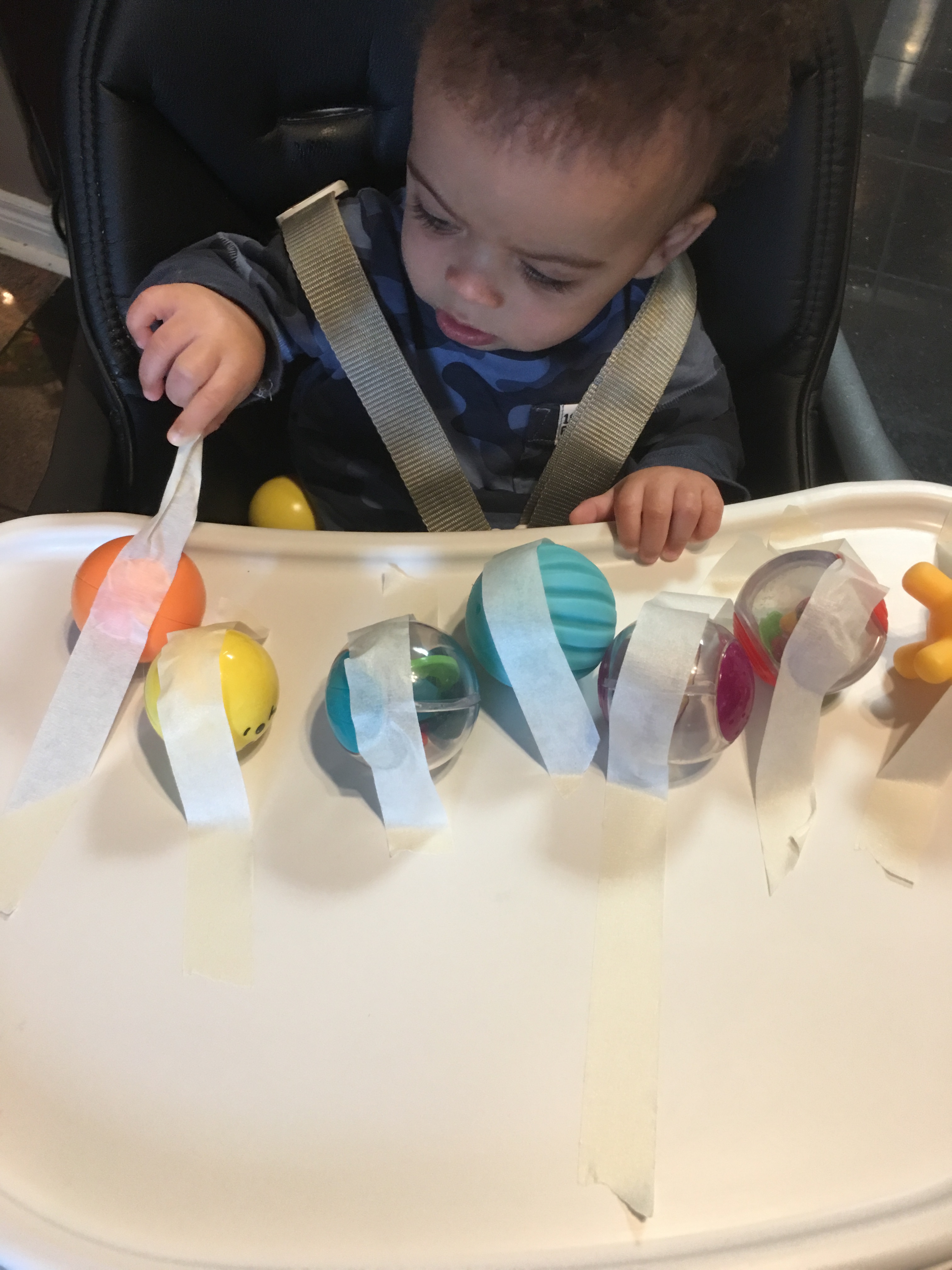
Looking for more mess free sensory ideas? Check of this list of 45+ Sensory Bags for Babies & Toddlers

OK, so let’s get started!
Easy Activities for 3-6 Month Olds

Muffin Tin Vegetable Sorting by Happy Toddler Playtime
SIMPLE GRASPING PLAY FOR 3-6 MONTH OLDS by Cando Kiddos
Balloon Kicking by Laughing Kids Learn
Polka Dot Sensory Bag by Mama Papa Bubba
Yarn Activity Gym by Happy Toddler Playtime
Add colourful yarn to your baby’s activity gym.

Star Box Sensory Play for Infants by Where Imagination Grows
12 Sensory Baskets for Babies by Pastels and Macarons
Jumbo Pasta Tub by Life Mama Bear
SENSORY PLAY FOR BABIES WHO PUT EVERYTHING IN THE MOUTH by Cando Kiddos
Easter Eggs and Water Play by Happy Toddler Playtime
Place Easter eggs and a small amount of water in a shallow fishing. Place your baby on a pillow in front of the dish and allow them to touch the water with their fingers trying to move the colourful Easter eggs.
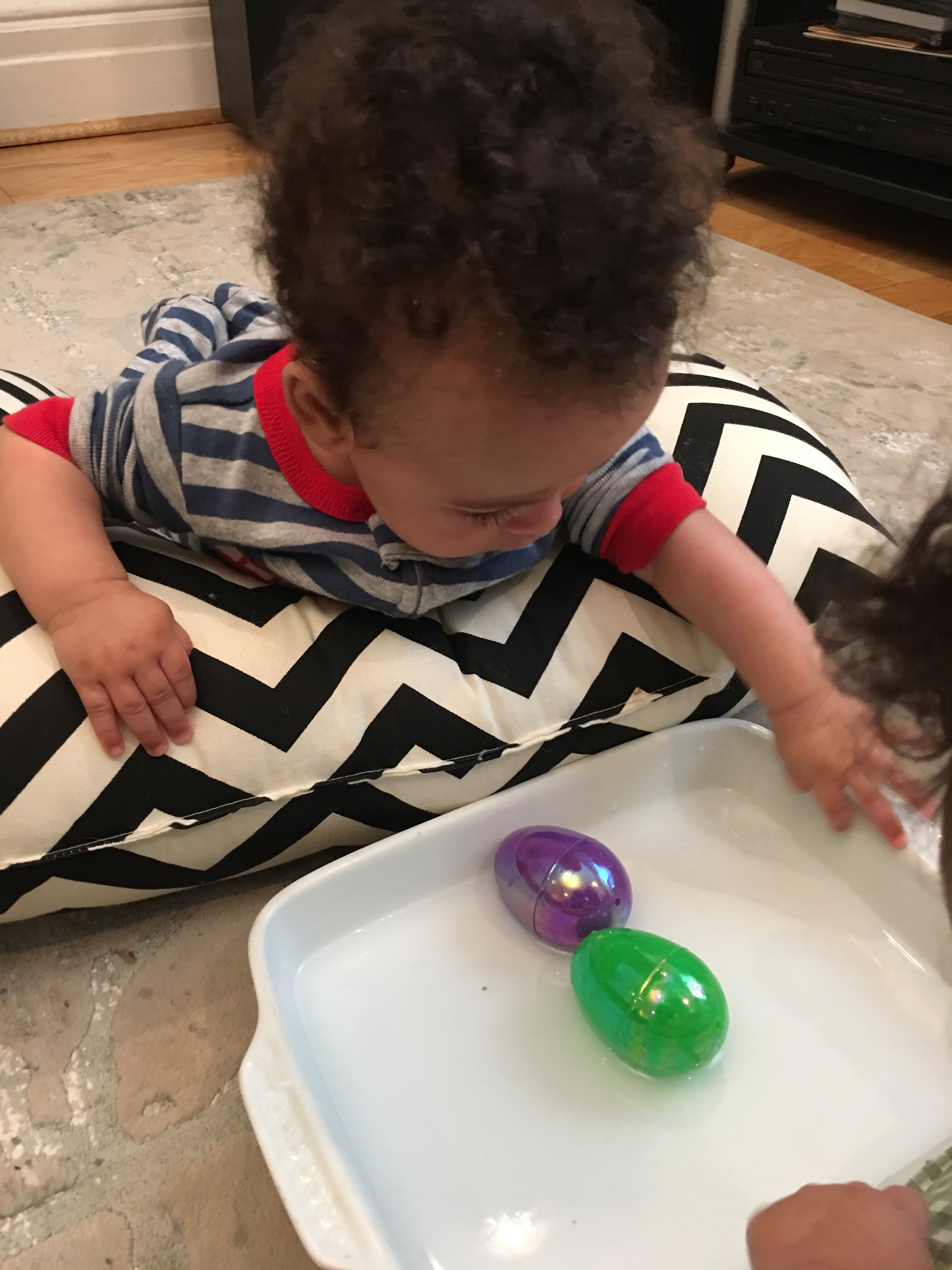
3 Learning Activities For Your 3 Month Old Baby by Mom Junction
Five Sensory Experiences for Babies 4-6 Months Old by The Paige Diaries
RELATED… 18+ Easy Sensory Bins for Babies
Easy Activities for 6-9 Month Old Babies

Bottle Sensory Bin for Babies by Happy Toddler Playtime
Baby Water Play by Pink Oatmeal
Baby Letter Grab by Happy Toddler Playtime
Mini Water Blob by Kids Activities Blog
Jello Dig Activity by Modern Homestead Mama
Puzzle Grab Baby Sticky Wall by Happy Toddler Playtime

Simple Ball Play by Simple Home Blessings
Tugging Lid for Baby Playtime By Busy Toddler
Baby Ring Grab Sticky Wall Activity by Happy Toddler Playtime
Sensory Forts for Babies by Messy Little Monsters
Baby Play: Circle Treasure Basket by The Imagination Tree
RAINBOW BOTTLES/MUSIC SHAKERS by Kids Craft Room
Easy Activities for 9-15 Month Old Babies

Green Pea Sensory Bag by Happy Toddler Playtime
Mess Free Fall Painting by Happy Toddler Playtime
Bubble Wrap Art by Arty Crafty Kids
Flip Top Peekaboo by Happy Toddler Playtime
Spider’s Web Discovery Basket by A Train Driver’s Wife
Playdough Sensory by Happy Toddler Playtime
Mini Rainbow Sensory Bottles by The Kavanaugh Report

Corn Sensory Bin by Happy Toddler Playtime
Peeling Tape by Making Danish
Mushy Green Pea Sensory Bin by Happy Toddler Playtime
Open Ended Play with Wet Chalk by Lessons Learnt Journal
Puzzle Peek-a-Boo by Happy Toddler Playtime
Push Pull Q-Tips by Jannine Mackinnon

Two Ingredient Taste Safe Finger Paint by Happy Toddler Playtime
UNDER THE UMBRELLA SENSORY PLAY by Best Toys for Toddlers
Rubber Duck Pond Sensory Bag by Happy Toddler Playtime
Mess Free Easter Egg Painting by Happy Toddler Playtime
Exploring Hot and Cold by Mama Papa Bubba
Bubbles Sensory Bags by Happy Toddler Playtime
Taste Safe Sensory Bin by Happy Toddler Playtime
Fun Seasonal Activities for Babies

Valentines Ball Drop by Happy Toddler Playtime
Baby Valentines Sensory Bin by Happy Toddler Playtime
Turkey Sensory Bag by Happy Toddler Playtime
Turkey Sensory Bottle by Happy Toddler Playtime
Simple Christmas Sensory Bin for Babies by Happy Toddler Playtime
Jingle Bell Egg Shakers by Happy Toddler Playtime
Mess Free Snowman Painting by Happy Toddler Playtime
Snowflake Drop by Happy Toddler Playtime
Looking for more fun and easy things to do at home with your baby? Check out these fabulous resources:
- 27 Easy Things To Do At Home With Your 12 Month Old
- 18+ Easy Sensory Bins for Babies
- 45+ Sensory Bags for Babies & Toddlers
Ag e Suitability
This activity is good for babies aged 3 months and up. My kids are 5, 5 and 8 years old.
The mess level for this activity is medium.
Difficulty to Create
Skills developed.
Language development, shape recognition, color recognition, hand-eye coordination, fine motor skills, imaginative play, creativity.
Play2Learn Toddler & Preschool Programs for Curious Toddlers
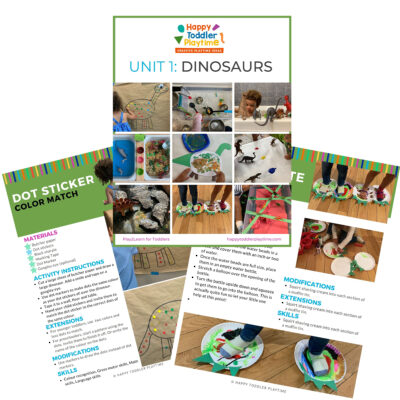
There is no limit to your toddler’s energy and curiosity. That energy and curiosity although a joy can be challenging at times. Their interest in just about everything around them is what makes them great learners. One and two year olds can soak up so much just from their senses!
But as a teacher or parent that thirst for learning can be exhausting. That is why I created this toddler and preschooler program. To help you get the most out of this time with your curious toddler without having to come up with creative ways to play and interact with them.
Play2Learn for Toddlers includes 20 Units for toddlers. Each 2-week toddler unit has 20 super easy to set up and engaging activities for toddlers 18 months to 3 years.
Play2Learn Preschool which includes 20 Units for preschoolers. Each 2-week preschoolers unit has 20 unique and easy to set up and engaging activities for preschoolers 3 years to 5 years. That’s over 800 learning activities for your toddler and preschooler at your fingertips! So many ideas you and your child will never be bored again!
These toddler and preschool lesson plans and activities will definitely keep you and your toddler and preschooler busy playing and learning!
Click here for more information: Play2Learn
Book: Exciting Sensory Bins for Curious Kids

Did you know I wrote a book of sensory bins? Click here for more information Exciting Sensory Bin for Curious Kids . Or grab your copy at Amazon .
Boring afternoons are made exciting with awesome animal-based bins, like Salty Shark Bay or Yarn Farm. Pretend play bins like Birthday Cake Sensory Play or Bubble Tea Party encourage creativity and imagination. And your kids will have so much fun they won’t even know they’re getting smarter with STEAM (science, technology, engineering, art and math) activities like Sink or Float Soup, Magnetic Letter Hunt or Ice Cream Scoop and Count.
Designed for toddlers 18 months and up.
Book: Super STEAM Activity Book for Kids
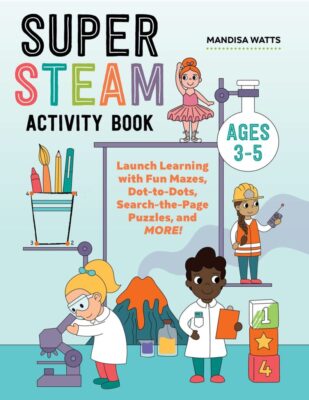
Learning all about science, technology, engineering, art, and math sets kids up for scholastic success―and it can be so much fun! Watch kids enjoy building STEAM skills as they color friendly fish, help water find its way to tree roots, solve math problems with mazes, and more.
Find out more and grab your copy here .
Designed for preschoolers 3 years old and up.
Book: Big Book of Riddles for Kids
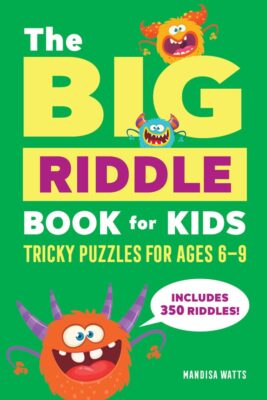
Riddle me this: What’s an exciting way to practice critical thinking while having a blast? The Big Riddle Book for Kids , of course! From hilarious puns to tough brain teasers, kids can build problem-solving skills with hundreds of riddles tha. t show them how to think outside the box.
- 350 riddles for kids —Have hours of fun with riddles, puns and jokes, and math and logic puzzles that’ll get their wheels turning!
- Level up their skills —Riddles get trickier as kids progress through the book, challenging them as they get better at solving puzzles!
- Double-check their work —Kids can check their answers in the back of the book with a handy answer key.
Help children expand their minds while having fun with this puzzle book for kids!
Designed for kids ages 6 years old and up.
TV Show: Curious Crafting
I’m so excited to share my crafting TV show Curious Crafting which launched in July 2022 on TVOkids and TVOkids YouTube ! Season 2 aired in August 2023! My show was also nominated in 2023 for Best Live Action Preschool Series by the Youth Media Alliance Awards of Excellence.
Curious Crafting Season 1 is also now airing in Australia on ABC ! Watch it here !
Set in the ultimate crafting space, Curious Crafting is a short form pre-school age series about the joy of making crafts. I lead a rotating cast of adorable little preschoolers (including my own) making magic out of common household objects.
In each episode we transform recycled items into magical crafts like a milk carton school bus, paper bag puppet or cotton pad turtle. The crafters learn and laugh their way through each activity while demonstrating what their young imaginations can create.
Curious Crafting shares the adventure and joy of making art with takeaway lessons for creating crafts at home.
This show designed for toddlers and preschoolers 2.5 years old and up.
WILL YOU TRY ANY OF THESE ACTIVITIES WITH YOUR BABY? LEAVE A COMMENT AND LET ME KNOW WHICH ONE AND HOW IT WENT?

Filed Under:
Other posts you may like....
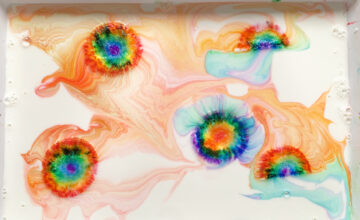
Rainbow Milk Experiment

Fizzy Dinosaur Eggs
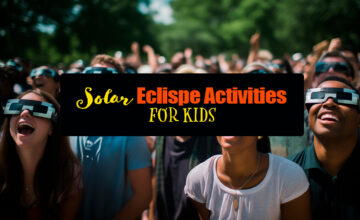
Solar Eclipse Activities for Kids

Easter Egg Sensory Bag
Review and rate this post cancel reply.
I love hearing from you! Submit your question or review here. Your email address will not be published. Required fields are marked*.
This site uses Akismet to reduce spam. Learn how your comment data is processed .
- Skip to primary navigation
- Skip to main content
- Skip to primary sidebar
- Skip to footer
Rookie Moms
Pregnancy > Parenthood
15 Activities for Your 3 Month Old to Jump Start Learning!
- Facebook 101
- Pinterest 187
Long before your baby can roll, crawl, sit or stand, she’ll hit a plethora of smaller developmental milestones. Three months is a particularly exciting time because she’s spending more time awake and is busily discovering the world around her. You can assist in your 3 months old’s development through daily activities designed to stimulate her growth and development in five important categories:
- Social and emotional
- Fine motor skills
- Gross motor skills
- Communicating and imitating
Activities for Your 3 Month Old to Jump Start Learning!

Let’s take a look at some specific activities from each of these categories from which your little learner can benefit:
Social and Emotional Activities for a 3 Month Old
Your baby isn’t yet heading off to school to build friendships or practice using conflict resolution skills, but she’s already learning early social and emotional skills that will be the building blocks for those future endeavors. Give her a head-start with activities like:
Eye Contact
One of the best ways to build a social bond with your baby and teach her to be confident in interacting with others is to make eye contact as much as possible. Look her in the eye during feedings, while changing her and while singing songs.
Active Playtime
Let your baby know you enjoy spending time with her by actively playing together. Make sure to smile and laugh while interacting with her, as this builds her confidence in herself and her trust in you.
Meet the World

Introduce your three-month-old to the social world. Take her to the grocery store or post office with you ”“ anywhere she’s likely to encounter other people and experience new faces and voices.
Fine Motor Skills
All the movements we make using the small muscles contained in our hands are referred to as fine motor skill movements. They help us do things like reach, grasp and hold objects as we grow, and babies begin developing these skills from birth. At three months, there is a surge in fine motor development, and you can help your baby meet important milestones through activities like:
Reaching Games
Lay baby on her back and hold a toy above her, just within reach. Encourage her to reach up for it and swat at it, grasping it if she’s able.
Clapping Songs
Sing songs like pat-a-cake and clap baby’s hands for her. Let her watch you clap your own hands, too.
Toy Grasping Activities for Your 3 Month Old
This one can be done while baby is on her back or during tummy time. Place toys at her sides, within reach, so that she can practice grasping them and bringing them to her mouth. (Reminder: Babies can choke on any toy small enough to fit through a toilet paper roll, so only use baby-safe toys.)
Gross Motor Skill Activities for a 3 Month Old
When we use the large muscle groups in our arms and legs to do things like walk and run, we’re using gross motor skills. Babies begin developing this important skill-set very early on, and they can make considerable progress at three months when exposed to activities like:

Lay your baby face down for tummy time, and encourage her to lift her head and look at you. Use brightly colored toys or your own face to help her look straight ahead, to the left and to the right.
Supported Sitting
Baby can also practice using her neck muscles to support her own head while in a sitting position. You don’t need any special equipment either; simply sit her on your lap and support her waist and chest with your hands as she works to control her head.
Place baby on her back and lay a soft toy on her tummy. This will encourage her to tuck her chin and to reach for and grasp at the toy. If she’s wearing button-up clothing, you can even open a button and tuck a stuffed animal partly inside to keep the toy in place more easily.
Communication and Imitation Activities for a 3 Month Old
Babies learn everything they know about the world through us. When they copy noises we make or facial expressions we use, they are learning important communication skills. Help their development along with activities like:
Follow the Voice
Encourage your three-month-old to follow your voice as you move to different parts of the room and call her name. This helps her focus on your words and tone and encourages her to pay attention to you.
Dictate Your Day
The more exposure your baby has to language, the easier she’ll tend to develop communication skills of her own. Talk to her throughout the day about whatever you’re doing, even if it’s something mundane like folding laundry. It’s all new and exciting to a three-month-old!
Baby Mimicking
Babies don’t automatically know that sounds have meaning. Encourage your baby to imitate your sounds by imitating any sounds she makes at you. This tells her that making sounds is a two-way street, and establishes the baseline for interpersonal communication.
Babies are taking in the world around them all day. You can actively foster learning through activities like:
Hold a toy or book in front of baby and move it slowly up and down and from side to side. This encourages her to track the object and hold focus. You can also do this with your hand or face!
Name-Calling Activities for Your 3 Month Old
Use your baby’s name often when you’re speaking to her; include it in songs, rhymes and stories. Her name will be one of the very first words she attaches meaning to as she begins to understand language.
Sensory Experience Activities for Your 3 Month Old

Provide different textures for your three-month-old to feel. You can use a store-bought sensory board, but you can also create your own sensory experiences for baby by exposing her to textures like carpet, grass, a soft blanket or your favorite cozy sweater.
Next time you catch yourself thinking your three-month-old is too young for scheduled activities, remember how quickly her brain and body are developing every day. The above activities will keep her interest and encourage growth in important areas while pulling double duty in an important way: each of these activities ”“ and the time you spend doing them ”“ also strengthens the growing, life-long bond between you and your child.
A Great Education Activity that grows with your baby from 3 months old – 3 years old
Monti Kids is one of our favorite things over here at Rookie Moms. They say that 85% of brain development happens in the first three years. Monti Kids provides educational play from birth to age 3 will help fulfill and expand your child’s potential. Every 3 months you will be provided a new set of educational toys for your baby as they grow and mature. Use promo code: Rookie50 for $50 OFF your first purchase –
Level 1 Ages 0 -3.5 Months

- An adjustable wooden Activity Gym designed to hang Montessori mobiles and toys at the perfect height to engage your baby.
- 4 classic Montessori mobiles to develop your baby’s visual skills and focus.
- 4 reaching, grasping and kicking toys to build strength & motor skills.
- Two rattles sized perfectly for your baby’s hands.
Join our Rookie Moms Facebook Group for advice from other mamas & to find moms in your same stage of motherhood!
You May Also Like:
The 10 Best Baby Push Walkers for Your Baby on the Move
101 Baby Quotes that are Adorable, Funny, and Way Too Honest
When & How to Help your Baby develop the Pincer Grasp

- Recent Posts
- Best Double Umbrella Stroller– The Top 10 for 2024! - April 10, 2024
- How to Tackle Easter from a Toddler Mama [Toddler Easter Basket Ideas + Fun Activities] - March 19, 2024
- 19 Best Nursery Gliders of 2024! [Tested by Parents for Parents] - January 8, 2024
Don’t forget to sign up for our newsletter
Browse by age.
- Month 10-12
- Preschooler
Problem Solving
- Breastfeeding
13 BEST brain-boosting activities to do with Your 3 month old baby
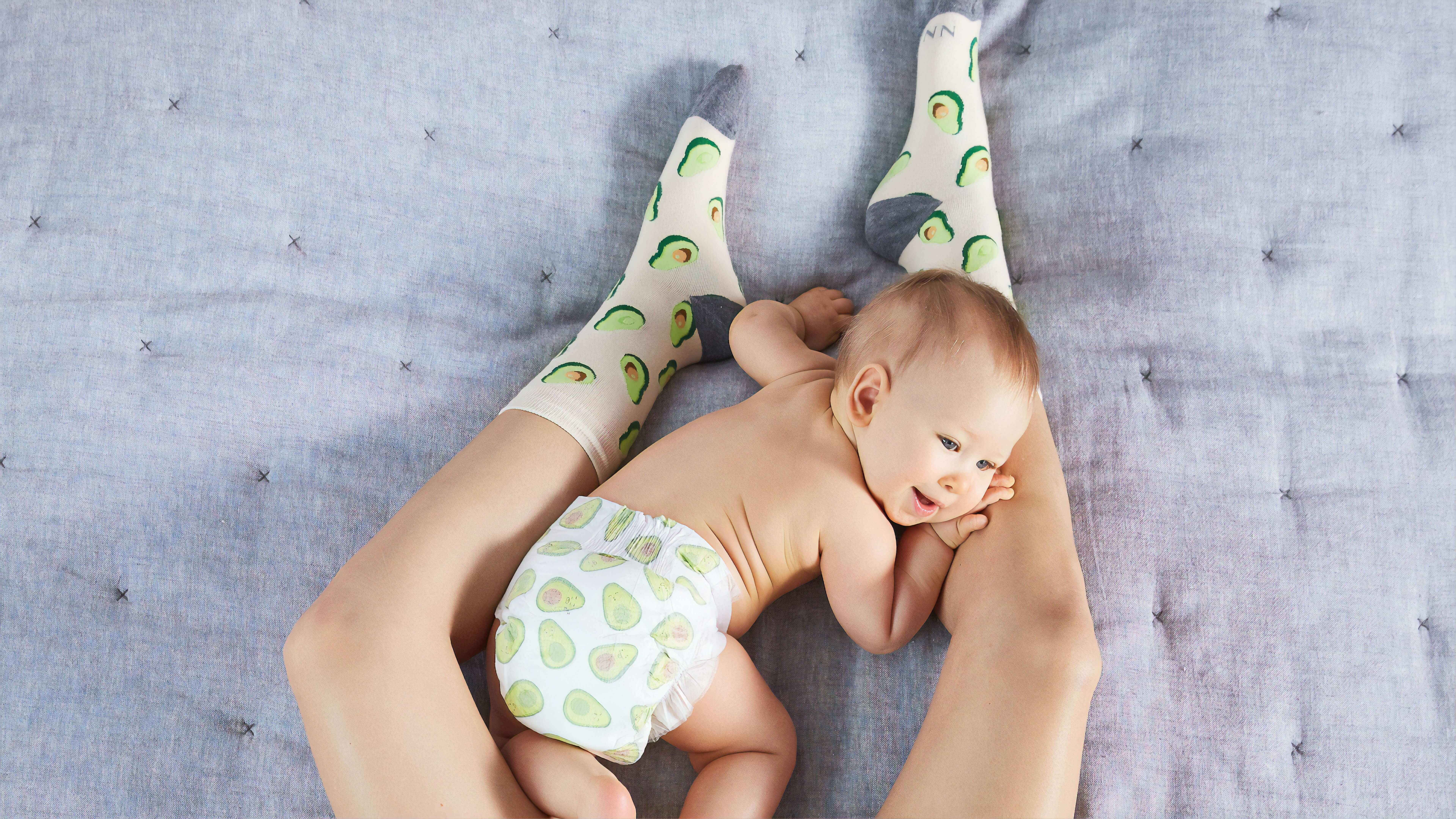
If you are looking for brain development activities for your 3-month-old baby, this post will give you tons of ideas for getting started.
Omg mama! you no longer have an infant! isn’t that crazy? Now, you probably get when people say: “Time flies.” It also means it is time to get playing with a purpose.
Embrace this time with them and have some fun using these activities to play with your 3-month-old baby to inspire some simple play with your baby, too! bonding opportunities as well as brain-boosting development for them.
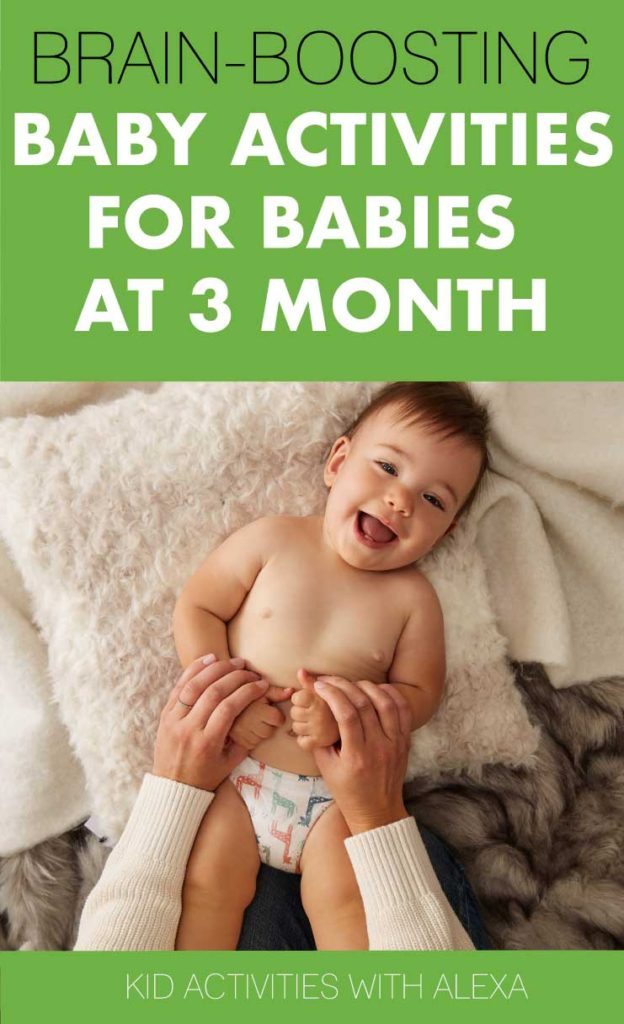
In order to fully take advantage of the activities, let’s talk a little bit about where your baby is developmentally. It is important that your baby moves towards reaching the next milestone, and the best way to do it is through games. Take this opportunity to bond and to teach. You got this, mama! This will be fun, so let’s get this started.
Developmental milestones at 3 months old
Babies this age spend more time awake and become more curious about their surroundings. They are getting physically stronger and better able to coordinate movements . Encourage the learning process by talking to your little one, responding to his or her vocal expressions, and providing colorful age-appropriate toys .
Key Abilities
- Moves legs and arms off of the surface when excited
- Uses his/her vision to follow black and white or brightly colored objects
- Is able to open and shut hands
- Is able to bring hands to mouth
- Is able to be on the tummy for short bursts of time
brain development activities for 3 months baby TO BOOST FINE MOTOR SKILLS
reaching for toys.
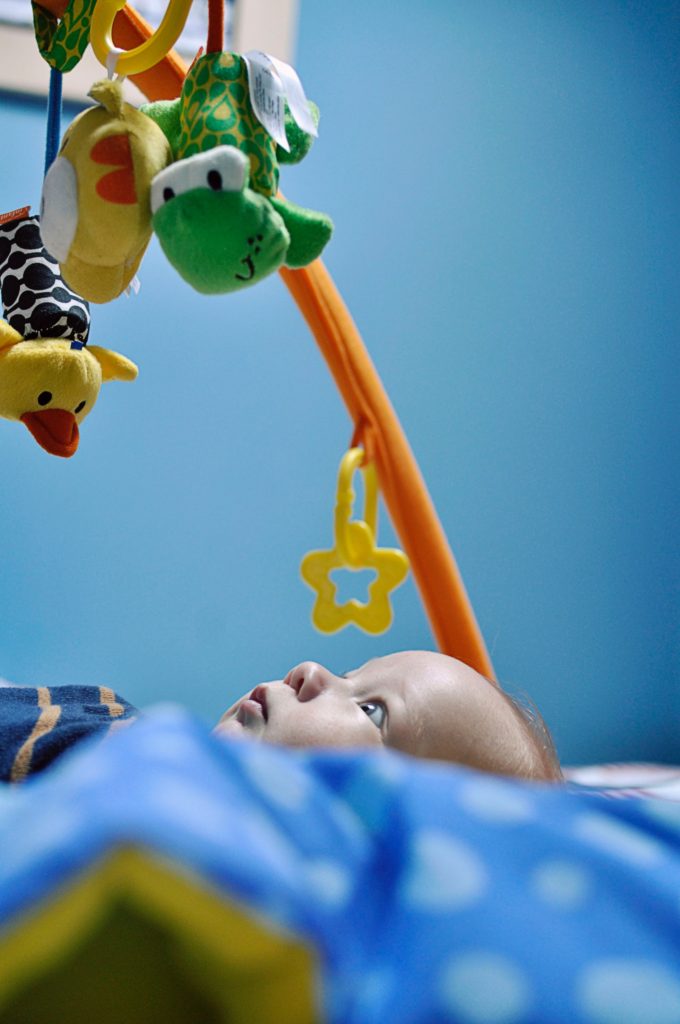
Toys can be so much fun now that your baby is more active. They love to track colorful objects, bold patterns, and crinkling noises. Use your play baby gym area to show different toys. Change these often to keep your baby interested and engaged. Print these free black-and-white contrast cards and tape them above the baby gym or the mobile over the crib. Enjoy how your baby will be so attracted to the high-contrast images.
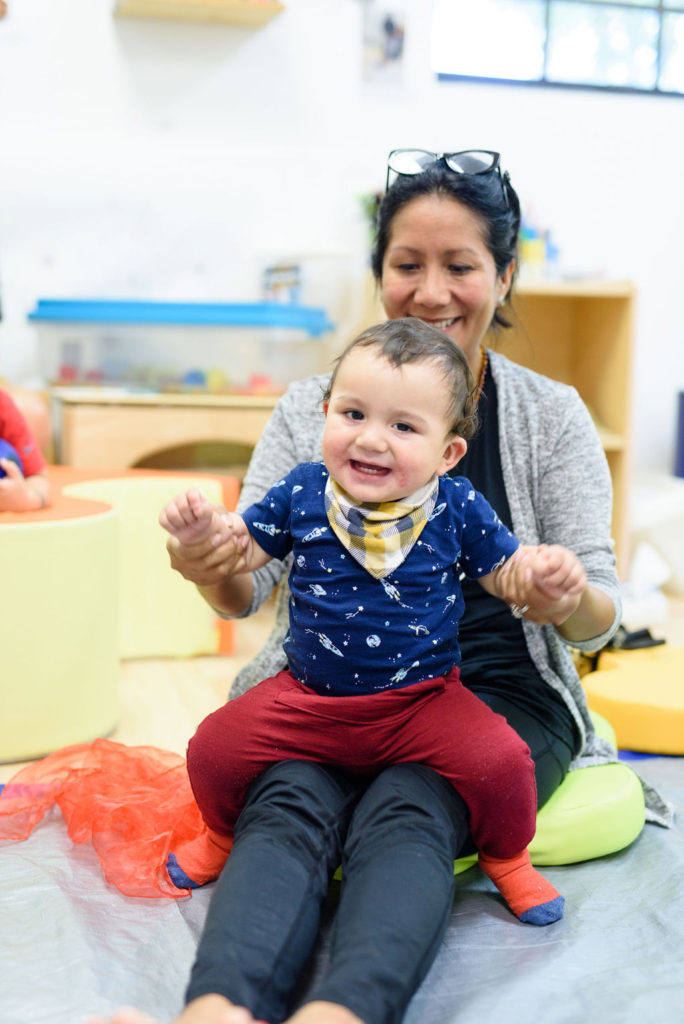
Brain development activities for 3 3-month-old baby can be as simple as singing to expose them to language development .
Rhymes and songs develop language skills, and you can start with these baby three-month activities. baby they are a great way to teach those beginning sounds through verses and repetitions. Put your baby on your lap and sing to the tune of Pat-a-cake. As you sing, grab your hands over his hands and clap together.
Repeat this play with other songs like Humpty dumpty, Once I caught a fish alive.
Repetition of rhymes and stories is good for the brain, teaching how language works and building memory capabilities. Nursery rhymes help develop inferencing skills, both with encountering new words and in reading comprehension. Because these verses are made up of patterns, they are easy first memorization pieces. Parnbarnhill
gripping toys
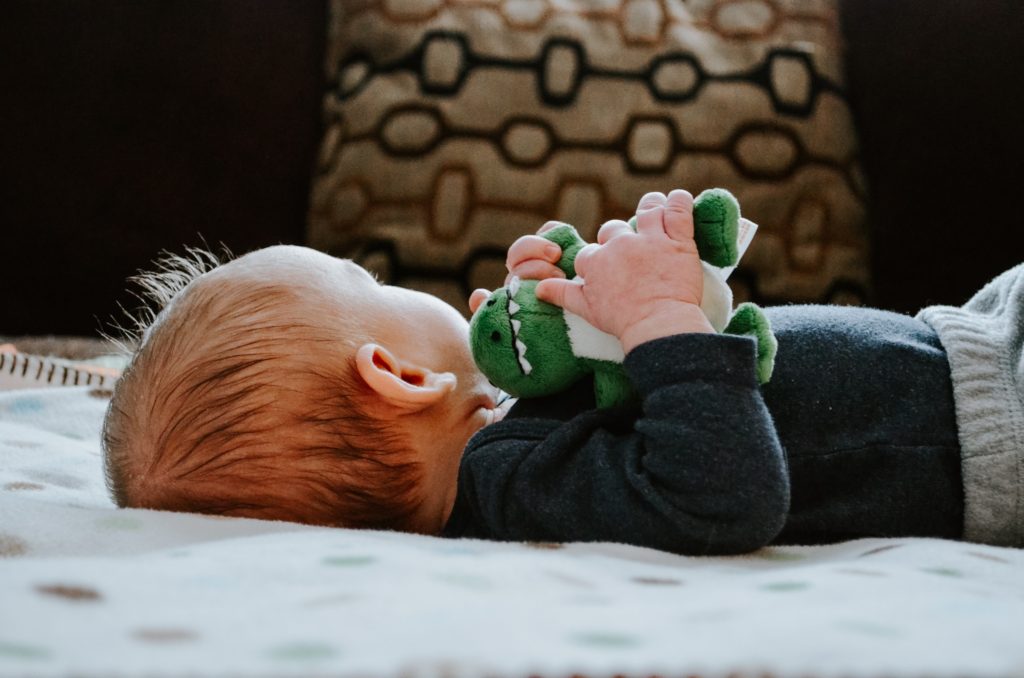
Your baby is working his eye-hand coordination and he is now opening and closing his hands. Take this milestone opportunity to create a fun game. Show a toy over his head and slowly bring it close to his hand. Wait until he clutches the toy and grabs it. Then try to pretend to pull it and have a little tug-a-war game. (Like this game? I have more where that came from! )
Baby Situps
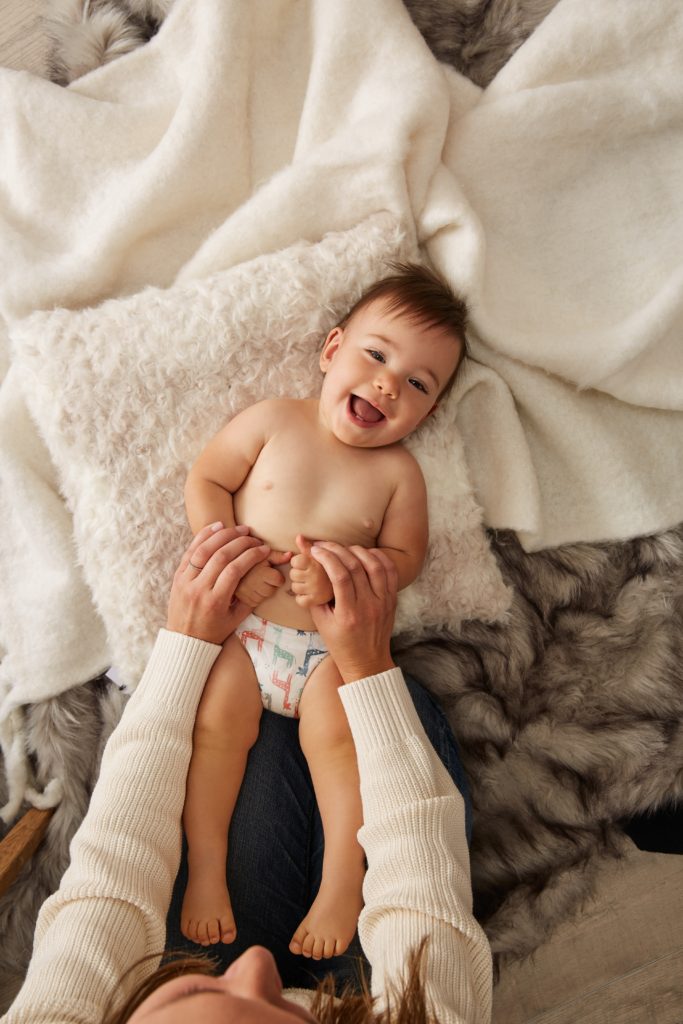
Baby sit-ups are a great way to strengthen your baby’s muscles and are also very fun for you and your baby. Grab your baby’s hands and slowly lift him up until he is sitting. Celebrate when he is sitting. Then, slowly lay him down until he is completely lying on the floor.
Practicing Tummy time
Tummy time at this age is my favorite baby 3-month activity to do. Some babies can start interacting with sensory bags and sensory bottles , and it is so much fun to watch them track the elements in the bag.

oh, tummy time ! the doctors say it, your mother says it, and everyone says it. Yet, sometimes your baby hates it. But it is true, I’m going to say it too. tummy time is super important. It is an important exercise to help strengthen the back muscles, the core muscles, and the arm muscles.
It prevents your baby from having a flat head and having to hear a baby helmet! Prop your baby on the floor and practice some tummy time. If your baby doesn’t like it, you can add a rolled-up blanket under the armpits to prop him up and help him. You can also download the tummy time tips guide to make it more fun.
CAn you follow MY voice
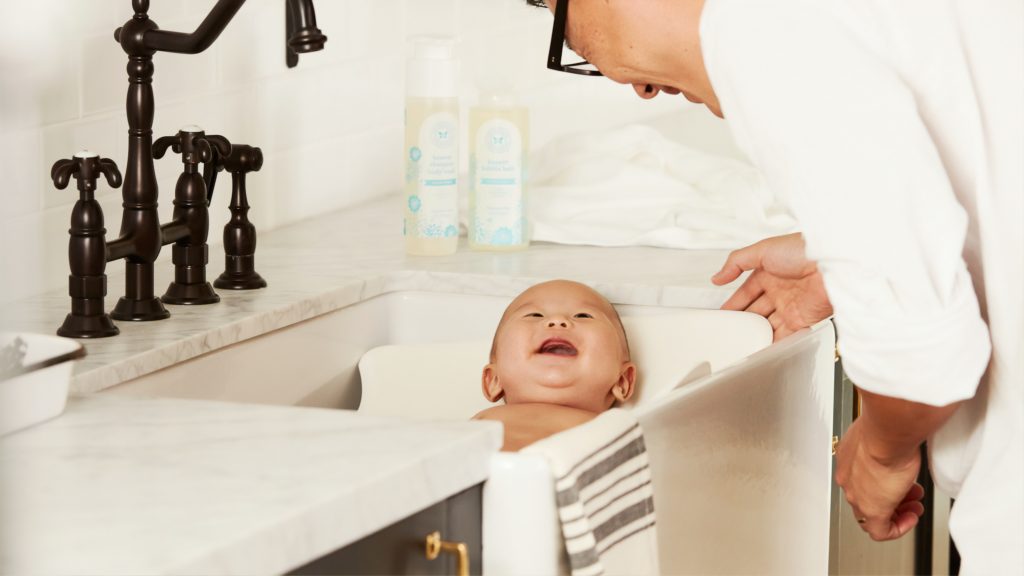
One of the things that are most familiar when being outside of the womb is your voice. It is familiar, it is home. Create that comfort by talking a lot to your little one. Take this opportunity also to make it a fun game, move around as you call your baby’s name, can he follow your voice? you can even sing his favorite song as you do so.
activities with 3 month old baby for language development
Encourage imitation.
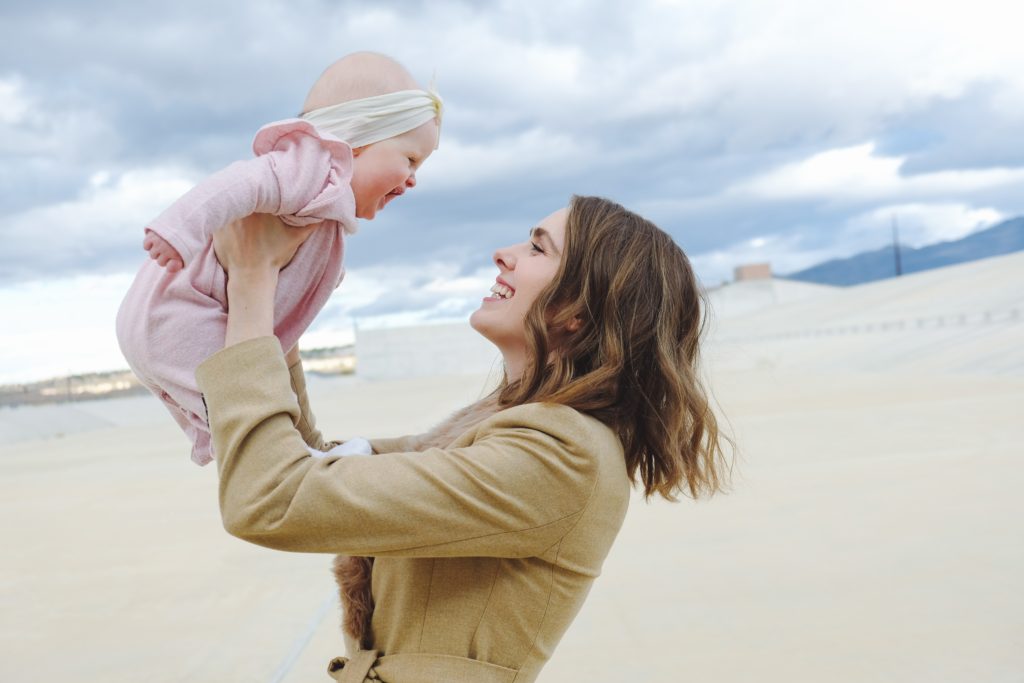
This is a special time to bond with your little one. Play is a great way to do this. At three months, your baby will coo and interact with you. She will make noises and watch for your reaction. Laugh at her cooing, pretend you are having a conversation, and, to make things even more fun, imitate whatever she does. This is the first step in teaching her the basics of communication and conversation.
activities with 3 month old baby can be a lot of fun!
tracking toys and people
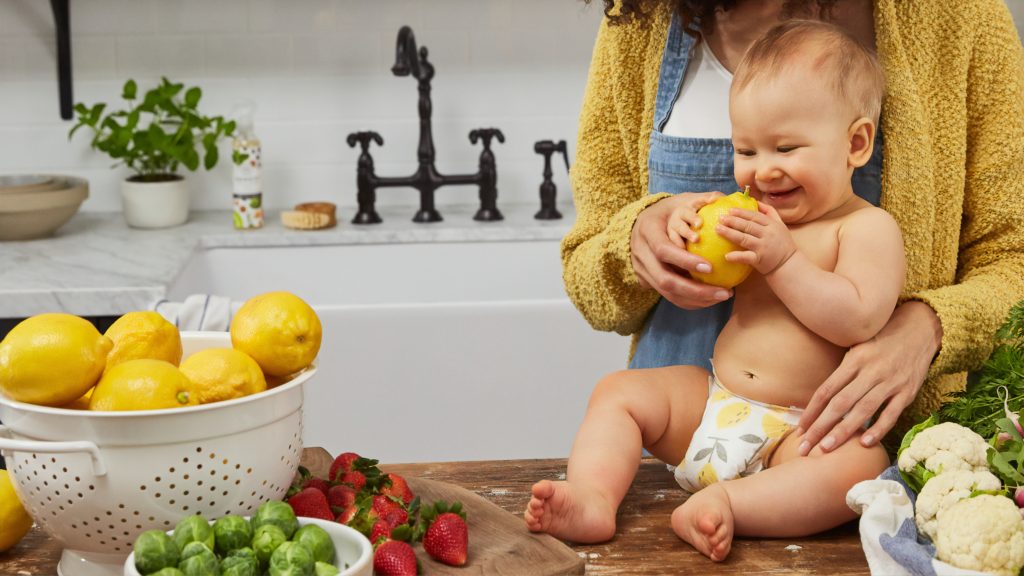
Babies at 3 months are still working on developing their eyes and tracking objects. Take this as a learning opportunity and sensorial fun activity and go around the house collecting some lemons, toys or things that make lots of sounds and move them around, side to side, up and down. Your baby will love tracking them and learning so much about the world working through his senses.
Learning his/her name
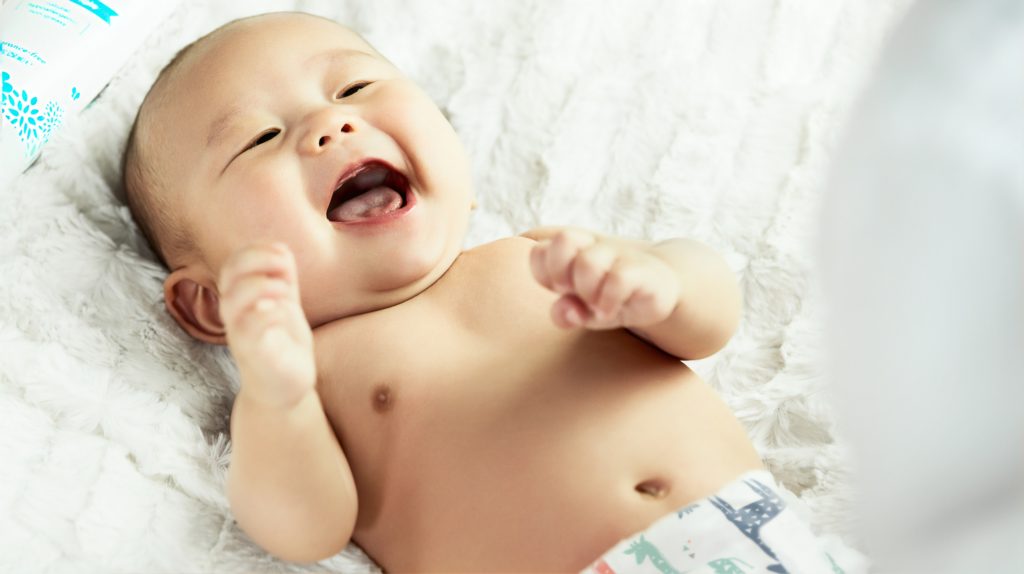
It is a perfect time to start getting your baby used to that name you gave him. After all, I’m sure you took a long time choosing the perfect name for him/her.
His/her name is one of the very first words she will begin to attach a meaning to.
Incorporate his/her name when possible. Sing songs using her name. One of my favorite songs is to use the “B.I.N.G.O” song and replace the lyrics to my son’s name.
Mirror mirror on the wall

Who knew that something so simple could be a lot of fun? why? because at this age they are so attracted to faces, even their own on a mirror – as they won’t know is their own reflection yet. Give them an unbreakable mirror and see what happens. It will be the cutest thing as they start smiling to themselves.
Explore touching different textures
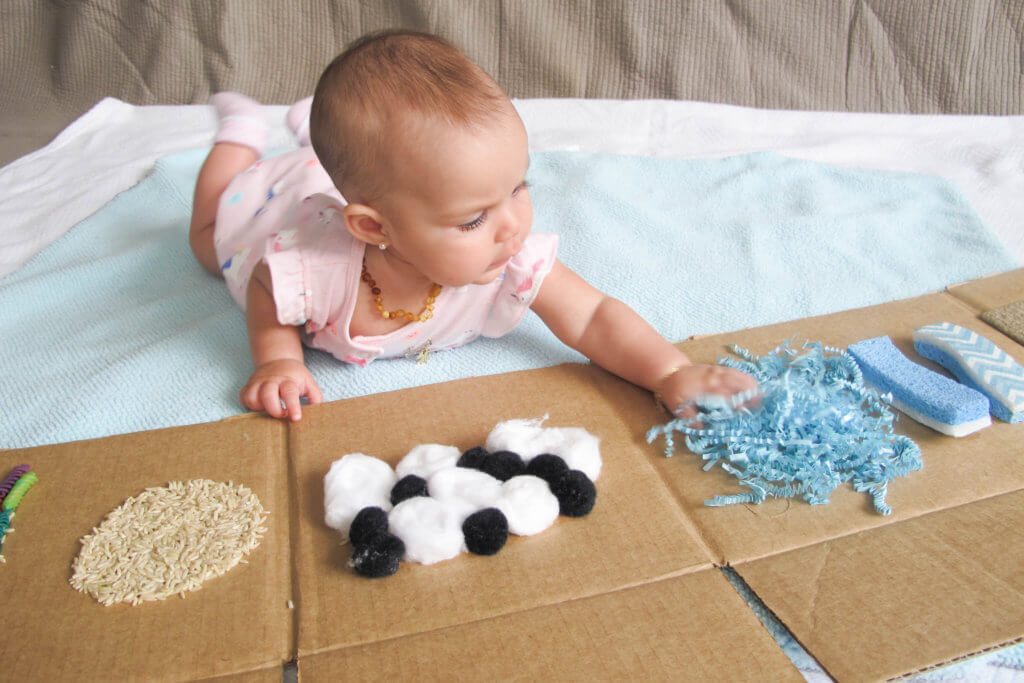
Exploring different textures is essential for development during the younger years. It is a way for your baby to practice tummy time and actually make it interactive. You can make a busy board like this by collecting different textures and gluing them onto cardboard. This is an empty diaper bag box, and I glued some dried colored pasta, raw rice, cotton balls (in black and white contrast), some fuzzy paper, and cut out soft and hard strips of sponges. Make sure that whatever you use is securely glued and the baby doesn’t put it in his/her mouth.
Get Up and Dance with me!
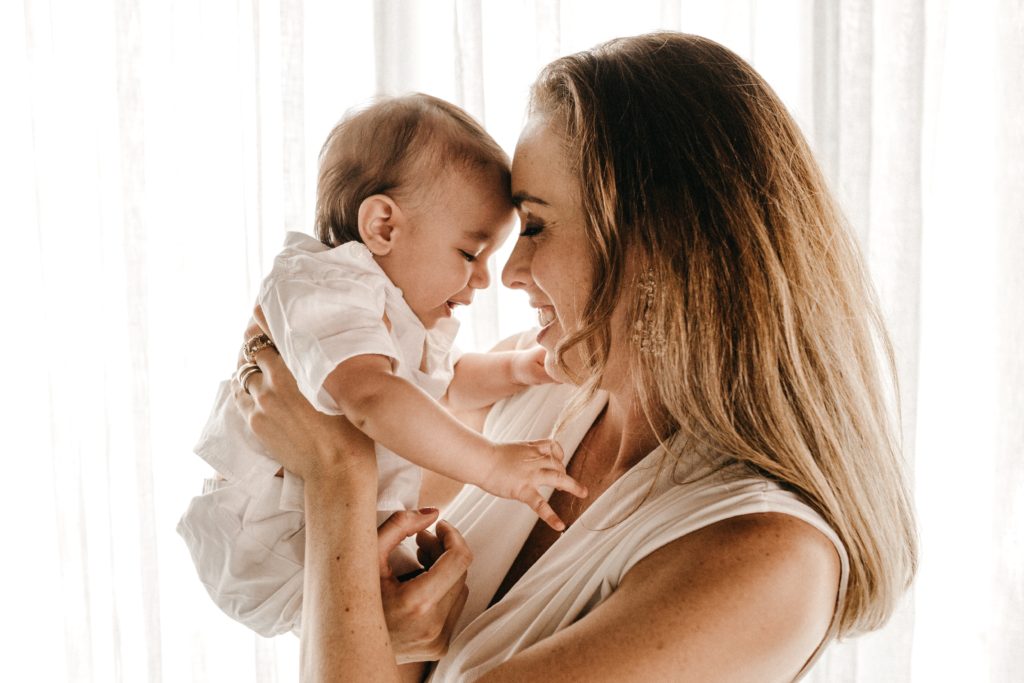
That’s right! it is time to get up and dance. Choose your favorite song – you know, the one that you would probably dance at the top of your lungs and sing in the car when no one is looking.
Grab your baby and start dancing! As you hold your baby in your arms, explore different movements. Move them up and down, side to side, round and round. Bounce them and move slowly and fast. All this movement is stimulating the development of the vestibular system. This system, located close to the ear is responsible for our balance and the awareness of our body in space.
Riding a bicycle
During my mommy & me classes, I always start with a movement song. This allows the babies to stretch and get their blood flowing. One of my favorite exercises is pretending they are riding a bicycle as you circle and move their legs around. I use this bicycle song and just act out the movements using the baby’s legs and arms.
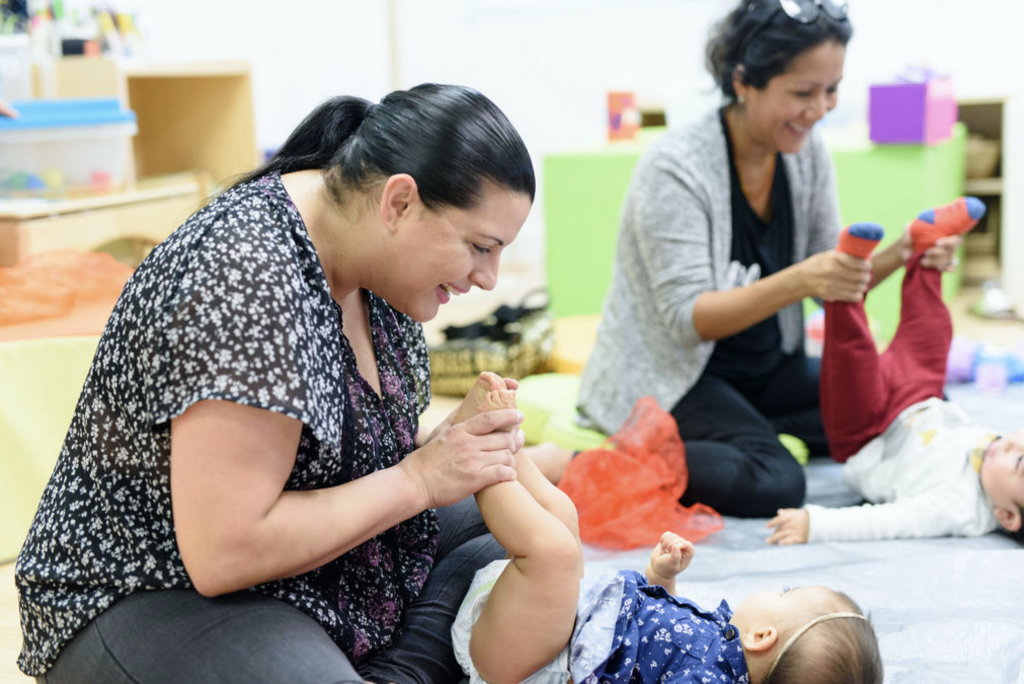
So there you have it! a ton of baby 3-month activities for you to enjoy! actually, 13 different activities to play with your 3-month-old. That’s like 3 different activities a week you can do and always keep your baby amused! And remember, as a bonus, these are all great developmental activities so you are having a meaningful play. They are fun and offer a great bonding opportunity with your little one!
Share With Friends!
Terms and Conditions - Privacy Policy
Month 3: Top 10 Sensory Activities for your 3 month old baby
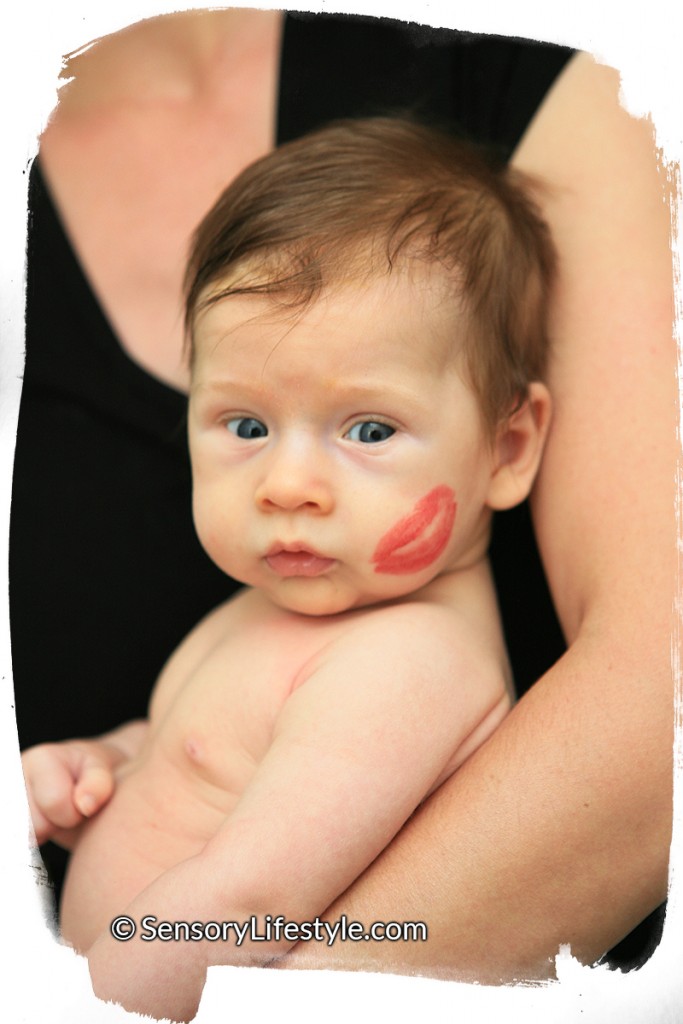
Home » Baby » Baby Activities » Month 3: Top 10 Sensory Activities for your 3 month old baby
· --> 8 min read
As an Occupational Therapist and a Mom I have put together top activities for your 3 month old baby. They will focus on creating a bond between you and your little one as well provide opportunities to strengthen their brain and motor development.
Hello Everyone!! You guessed it. It’s me, Josh. I am so excited that I am now 3 months old. I have more time to play and hang out outside. My mom started taking me to yoga classes with her. She does all these weird things. She puts her legs up high in the air and then her hands stretch up high. It looks like they almost touch the ceiling. I get lifted and bounced around. It’s lots of fun! She also sings lots of songs and waves these scarves around my face. My favorite is when they are flying from up high and land on my face. It’s so fun! They tickle my face and when I open up my eyes I usually see her in different colors. Sometimes she is red, sometimes blue and other times green. Really depends on the color of the scarf. Anyway I am off to another class with mommy. See you next month…
I hope you enjoyed Josh’s 3rd month story. Look out for more stories in the coming monthly activities posts.
Development
What to expect from your 3 month old
Your 3 month old is growing and becoming more aware every day. Here are a few things that you may see your 3 month old do:
- Your baby’s neck strength should be improving. By now when you hold them upright, you should see very little or no head wobbling.
- Their upper body strength has improved. They should be able to lift their head and chest with their arms while laying on their stomach.
- Your 3 month old can stretch their legs out and kick when laying on stomach or back.
- They can push down with their legs when feet are placed on a firm surface.
- Their hands can open and shut, come together and they can swipe at a dangling object.
- They can briefly grab a toy or a rattle that may quickly land in their mouth.
- Your baby’s hearing and vision continues to improve. They will turn their heads and smile at the sound of your voice.
- They may start using hands and eyes in coordination.
- Your baby may amaze you (and themselves) by rolling from their stomach to their back. Don’t stress if this hasn’t happened yet.
- Your baby’s communication is changing. You may be hearing more cooing or making vowel sounds such as ‘oh’ or ‘ah’. Make sure you acknowledge these sounds. You can repeat them and then expand by telling them about what you are doing.
Activities for your 3 month old baby
Hopefully you now have a bit more energy and both you and your little one have more of a daily routine. This can help greatly in regulating your little one.
Whenever you have the opportunity to play, try the below activities for your 3 month old. Through play you can help your baby’s development both mentally and physically.
Here are my top 10 sensory activities for your 3 month old baby. These activities have been tried and tested.
1. Tummy time
This continues to be an essential sensory activity in your baby’s everyday routine. It helps to build coordination and strengthens your baby’s neck, shoulders, arms and trunk. These muscles also help with the motor skills such as rolling over, crawling, pulling self up and sitting up. Read more about Tummy Time with your baby. So keep practicing this activity with your 3 month old baby.
That’s right! It’s time to get up, turn on your favorite tunes and dance away with your baby. The sillier you feel the more fun your baby is having. Not only is this activity lots of fun but it has many great benefits for your baby. As you hold them in your arms explore different movements. Move them up and down, side to side, round and round. Bounce them and move slow and fast. All this movement is stimulating the development of the vestibular system. This system is responsible for the awareness of our body in space.
You can dance in your living room, in front of the mirror or with other babies and their mamas. As you spin and move all around with your baby, make sure to stop and take a quick break every minute or so. This will let their body register the movements and ensure that they do not get over stimulated or tune out.
3. Baby moves
While doing yoga classes with my baby I had the opportunity to sing lots to him. I loved that these songs involved different hand motions. As you sing ‘The Wheels on the Bus’ or ‘If You’re Happy and You Know It’ you move their hands and legs. Move them to the middle of their body or pass their midline (the invisible line down the middle of their body). This will get you rewarded with lots of smiles. Additionally, it encourages the development of the fine motor and gross skills.
So lay your baby down on the floor, get down to their level. Pick your favorite tunes and start moving your baby. You can pick any of the children’s songs or something that you like to sing along to. Feel free to add some colorful scarves for some variation and color. You can sway the scarves from side to side, tickle your baby with them, or let them fall from above. Have fun singing!
4. Mirror mirror on the wall
This can be fascinating and so much fun to watch. Just prop an unbreakable mirror in front of your baby and see them react. Your baby won’t realize that it’s actually their image until much later. However that doesn’t matter as you will be able to see lots of fun expressions on your baby. They will love to stare at their own reflection or anyone else’s really. They may even try to swipe the mirror or give you a big smile.
5. Peek-a-boo
This game starts to teach your baby about object permanence. Object permanence is understanding that objects or people still exist even when we can’t see them. Understanding this concept is an important cognitive milestone. To review the specific stages of object permanence, check out the Wikipedia page.
So how do we play? At this age the game is mainly one sided. Nonetheless still lots of fun. First, catch your baby’s interest. Then, cover your eyes with your hands, then open them up and say ‘peek-a-boo’. Remember to sound excited and make it fun for them. Another idea is to hide your baby’s face behind a scarf and ask where they are. Then pull it away and say ‘here you are!’ or ‘peek-a-boo’.
6. Grasp and Hold
Your little one should be able to grasp an object for a short period of time. So go ahead and encourage their eye hand coordination skills. Hold out different toys or objects and see if they will reach for them. Try to give them things that can be easily grasped. Don’t be surprised if the object quickly moves to their mouth. If it’s safe, allow them to explore it.
7. Let’s get rolling
Have you noticed your baby trying to roll from their stomach to their back? Try the following activity to support this skill.
While your baby is on their tummy sit in front of them with their favorite toy or rattle. Once you get their interest slowly move in the direction of the roll. You can gently support them at their shoulders and guide them through the motion. Move slowly and be gentle during this activity.
Get excited once they are on their back. Give them a break and try again later.
8. Seated Disco Dancer
This activity can help improve your baby’s head control.
Your position: Lay down on your back with your knees bent and feet towards your hips.
Baby’s position: Sit your baby on your tummy facing you. Rest their back against your thighs.
How to play : This activity is similar to the ‘Baby moves’ activity in this post. Main difference is your and your baby’s positions.
While your baby sits on your tummy hold their hands. Sing along to nursery rhymes while moving their hands. You can sing ‘The wheels on the bus’, ‘Patty cake’ and so on.
Make sure you watch for fatigue but otherwise have fun!
9. Ball fun

This is so much fun! For this activity it’s best to have a large exercise ball . This fun activity for your 3 month old baby provides lots of movement which stimulates the development of the vestibular system. This system is responsible for the awareness of our body in space.
As an OT I love this piece of equipment. As your baby grows, a variety of activities can be done on it. At this age you can use it three ways.
1. Bouncing: Sit on the ball with your baby secured in your lap. Ensure that your feet are flat on the floor. You don’t want to be rolling away anywhere.
As you hold your baby you can bounce up and down. To make it more fun you can bounce in front of the mirror. Also add some music to it. You can sing your baby’s favorite songs or try the following song:
‘And we bounce and we bounce and stop!’ ‘And we bounce and we bounce and stop!’
You can use any tune that you like.
Also make sure when you stop, you don’t move for at least few seconds. This will allow your baby register the movement.
2. Swaying: This is done in the same manner as the bouncing activity. Feet flat on the floor. Baby secure in your lap. Sing along as you sway with your baby side to side. You can use the following song:
‘And we sway and we sway and stop!’ ‘And we sway and we sway and stop!’
and so on …
You can alternate between bouncing and swaying.
Also make sure to stop frequently. This will allow your baby to register the movement and not get over stimulated.
3. Flying time : This is a lot of fun, but also a great activity to practice tummy time. Place your baby’s tummy over the ball, facing away from you. Hold your baby at the hips for stability and gently roll the ball back and forward, making sure he/she doesn’t slide off.
10. Out and about
Going outside for walks is great and very beneficial for you and your baby. To shake things up a bit, you can also get them to a park and lay them down on the blanket. You can lay them down on their tummy or their back. While laying on the tummy they can feel the grass with their hands and be entertained by you. While they lay on their back you can talk to them about the trees, the birds, the sky and the sun. Maybe about curious animals such as dogs or squirrels that creep towards you as they want to get a closer look at your baby. What a great way to explore your senses, bond with your baby and work at building language foundations.
There you have it. My top 10 Sensory Activities for your 3 month old. Many exciting activities you can do today to help your child develop better.
These are just a few activities that are bound to spark other ideas. Just remember that every new sensory experience is helping your child’s growth and development.
Remember: each baby develops at their own pace. If your child is not ready or not interested in this month’s activities, just try them again in a few weeks.
For feedback or further questions please leave a comment below.
Disclaimer: The activities in this blog are intended for sensory play. They are not a replacement for treatment of children with Sensory Processing Disorder, are not medical advice and should not be used in place of the care of a medical doctor or other qualified healthcare professional. These activities should be facilitated and supervised by an adult. All activities are to be performed at your own risk and in no event shall Sensory Lifestyle be liable for any damages.
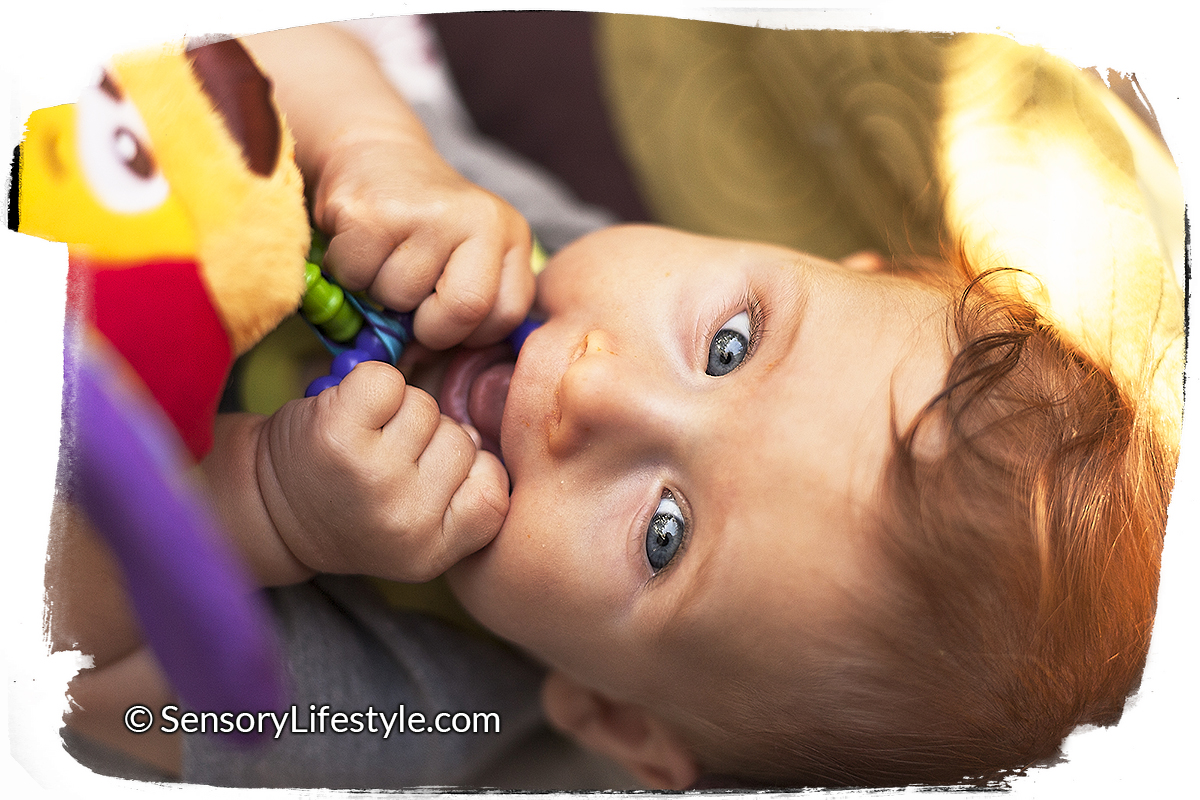
Month 4: Top 10 Sensory Activities for 4 month old baby

Exploring outdoors: Sensory Experiences at your fingertips
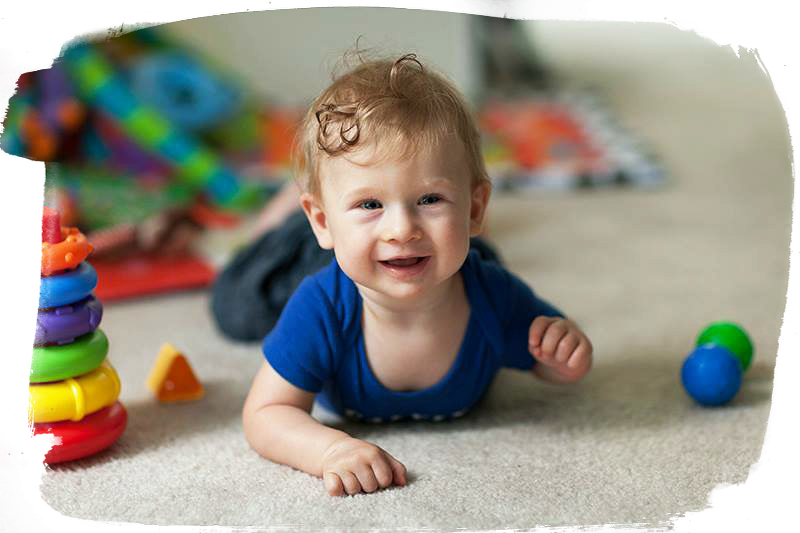

How to do Tummy Time with your baby
Read previous post:.
Traveling with your Toddler: 20 Activity Tips when flying
Flying solo can be stressful. All the organization and stress can be overwhelming. Flying with a toddler is much more...
How Wee Learn
Out of the box learning ideas, playful art, exploring nature, and simple living - that is How We Learn!
Learning Activities for 3 Month Old Babies
July 29, 2022 by Sarah 16 Comments
When my little ones were 3-month-old babies, I could not have written this post. I could not have formulated coherent sentences to write about learning activities for 3-month-old babies . And if I had found the time—and words—to write it (miraculously), I would have certainly opted to sleep.
But now with my youngest growing up way too quickly, I am able to head back and fill in some gaps in this space. We have loads of activities for toddlers , preschoolers , and even big kids —but not too many for the littlest learners.
I thought I would start right from the beginning with learning activities for 3-month-old babies (and if you are reading this with a little one younger than three months… Oh, mama… please, please go to sleep!).
I have also made a FREE printable for you of adorable high contrast animals. These are perfect for printing and using to build your baby’s coordination, tracking skills, and more! You can find that freebie below. I hope you love it!
Babies, of course, develop in many different areas all the time—emotionally and socially, absolutely—but I want to focus here on four specific areas of development for 3-month-olds:
Gross Motor
Communicating and imitating.
Fine motor skills for a 3-month-old are just beginning to develop. Little ones are just beginning to reach for objects, and some may be able to grasp and hold a toy briefly. If they do, that toy likely heads right for their mouth.
Gross motor skills for 3-month-olds focus on strengthening their little necks and backs. Time on their tummy (while rather controversial in some areas) continues to be recommended by Pediatricians here in Canada.
Communicating and imitating involves beginning to make a few noises and babies will begin to smile and laugh at about this time. You will likely see your baby respond to you when you make silly sounds and noises.
Learning is already being well established! Three-month-olds are beginning to track people and toys with their eyes and learn that their smiles and giggles can have an impact.
In each of these four areas of development, there is a ton that can be learned! Games and activities appropriate in each of these four areas are fun and wonderful ways to promote bonding as well as begin their journey on a lifetime of learning.
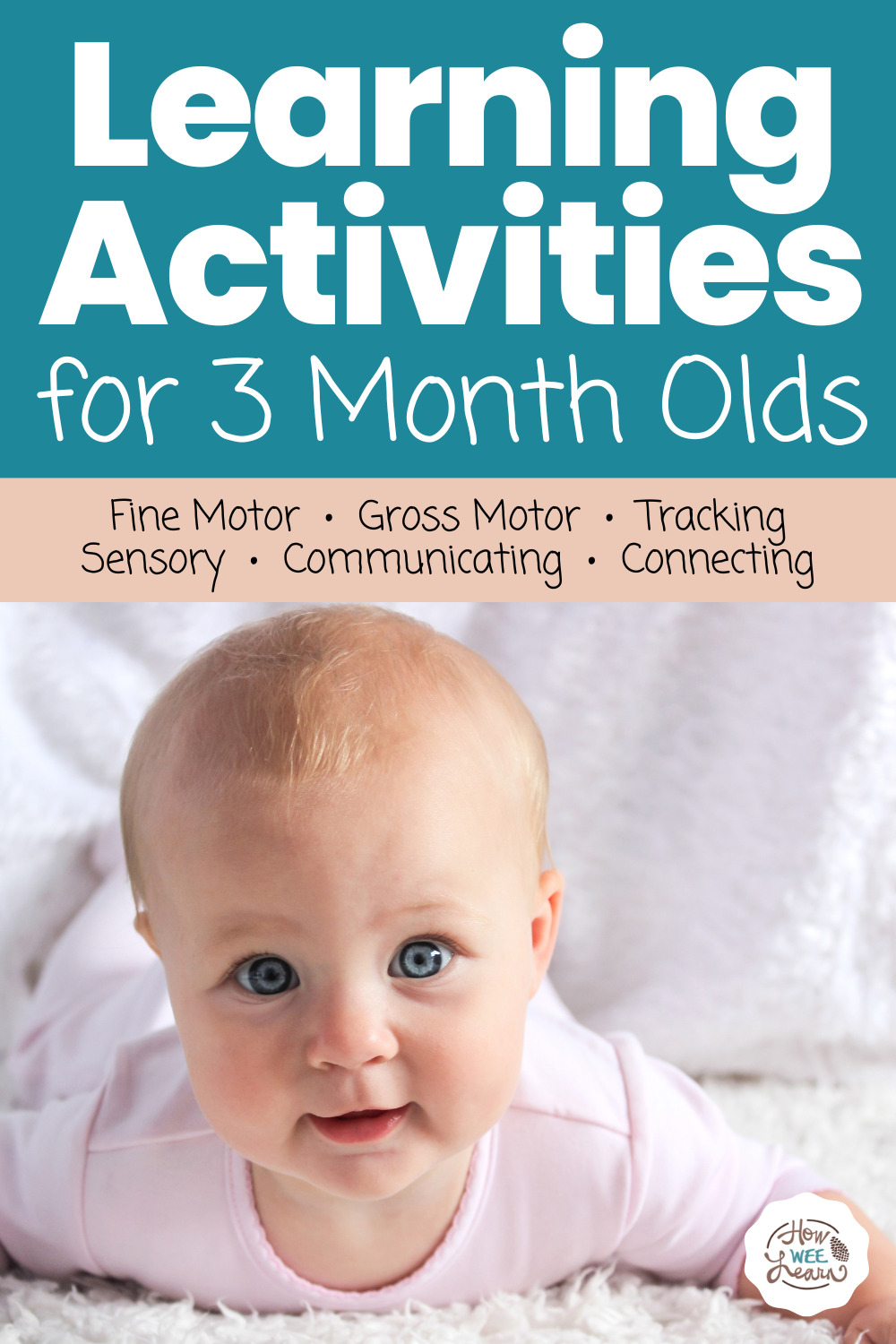
Learning Activity Ideas for 3-Month-Old Babies
Note: As I find the time—while I don’t have a 3-month-old babe anymore, I am still a Mama to four little ones!—I will add in oodles of specific activities for each of these ideas. If the words are highlighted in a different colour, please click through to read more detailed ideas.
1. Reaching for toys. Lay baby on her back or tummy and hold toys out for her to reach.
2. Singing clapping songs and helping baby to clap his or her hands. Pat-a-cake or these action songs for babies are great.
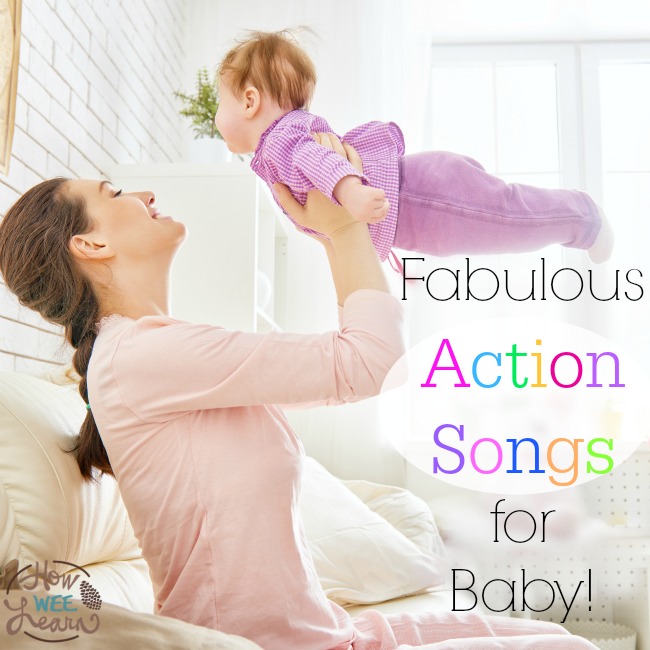
3. Providing toys for little ones to grasp and mouth. Help your little one grip toys of various sizes and shapes (remember babies can choke on anything small enough to fit through a toilet paper roll).
1. Practicing supporting his or her own head when properly supported by the waist and chest. Put babe on your lap facing you and carefully supporting her neck and back as she requires. Encourage her to look up at your face by making silly sounds and noises, smiling and giggling.
2. Tummy time. Put babe on her stomach with some brightly coloured toys in front of her. Encourage her to reach for them. Lay in front of her with a smiling face and encourage her to look at your face by pushing up on her little arms, strengthening her little body and your bond all at the same time.
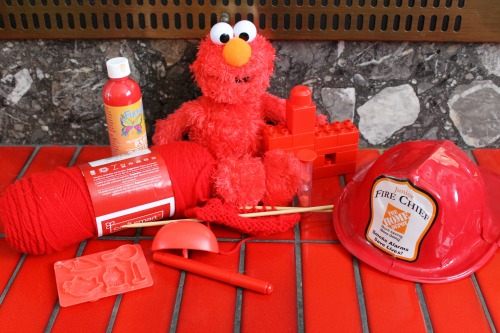
3. Change positions often. Have baby lay on her back, tummy, sit well supported, or carry her looking over your shoulder. The different views of the world will encourage her to look around to see new things. Be sure to chat with her about all she sees.
1. Encourage baby to follow your voice. Walk to various parts of a room and call your baby’s name. When she looks your way, be sure to respond with a smile and snuggle.
2. Encourage baby to imitate. Lay baby on your lap facing you and when she makes a facial movement or sound, imitate it back to her. Be sure to respond with smiles so she continues this form of communication. She will begin to realize that her sounds hold meaning and can get a response from Mama.
3. Talk and sing. Paint a picture for baby with your words. As you are playing with baby, tell her about what she is seeing: “Look Genevieve, the cat is coming over. Isn’t she a big kitty? Her brown fur is so soft.” Little ones are already beginning to develop an understanding of language. The more words they hear now the better, though it is also incredibly important that little ones have lots of time for rest and silence.
1. Practice tracking toys and people. Lay baby on the ground and gently roll a ball in front of her. Encourage her to follow the ball with her eyes. This can be done with tons of different toys or even people. A rattle may help to add in a little encouragement if she doesn’t seem interested at first.
2. Use babe’s name. When you are talking to your baby use her name. Sing songs using her name. Her name is one of the very first words she will begin to attach a meaning to.
3. Sing lullabies and nursery rhymes using high voices, low voices, and soft voices.
4. Provide baby with different textures to explore. Sensory boards can be easily made, though are not really necessary. Let baby feel the carpet, the grass, wood floors, and cushions.
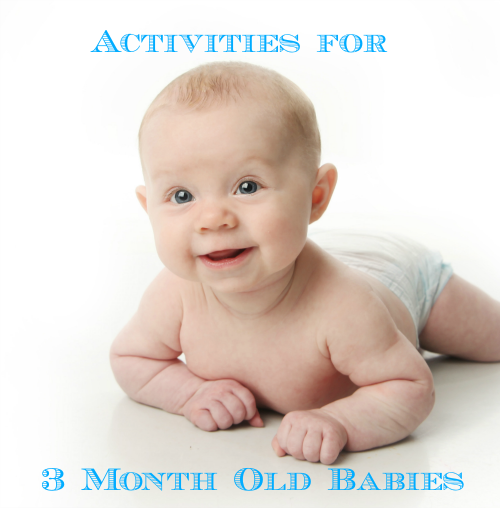
Most importantly, enjoy this time with your little one! She will spend her entire life learning new things, ad now is the perfect time for a Mama to know that she will learn at her own pace, perhaps faster or slower in certain areas, whenever she is ready.
Thank you for reading!
P.S. Don’t forget to download your Free High-Contrast Images:
You’ll also love these How Wee Learn best-sellers:
Activities for Teaching Baby How to Crawl
Amazingly Creative and Easy Baby Halloween Costumes
"Mom, you're the BEST!"
Get playful activities emailed each week. Subscribing is FREE!
November 5, 2018 at 12:54 am
thank you so much for the very informative blog! hope to get ideas about more fun activities. have a great day!
January 22, 2019 at 9:27 pm
Thank you Allyssa! I am glad you like the post 🙂
January 1, 2019 at 9:14 pm
This is exactly what I was looking for. THANK YOY!!
January 22, 2019 at 8:41 pm
Oh great! So glad you found it helpful 🙂 Thank you for taking the time to let me know Katie!
March 25, 2019 at 4:57 pm
I love this ? I was so worried I wasn’t giving my babe enough learning opportunities..isn’t it amazing how we do most of these things on this list naturally? Thank you for writing this. It is soooo appreciated!
March 25, 2019 at 9:14 pm
Well thank you for your lovely comment Rachel! It is so wonderful how naturally these activities came to you. How is your baby doing? Are you getting any sleep?
April 1, 2019 at 8:21 am
Great article and helpful. My babies are grown and left the nest so haven’t had an infant around for a long time. I just started nannying for my little nephew, he just turned 3 months, and needed a refresher on fun things to do with him. Thank you!
April 4, 2019 at 8:54 pm
Thank you Kari! I hope you have fun with your little nephew – so special
October 6, 2020 at 4:19 am
Thank you for the great info. Very useful tips for new mom like me. Appreciate it so much?
March 10, 2020 at 6:40 pm
Thank you for this information. God bless!
March 14, 2020 at 10:33 pm
I’m so glad you found it helpful!
March 18, 2020 at 4:10 pm
Very interesting and informative.My baby is going to be three months old so I start all these activities with him. Stay blessed.?
June 20, 2020 at 12:02 am
Hi Sarah I am with my 3 month old granddaughter for 4-5 hours per day. It had been years since we had a little one around. Our little angel, full of smiles loved your variety of fun-developmental activities. Such a blessing to see her so excited. I’ll definitely look to you for month by month growth ideas. Thank you very much. In His peace. Eileen
July 9, 2020 at 8:57 pm
I am so happy to hear this Eileen! Thank you for your encouragement
June 28, 2021 at 12:39 pm
Thank you so much for the pictures. I look forward to using them with my new granddaughter. I also enjoyed reading your article about Ways to Play with 3 month olds. I plan to use some of your ideas. I look forward to reading what you say about 4th months next month. Again thank you.
June 28, 2021 at 2:38 pm
Thank you Pam! I am so happy this blog post was helpful to you.
Leave a Reply Cancel reply
Your email address will not be published. Required fields are marked *
Save my name, email, and website in this browser for the next time I comment.
Attachment The maximum upload file size: 512 MB. You can upload: image , audio , video , document , spreadsheet , interactive , other . Drop file here
For every step of your journey
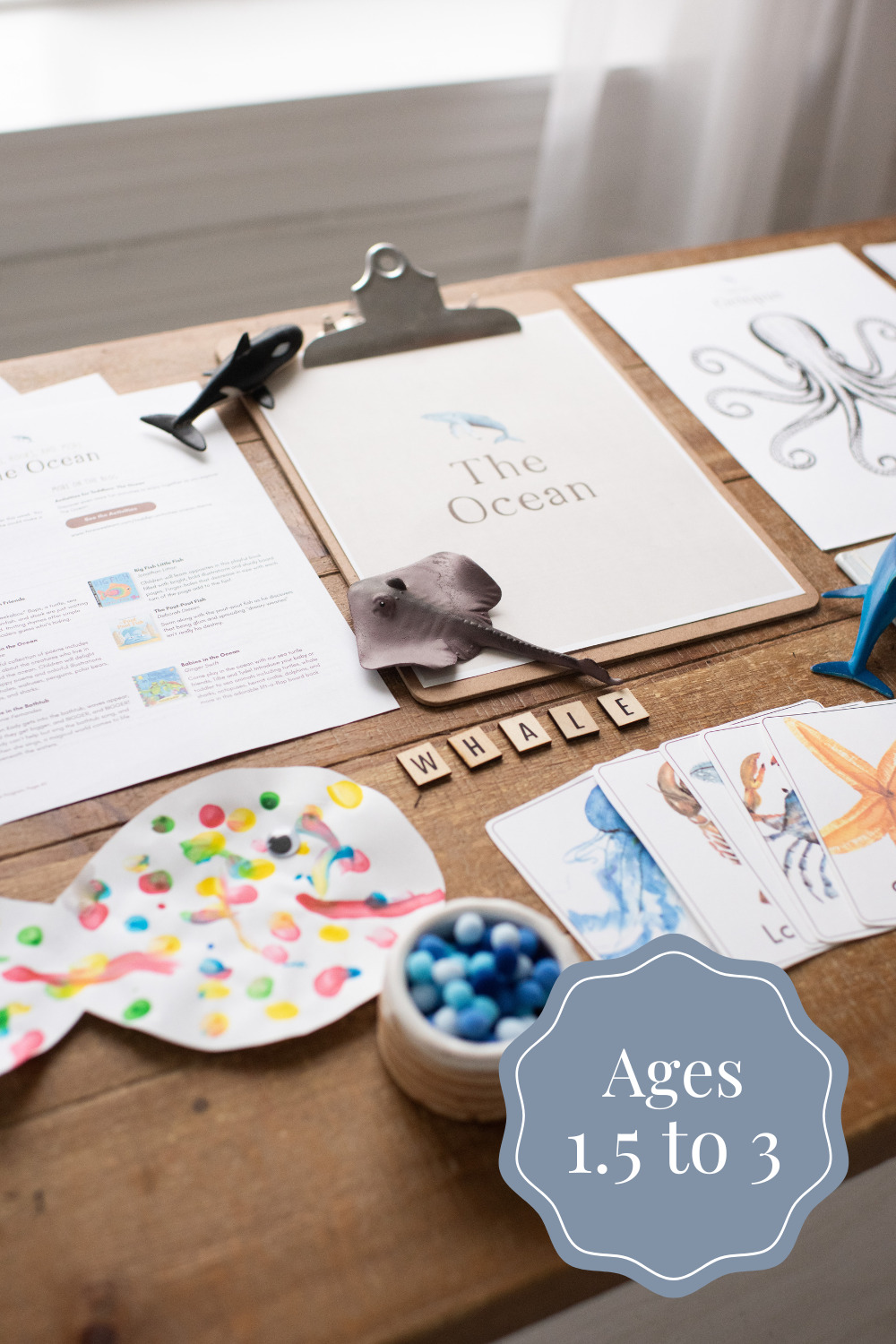
Shop Resources
Privacy Overview
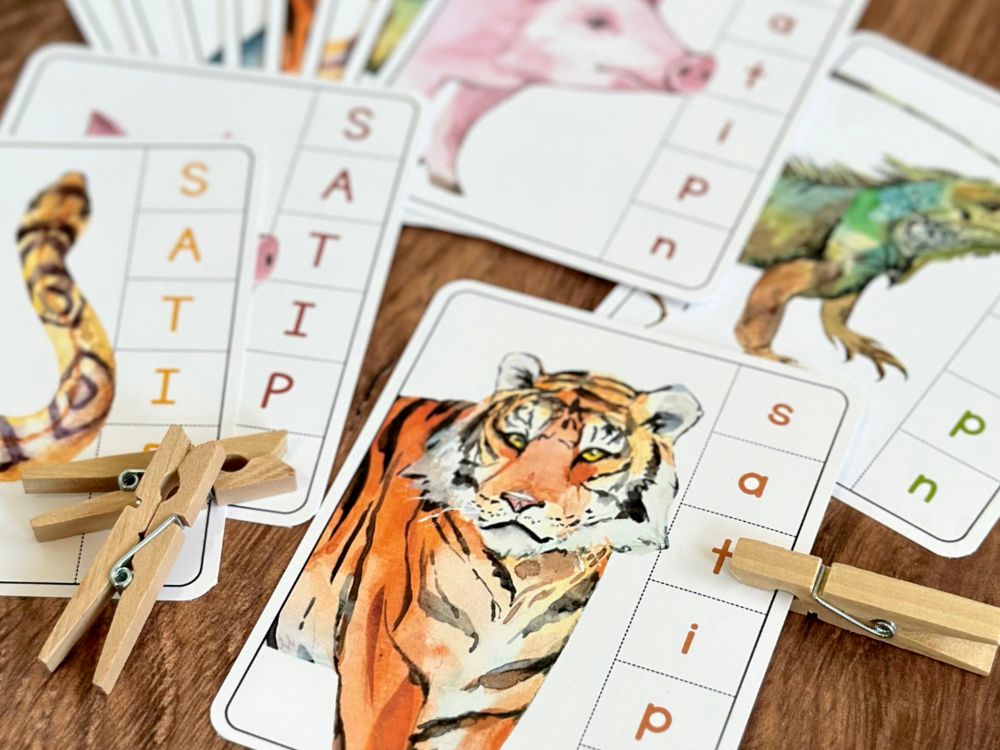
Free Printable
Let's take the mystery out of learning to read..
Check your inbox! Your free printable will be emailed to you immediately.
Each week, I send an email to my lovely subscribers with fun activities for children. You’ll also be the first to know when I’m offering an incredible deal. Unsubscribe at any time!
- February 17, 2010
Play Activities for Birth to 12 Months
Whether you’re looking for games to build your baby’s language skills, or games to keep the young ones busy, here are some great play ideas for your infant., action-oriented activities.
Hold your grandchild on your lap. Ask: How big is (child’s name)? Then lift his arms up into the air and say: Sooooo big! Babies love this game and will eventually learn to lift their arms in response to your question.
Wind at Your Back
Place your grandbaby on her tummy on a soft blanket. Billow a light scarf in the air above her and say, Feel the wind! Let the scarf gently fall on her back and then slowly pull it off her. Wave it in front of her and see if she follows it with her eyes. This activity gives your grandchild some fun “tummy time” with you. Spending time on her belly is important for building upper body strength.
Roll and Go
For grandchildren who are crawling, show them a soft ball or interesting toy. Roll it or place it a few feet away and encourage your baby to get it. If your grandchild is cruising along the couch, you can place the toy farther and farther along the couch to motivate him to keep moving.
On Your Feet
Gather several pieces of material with different textures—such as a tea towel, fake fur, felt, a silky scarf. Holding your grandbaby upright (with hands under baby’s arms), let her feet touch one of the fabrics. (Or allow crawling babies to crawl on and over the fabric.) Try a few different fabrics to see which textures your grandchild seems to prefer. Games like this enhance a baby’s sensory and body awareness.
Quiet Play Activities
Shadow sharing.
Babies have limited vision in their first few months but they are tuned in to contrasts between light and dark. At bedtime or naptime, slowly move a flashlight beam across the wall or ceiling of your grandbaby’s room. See if she can follow it with her eyes. As she grows, she will get better and better at following the moving beam—this skill is called “visual tracking.”
Make your own “aquarium”
Cut some fish shapes out of clean kitchen sponges and slip them into a gallon-sized resealable plastic bag filled with about a cup of water. For extra fun, squeeze a few drops of blue food coloring into the water and add some glitter or shells. Seal the bag and cover the edge with duct tape to be sure it stays closed. Let your baby squeeze the fish and pat the bag while he is seated in his high chair or on the floor with you.
Create a Leaf “Canopy”
Make a leafy mobile for your grandbaby by placing a few colorful fall leaves between clear contact paper. Cut out the leaf shapes, punch a hole in each, and hang with yarn from a clothes hanger. While your baby is on her back, swing the “mobile” gently to make the leaves flutter. You can even move the mobile gently left, right, and in a slow circle. (Put the mobile out of baby’s reach when you are done.) Activities like this enrich your grandbaby’s ability to track objects.
How Touching!
Make a texture book for your grandbaby by cutting squares of different kinds of fabric with pinking shears and gluing each one to an index card. Punch a hole in the corner of each card and tie together with yarn. Gently bring your grandbaby’s hand to each texture and see how he responds. As you read the book together, you can name the color and texture of the fabric.
Activities That Build Thinking Skills
Wrap a ball of waxed paper in a scarf and tie it up. Hold it out for your grandbaby and see if she wants to reach for it, grasp it, squeeze it, or crinkle it. Watch her face to see if she is interested or surprised by the sounds the package makes. You can put into words what you see on her face, “Wow! It crinkles and crackles. What’s inside?” Games like this encourage sensory awareness, reaching, grasping, and language development.
Baby in the Mirror
Hold your grandbaby in your arms in front of the mirror. Talk about and point to his body parts—eyes, nose, mouth, arms, etc. Then step away from the mirror and ask, “Where did baby go?” Move back in front of the mirror and say, “There’s the baby!” Hide-and-seek games enhance babies’ growing sense of body awareness—the knowledge that they are separate from you.
As your grandchild approaches her first birthday, she might enjoy playing a “find it” game with you. While she is in her high chair or sitting on the floor, show her one of her favorite rattles or another small toy. Then cover it with a washcloth. Wait a moment to see if she reaches to uncover the toy. If she doesn’t, show her where to find it. Games like this build babies’ thinking and problem-solving skills.
Putting It Together
Between 6 and 12 months, babies begin to understand how different objects work together—what they can do in relationship to the other. To practice this skill, offer your grandchild some small, easy-to-grasp blocks and show him how he can drop them into a bucket, plastic cup, or bowl. Combining the block and the cup shows an early understanding about how things go together.
Activities That Build the Senses
Show baby a bell and then gently ring it so he can hear. Wait until he focuses on the bell and then slowly bring it behind your back or place a washcloth over it. Then ask, Where did it go? Take it out and ring it from a different location. Wait until your grandbaby has found the bell again with his eyes. This activity enriches your baby’s auditory awareness.
Take a Whiff
Give your grandbaby (6 months old and up) an opportunity to use her sense of smell. When you cut an orange, hold it gently under her nose so she can have a sniff. When you take out the cinnamon or cloves for a recipe, do the same thing. You might say, Smell this. We smell with our nose. Then you can point to your nose. Keep in mind, all children process sensory information differently. Some may love it and others may not enjoy it at all. Activities like this help your grandchild connect sensory information to her everyday experiences.
Sound It Out
Gather several different objects that make distinct noises. Jingle, tap, or shake each one for the baby. If he reaches out to grasp one of the instruments, let him hold it and explore it with his hands. Games like this enhance babies’ thinking skills and fine (small) muscle development.
Try a Massage
When you get your grandbaby out of the bath, take a moment to gently massage her arms and legs with baby lotion (ask her mom or dad if they have a preferred brand). As you massage, gently bring her legs in and out from her body and gently bring her arms toward her chest and out again. Many babies are soothed and comforted through massage—an activity that helps them learn that touch is soothing and that their bodies are special and belong to them. But of course, follow your grandbaby’s cues and stop if it doesn’t seem to feel good to her.
Activities That Build Language Skills
Get out your umbrella.
Sing “It’s Raining, It’s Pouring” to your grandbaby. At the end of the song, drop a handful or two of soft, colorful pompoms over her belly and chest. How does she like this sensation? If she looks interested—widening her eyes, smiling, kicking arms and legs, do it again. If your grandbaby cries, try it again another time. Babies’ preferences can change quickly. Singing to your grandbaby is a great way to build language skills. This game also encourages babies’ awareness of themselves as an individual, separate from you.
Picture Perfect
Snap photos of friends and family members in your grandbaby’s life. Glue each one to an index card and cover with clear contact paper. Show the photos to your little one and name each person. Over time, your grandbaby will begin to point, smile, and maybe reach for the people in the pictures. Activities like this help grow your grandbaby’s memory and develop her language skills.
Finger Plays
Sing songs with your grandchild that have hand motions that go along with the lyrics. For example, songs and rhymes like “Patty Cake,” “Twinkle, Twinkle Little Star,” “Wheels on the Bus,” and “Where Is Thumbkin” all have hand and finger motions to do as you sing. When your grandchild is able to use his hands and fingers, he will start to copy your gestures and—before you know it—he will be singing along!
As your grandchild approaches 6 to 9 months, you can start to play peek-a-boo. Most babies really enjoy this game! When you pop out from behind a towel or your hand, say, “HI!” When you are about to disappear, wave and say, “BYE!” By putting words to your actions, over time your grandbaby will begin to understand their meaning. She might even start saying them herself!
Browse our full suite of resources on early childhood development.

- Early Explorers The First 0 to 6 Months
- Curious Crawlers 6 to 12 Months
- Toddlers in Motion 12 to 24 Months
- Special Needs
- Online one-on-one with Anat
- Home In Person Therapy
- Member Access
- Your 3 Month Old Baby Activities And Developmental Milestones
What is your baby age group? Click below to learn how to enhance your baby development path.
Quick links:
Key Takeaways
Ⅰ. Introduction
Ⅱ. frequently asked questions, ⅲ. reading and storytelling activities for a 3 month old baby, ⅳ. sensory activities for 3-month-old baby.
Ⅴ. Music and Movement Activities
Ⅵ. Tummy Time Ideas for 3 Month Old and Gross Motor Activities
Ⅶ. Games and Toys
Ⅷ. Conclusion
Ⅸ. Additional Reading Resources
Key Takeaways:
- Early Engagement is Crucial : Engaging a 3-month-old baby in activities is vital for their development. It strengthens the parent-child bond, boosts cognitive and physical growth, and promotes sensory exploration during these formative months.
- Reading Matters : Reading to your baby, even at this young age, is highly beneficial. It stimulates their senses, aids in language acquisition, and fosters cognitive growth. Choosing age-appropriate books and interactive reading activities is important.
- Sensory Play is Key : Sensory activities play a foundational role in a baby's development. Exploring textures, sounds, and visual stimuli enriches their sensory awareness and understanding of the world.
- Tummy Time is Essential : Tummy time is a critical activity for a 3-month-old. It strengthens muscles, improves head control, and prepares the baby for crawling. Implementing tummy time with care and consistency is crucial for their physical development.
3 Month Old Baby Activities Introduction.
Bringing up a child, especially during their earliest months, is a journey filled with wonder, challenges, and boundless love. As parents, caregivers, or guardians, our purpose is not only to meet the basic needs of our infants but also to foster their growth, both physically and cognitively. In this article, we delve into a world of possibilities for nurturing your 3-month-old baby's development. We draw insights and guidance from a wealth of expert sources, ranging from renowned pediatricians to child development specialists, all with a shared goal: helping you create meaningful and enriching experiences for your little one.
Benefits of Engaging a 3-Month-Old Baby in Activities.
At 3 months of age, your baby is entering a phase of rapid development. Engaging them in activities designed to stimulate their senses, encourage movement, and promote cognitive growth is not just a delightful bonding experience but also a critical component of their early years. By actively participating in your baby's daily routines and playtime, you can:
- Strengthen the Parent-Child Bond: Interacting with your baby fosters a deep sense of connection and attachment, which forms the foundation for their emotional well-being.
- Boost Cognitive Development: By providing age-appropriate stimulation, you can help your baby's brain make important connections, setting the stage for future learning.
- Enhance Physical Development: Encouraging movement and motor skills development helps your baby reach essential milestones, like rolling and reaching.
- Promote Sensory Exploration: Your baby's senses are rapidly developing. Engaging activities allow them to explore and understand the world around them.
What Activities Are Beneficial for My 3-Month-Old Baby?
When caring for your 3-month-old baby, prioritize activities that cater to their developmental needs. Engage in actions that stimulate their senses, foster bonding, and encourage crucial milestones. Follow the guidance from authoritative sources like "The Wonder Weeks" by Frans Plooij and Hetty van de Rijt, which delineates developmental leaps, and "The Baby Book" by William Sears and Martha Sears, a comprehensive baby care guide.
- Tummy Time: Promote tummy time sessions to strengthen neck and upper body muscles. Enhance the experience by introducing engaging toys within their reach.
- Reading: Reading aloud remains invaluable even at this age. Opt for colorful board books with large, captivating illustrations.
- Sensory Play: Delve into sensory activities that involve gentle touch, soft music, or the introduction of various textures.
- Interaction: Engage in meaningful interaction by talking to your baby, establishing eye contact, and responding to their coos and smiles. This nurtures communication and attachment.
- Physical Bonding: Hold and cuddle your baby frequently. Skin-to-skin contact is reassuring and bolsters the bond between you and your baby.
How Can I Stimulate My 3-Month-Old?
Effective stimulation is crucial for your baby's development. Concentrate on activities that actively engage their senses and promote learning:
- Mobiles : Install a vibrant mobile above the crib to provide visual stimulation.
- Rattles and Toys : Offer age-appropriate toys and rattles designed for exploration and grasp.
- Singing and Music : Sing songs, play gentle music, or introduce musical toys to stimulate their auditory senses.
- Mirror Play : Babies take pleasure in observing their own reflection. Utilize a baby-safe mirror for their gaze.
What Are Suitable Sensory Activities for a 3-Month-Old?
Sensory activities hold immense importance in enhancing your baby's cognitive development. Experiment with:
- Texture Exploration : Present your baby with various textured toys or fabrics for tactile exploration.
- Sound Play : Incorporate toys that produce gentle sounds when touched or shaken.
- Visual Stimulation : Engage their visual senses with high-contrast patterns and colorful toys.
Is It Acceptable for a 3-Month-Old to Watch Television?
Generally, it's not advisable for infants under 2 years old to watch TV. At 3 months, their developing brains derive greater benefit from real-world interactions and sensory experiences. TV screens can potentially overstimulate or divert their attention from essential activities like tummy time and bonding with caregivers.
What Are Typical Milestones for a 3-Month-Old Baby?
At 3 months, babies often achieve several notable milestones:
- Enhanced Head Control: Improved head control is evident during tummy time.
- Visual Tracking : They begin tracking objects with their eyes.
- Grasping Objects: Your baby may exhibit the ability to grasp and hold onto objects.
- Social Interaction: Smiles and cooing become more pronounced in response to stimuli.
- Facial Expression Mimicry: Babies attempt to mimic facial expressions.
What Brain Development Activities Can I Pursue with My 3-Month-Old?
Fostering healthy brain development is paramount. Activities such as reading, talking to your baby, and providing sensory experiences contribute to the strengthening of neural connections. Resources like "Brain Rules for Baby" by John Medina offer valuable insights.
What Are Some Ideal Activities for 3-4-Month-Old Babies?
Activities tailored for this age bracket should prioritize tummy time, sensory play, and social interaction. Consider incorporating baby gym time, gentle massages, and the introduction of new textures.
What Toys Are Recommended for 3-Month-Old Babies?
Recommended toys encompass soft rattles, high-contrast mobiles, teething toys, textured plush toys, and colorful board books. These selections engage their senses while supporting overall development.
What Outdoor Activities Can I Enjoy with My 3-Month-Old?
For outdoor excursions, contemplate leisurely stroller walks in the park or visits to baby-friendly playgrounds. Ensure your baby is shielded from the sun and dressed suitably for the weather.
What Should I Expect from My 3-Month-Old's Development?
Developmentally, your 3-month-old should be exhibiting advancements in head control, visual tracking, and social interaction. Some may begin reaching for objects.
What Are Some Common Activities for 3-Month-Old Babies?
Common activities include tummy time, reading, singing, cuddling, sensory play, and the introduction of new textures and sounds.
What Sensory Activities Are Suitable for 3-Month-Olds?
Sensory activities encompass exploring textures, listening to soothing sounds, and engaging with high-contrast patterns or sensory toys.
What Are Gross Motor Activities for a 3-Month-Old?
Gross motor activities are focused on enhancing your baby's muscle strength. These include tummy time, encouraging reaching for toys, and motivating leg movements.
3 Month Old Baby Activities And Developmental Milestones
In the coming months, your baby is poised to reach an array of captivating developmental milestones. At 3 months, you can expect to witness your baby's journey into the world of expressions, interactions, and movements. These milestones may include:
- Smiling : Your baby's smile, often in response to your face or voice, is a heartwarming sign of their growing emotional connection.
- Cooing and Vocalization : Your little one may start making delightful sounds, a precursor to language development.
- Reaching and Grasping : As their hand-eye coordination improves, your baby may attempt to reach and grasp objects within their line of sight.
- Rolling : Some babies begin to roll over from their back to their tummy, a significant achievement in their physical development.
- Increased Awareness : Your baby's awareness of their surroundings and their capacity to focus on objects and faces will grow, creating opportunities for interaction and engagement.
Imagine holding your 3-month-old in your arms, feeling the warmth of their tiny body, and gazing into their bright, curious eyes. The world is new to them, and every day is an adventure filled with discoveries waiting to happen. Now, picture this: What if you could be their guide on this exciting journey of growth and development?
Join us as we explore a treasure trove of activities and insights, drawing from the wisdom of experts and the experiences of parents like you. Together, we'll unlock the secrets to fostering your 3-month-old's happiness, health, and development, one joyful moment at a time.
The Significance of Reading to Infants
In the enchanting world of a 3-month-old baby, the simple act of reading is far more than just words on a page. It is an invitation to explore, learn, and build an unbreakable bond. Reading to infants, as emphasized by experts like William Sears and Martha Sears in "The Baby Book," transcends mere entertainment. It serves as a powerful tool for nurturing your baby's development.
At this tender age, infants are like sponges, absorbing the sights, sounds, and emotions around them. Reading provides a multisensory experience that engages their developing senses, including sight, hearing, and touch. When you hold a book, share its pages, and speak the words aloud, you're providing a rich and stimulating environment that lays the foundation for language acquisition and cognitive growth.
Recommended Books from "Best Books for Babies 0-12 Months"
The world of children's literature is vast and diverse, offering countless options for sharing stories with your baby. Drawing from trusted sources like "Best Books for Babies 0-12 Months," we've curated a list of delightful books that are not only age-appropriate but also engaging for both you and your little one. Here are a few gems to consider:
- "Brown Bear Brown Bear, What Do You See?" by Bill Martin Junior: This classic board book combines rhythmic repetition with vibrant illustrations, captivating your baby's attention and encouraging vocalization as they mimic the animal sounds.
- "Boo!" by Margaret Wild: This interactive lift-the-flap book invites your baby to participate in the story by revealing surprises beneath each flap, fostering curiosity and fine motor skills.
- "Everywhere Babies" by Susan Meyers: This heartwarming tale celebrates the diversity of babies and families, offering opportunities for you to engage in meaningful conversations with your little one.
Interactive Activities Using Books
- Interactive Reading : While sharing "Brown Bear Brown Bear," pause and ask questions like, "What color is the bird?" or "Can you make the sound of the duck?" Encourage your baby to respond, even with coos and gurgles.
- Sensory Exploration : In "Boo!" allow your baby to touch and explore the textures of the flaps. Describe the textures (soft, rough) as they feel them, promoting sensory awareness.
- Emotional Connection : As you read "Everywhere Babies," point to the diverse families and name the emotions expressed. Say things like, "Look, the baby is happy, just like you!" This fosters emotional intelligence.
Benefits of Reading and Storytelling for Baby's Development
Engaging in reading and storytelling offers a multitude of benefits for your 3-month-old's development, as highlighted in "The Wonder Weeks" and other expert-recommended books:
- Language Development : Exposure to words and sounds enhances your baby's language skills, helping them recognize patterns, sounds, and eventually, words.
- Cognitive Growth : Engaging with stories stimulates your baby's imagination and cognitive abilities, promoting problem-solving skills and critical thinking.
- Bonding and Security : The close physical contact during reading strengthens the emotional bond between you and your baby, providing a sense of security and trust.
- Sensory Stimulation : The textures, colors, and sounds in books engage your baby's senses, contributing to sensory development.
Incorporating reading and storytelling into your daily routine not only lays the foundation for literacy but also creates cherished moments of connection between you and your 3-month-old, fostering a lifelong love for books and learning.
The Role of Sensory Play in Development
In the intricate journey of a baby's growth and development, sensory play emerges as a powerful catalyst. Sensory play encompasses activities that stimulate an infant's budding senses: sight, sound, touch, taste, and smell. At 3 months old, your baby is embarking on a sensory exploration of the world, making sensory play a vital cornerstone of their development.
Sensory play is far from mere amusement; it is a foundational building block for cognitive, emotional, and physical growth. By engaging your baby's senses, you create not only moments of joy but also the framework for their understanding of the world. Each sensory encounter contributes to the intricate web of neural connections forming within your baby's brain.
Sensory Adventures Inspired by "Everywhere Babies" and "Aussie Babies"
Drawing inspiration from literary gems like "Everywhere Babies" and "Aussie Babies," we can design sensory play activities tailored to your 3-month-old's innate curiosity:
- Texture Expedition : Craft a sensory box filled with a medley of baby-friendly textures, from velvety fabrics to smooth plastics and crinkly paper. Allow your baby to explore these tactile wonders, igniting their sensory awareness.
- Harmonious Sensory Serenades : Engage your baby with sensory songs and rhymes. For instance, recite "This Little Piggy" while gently caressing your baby's fingers and toes, or employ a soft feather to tickle their skin during a lullaby serenade.
- Mirror Magic : Position a baby-safe mirror in your baby's view. As they gaze upon their reflection, engage them in a dialogue about what they see. This activity encourages visual exploration and self-recognition.
Sensory Delights: Exploring Textures, Colors, and Sounds
Sensory play at this stage centers on gentle exploration:
- Textures : Introduce your baby to an array of textures by offering soft fabrics, smooth surfaces, and objects with diverse tactile qualities. This fosters sensory awareness and fine motor skill development.
- Colors : Showcase a spectrum of colorful objects, toys, or picture books to your baby. While their vision is still developing, exposure to varying colors contributes to visual stimulation.
- Sounds : Envelop your baby in a world of soothing sounds, gentle melodies, or the melodies of nature, such as birdsong. These auditory experiences help your baby distinguish sounds and cultivate auditory perception.
The Rich Benefits of Sensory Play for Your 3-Month-Old
Sensory play isn't just about delight; it offers a plethora of developmental advantages for your 3-month-old, echoing insights from esteemed experts like Daniel J. Siegel and Tina Payne Bryson in "The Whole-Brain Child":
- Brain Enrichment : Sensory play kindles neural pathways, aiding in the formation of crucial connections for future learning and problem-solving.
- Sensory Proficiency : By exploring diverse sensations, your baby learns to process sensory information effectively, enhancing their sensory integration skills.
- Emotional Harmony : Engaging in sensory play can have a soothing effect on infants, helping them regulate emotions and providing comfort.
- Fine Motor Flourishing : Activities involving touch and object manipulation contribute to the development of fine motor skills, vital for tasks like grasping and reaching.
Incorporating sensory play into your daily routine unveils the wonder of your baby's sensory exploration and furnishes them with a vibrant, interactive environment that nurtures their development. These uncomplicated yet profound activities lay the groundwork for a lifelong journey of sensory discovery and learning.
Ⅴ. Music and Movement for 3 Month Old Baby Activities
The transformative role of music and movement in baby developmental activities for 3 month old.
The profound influence of music and movement on a baby's development resonates through various parenting resources, including "The Baby Book" by William Sears and Martha Sears. At 3 months old, your baby is in a phase where their sensory experiences are rapidly expanding, and music and movement can serve as potent tools in nurturing their growth.
The connection between music and a baby's development is nothing short of remarkable. It stimulates various regions of their brain, encourages emotional expression, and establishes the groundwork for pivotal developmental milestones. Simultaneously, movement aids in developing your baby's physical strength, coordination, and a deeper awareness of their own body.
Rhythmic Delights: Activities Inspired by "Crocodile Beat"
Taking inspiration from the rhythmic charm of books like "Crocodile Beat," you can introduce your 3-month-old to the captivating world of music and movement:
- Gentle Dancing : Cradle your baby securely in your arms and sway to soothing music. The rhythmic motion not only brings calmness but also fosters a delightful bonding experience.
- Musical Instruments : Present simple musical instruments like rattles or bells for your baby to explore. While they may not have mastered dexterity, the sounds they create will intrigue and engage their budding senses.
Harmonious Sing-Alongs and Gentle Movement Exercises.
- Sing-Alongs : Serenading your baby is one of the most enchanting ways to acquaint them with the world of sound. Opt for soft, melodic songs and nursery rhymes while making eye contact with your baby—a magical connection ensues.
- Tummy Time : Tummy time stands as an indispensable practice for your baby's physical development . Lay them on their tummy for brief periods each day, gradually extending the duration. Position colorful toys within their reach to encourage reaching and grasping.
- Leg Cycling : Tenderly hold your baby's legs and guide them in a cycling motion. This exercise promotes leg muscle development and manifests as a joyful activity for both of you.
The Harmonic Advantages of Music and Movement for Baby Development
The seamless integration of music and movement into your baby's daily routine presents an array of developmental advantages, echoing insights from renowned works such as "Brain Rules for Baby" by John Medina:
- Cognitive Augmentation : Exposure to music heightens cognitive skills such as memory and problem-solving. The rhythmic patterns in music also kindle mathematical thinking.
- Emotional Expression : Music serves as a potent conduit for emotional expression, allowing your baby to traverse a spectrum of emotions and discover ways to articulate themselves in response to varied musical cues.
- Physical Coordination : Movement exercises and tummy time are integral to your baby's physical development. These activities enhance strength, refine motor skills, and nurture healthy muscle growth.
- Sensory Fusion : The amalgamation of auditory and physical sensations during music and movement activities facilitates sensory integration, guiding your baby in making sense of their surroundings.
- Bonding Bliss : Active participation in these activities fosters moments of sheer joy while strengthening the emotional bond between you and your baby. Eye contact, tactile connection, and shared experiences culminate in a profound sense of security and trust.
Infusing music and movement into your daily interactions with your 3-month-old not only enriches their sensory realm but also presents opportunities for joyful bonding and developmental blossoming. These activities are a source of delight for your baby and a heartfelt journey for you as you witness the marvels of their early exploration and expression.
Ⅵ. Tummy Time Ideas for 3 Month Old and Gross Motor Activities
The significance of tummy time.
The term "tummy time" resonates profoundly within the pages of parenting literature, notably in works like "The Baby Book" by William Sears and Martha Sears. At 3 months old, your baby embarks on a critical phase of development, and tummy time emerges as a pivotal contributor to their growth.
Tummy time involves placing your baby on their stomach while they are awake and under supervision. This seemingly simple yet crucial activity yields numerous benefits for your baby's physical and cognitive development. It plays a pivotal role in strengthening the muscles essential for crawling and, eventually, walking. Furthermore, tummy time encourages your baby to lift their head, nurturing neck and upper body strength.
Tummy Time: Activities and Exercises
- Gradual Onset : Commence tummy time with short sessions, lasting only a few minutes, and progressively extend the duration as your baby becomes more comfortable. Always ensure your baby is awake and alert during these sessions.
- Soft Surface : Lay down a soft, clean blanket or a designated play mat on the floor. This not only provides a comfortable surface for your baby but also minimizes any potential discomfort.
- Engage Actively : Get down on the floor with your baby during tummy time. Maintain eye contact, engage in conversation, and serenade them with songs to keep them enthralled and reassured.
- Tummy-To-Tummy : Position your baby on your chest while you lie on your back. This arrangement creates a soothing, face-to-face interaction, allowing your baby to synchronize with the rhythm of your breathing.
Encouraging Rolling and Reaching Motions
- Rolling Over : Around 3 to 4 months, many babies exhibit an interest in rolling over. Encourage this by placing captivating toys just out of reach during tummy time. This incentive motivates your baby to attempt rolling to grasp the toys.
- Reaching : Strategically place colorful and captivating toys within your baby's line of sight during tummy time. This approach encourages reaching and grasping motions, fortifying their hand-eye coordination.
The Profound Benefits of Tummy Time and Gross Motor Development
Tummy time, a practice wholeheartedly endorsed in works like "The Baby Book" and other parenting resources, bestows an array of developmental benefits:
- Muscle Mastery : Tummy time serves as a crucible for your baby's muscle development, particularly the muscles requisite for crawling, sitting, and eventually walking. It accentuates strength in the neck, shoulders, and back muscles.
- Headway in Head Control : By lifting their head during tummy time, your baby forges stronger neck muscles and enhanced head control. This developmental milestone paves the way for them to sit upright unsupported.
- Preparation for Crawling : As your baby embraces tummy time, they start pushing up on their arms and engaging their legs, building the foundational skills required for crawling.
- Sensory Stimulation : Tummy time introduces your baby to a mosaic of textures and sensations, bolstering their sensory development. It empowers them to explore their surroundings from a fresh perspective.
- Flat Spot Prevention : Tummy time stands as an effective measure to stave off the formation of flat spots on the back of your baby's head, a concern associated with prolonged periods of lying on their back.
- Emotional Bonding : Beyond physical benefits, tummy time offers a splendid avenue for bonding. When you join your baby on the floor, converse, and interact with them, you're not solely nurturing their physical development but also cultivating a profound emotional connection.
Incorporating tummy time into your daily regimen is a proactive strategy for bolstering your baby's gross motor development. This straightforward yet highly effective practice engenders strength, coordination, and curiosity as your baby explores the world from an entirely new perspective. Throughout these sessions, remember to exercise patience and offer encouragement, celebrating each incremental achievement your baby attains.
The First Steps ToTummy Time Video.
Introduction to Age-Appropriate Games and Toys
The advent of your baby's third month marks a delightful turning point as they begin to exhibit a heightened curiosity about the world around them. This exciting phase presents a perfect opportunity for parents to introduce age-appropriate games and toys that actively support their development.
Renowned parenting resources such as "The Baby Book" by William Sears and Martha Sears and "The Whole-Brain Child" by Daniel J. Siegel and Tina Payne Bryson emphasize the significance of interactive play during this crucial stage.
Engaging in interactive play with well-suited toys isn't just about entertaining your baby; it's about nurturing their cognitive, emotional, and sensory faculties. These activities serve as gateways to exploration, fostering curiosity and forging stronger connections between your baby and their caregivers.
Best Toys For 3 Month Old Baby
- High-Contrast Toys : Babies at this age are naturally drawn to high-contrast patterns and bold colors. Seek out toys adorned with black and white patterns or those featuring contrasting hues like red and white to captivate their budding visual curiosity.
- Soft, Textured Toys : Toys showcasing diverse textures are ideal for sensory exploration. Consider plush toys adorned with a medley of surfaces, providing your baby with a tactile wonderland to touch and feel.
- Rattles : Opt for lightweight rattles that emit gentle, soothing sounds. These toys effectively engage your baby's auditory senses and are easily grasped by their small hands.
- Mirrors : Babies often find fascination in their own reflection. A small, baby-safe mirror can both entertain your little one and encourage the burgeoning awareness of self-recognition.
- Teething Toys : For some babies, teething may commence around the 3-month mark. Be prepared with teething toys constructed from safe, soft materials to offer relief and comfort to their tender gums.
- Mobiles : Hanging mobiles adorned with slow-moving objects are captivating for your baby's gaze. They also facilitate the development of visual tracking skills.
Interactive Games and Playtime Ideas
- Peek-a-Boo : The classic game of peek-a-boo, played with a soft cloth or your hands, is a fantastic way to encourage social interaction and help your baby grasp the concept of object permanence.
- Sing-Along Songs : Singing nursery rhymes and songs to your baby not only introduces them to melodious sounds but also creates opportunities for interactive bonding. Incorporate simple hand movements or gentle swaying for added engagement.
- Baby Gym : A baby gym equipped with dangling toys for reaching and kicking can enhance your baby's gross motor skills and coordination as they play and explore.
- Reading Time : Even at this tender age, reading to your baby is immensely valuable. Select board books adorned with large, colorful illustrations and read aloud in a soothing voice, stimulating their visual and auditory senses.
- Tummy Time Play : Make tummy time more enjoyable by placing age-appropriate toys within your baby's reach. This encourages reaching and grasping, while also aiding in physical development.
Cognitive and Sensory Benefits of Playing with Toys
Engaging in play and interacting with toys offer a multitude of developmental advantages for your 3-month-old:
- Cognitive Development : Toys serve as catalysts for cognitive growth, prompting your baby to explore, observe, and establish connections between objects and actions.
- Sensory Exploration : Playing with toys exposes your baby to various textures, sounds, and visual stimuli, enriching their sensory awareness and understanding of the world around them.
- Emotional Connection : Interactive playtime with caregivers cultivates emotional bonds and trust as babies bask in the security and love shared during these cherished moments.
- Language Development : Singing songs, conversing with your baby, and describing toys all contribute to the nurturing of early language skills.
- Motor Skills : Manipulating and grasping toys during playtime exercises fine motor skills and enhances hand-eye coordination, setting the stage for future dexterity.
Incorporating games and toys into your daily routine not only entertains your baby but also serves as a pivotal pillar supporting their comprehensive development. It's essential to choose toys that are not only safe and age-appropriate but also aligned with your baby's burgeoning interests. Always remember that the heart of play lies in the interaction and bonding between you and your precious 3-month-old. Treasure these moments of discovery and growth as you both embark on this remarkable journey together.
Your Ultimate Guide: Activities for 3 Month Old Infants Read more here .
Ⅷ. 3 Month Old Baby Activities Conclusion
In this comprehensive guide, we've delved into a wealth of insights to empower you in fostering your 3-month-old baby's development. Drawing wisdom from trusted sources like "The Wonder Weeks" by Frans Plooij and Hetty van de Rijt, as well as "The Baby Book" by William Sears and Martha Sears, we've provided you with a roadmap for nurturing your baby's growth during this pivotal phase.
The significance of engaging activities for 3-month-olds cannot be overstated. These early interactions form the bedrock of your baby's cognitive, emotional, and physical development. By actively participating in tummy time, sensory play, reading, and bonding, you cultivate a nurturing environment that supports their milestones and nurtures a profound parent-child connection.
Parenting a 3-month-old can be a rewarding yet challenging journey. It's vital to remember that each baby is wonderfully unique, and there's no one-size-fits-all approach. Trust your instincts and relish the voyage of discovery as you acquaint yourself with your baby's preferences, cues, and developmental leaps. Seek solace and guidance from your partner, family, and friends, and don't hesitate to seek counsel from pediatricians or childcare experts whenever necessary.
As you embark on this thrilling odyssey of parenthood, we encourage you to share your experiences with fellow parents. Connect with communities, both in the digital realm and the physical world, to exchange tips, anecdotes, and wisdom. Moreover, consider exploring additional resources and books to continue enriching your understanding of your baby's development. Your active involvement and dedication to your child's growth serve as the cornerstone for building a robust foundation for their future.
Within the pages of these books and resources, you'll discover a treasure trove of knowledge and counsel to navigate the magnificent, challenging, and ever-evolving realm of parenthood. Embrace the joy of witnessing your baby grow, learn, and explore, and savor every single moment of this extraordinary journey.
Ⅸ. Additional Reading Resources
- "The Baby Book" by William Sears and Martha Sears
- "The Wonder Weeks" by Frans Plooij and Hetty van de Rijt
- "Brain Rules for Baby" by John Medina
- "Everywhere Babies" by Susan Meyers
- "The Whole-Brain Child" by Daniel J. Siegel and Tina Payne Bryson
- "Brown Bear Brown Bear, What Do You See?" by Bill Martin Junior
- "Boo!" by Margaret Wild
Wondering which activities will strengthen your baby's skills?
Professional fun activities personalized to your baby's age and needs..
3 Month Activities, 3 month old, 3 Month Old Activities, 3 Month Old Baby, 3 Month Old Baby Activities
You may also like
6 month old baby activities and developmental milestones, your ultimate guide: activities for 3 month old infants, frequently asked questions and answers on low muscle tone (hypotonia), nurturing young minds: a guide to baby brain development and activities, leave a reply.
You must be logged in to post a comment.
- Getting Pregnant
- Registry Builder
- Baby Products
- Birth Clubs
- See all in Community
- Ovulation Calculator
- How To Get Pregnant
- How To Get Pregnant Fast
- Ovulation Discharge
- Implantation Bleeding
- Ovulation Symptoms
- Pregnancy Symptoms
- Am I Pregnant?
- Pregnancy Tests
- See all in Getting Pregnant
- Due Date Calculator
- Pregnancy Week by Week
- Pregnant Sex
- Weight Gain Tracker
- Signs of Labor
- Morning Sickness
- COVID Vaccine and Pregnancy
- Fetal Weight Chart
- Fetal Development
- Pregnancy Discharge
- Find Out Baby Gender
- Chinese Gender Predictor
- See all in Pregnancy
- Baby Name Generator
- Top Baby Names 2023
- Top Baby Names 2024
- How to Pick a Baby Name
- Most Popular Baby Names
- Baby Names by Letter
- Gender Neutral Names
- Unique Boy Names
- Unique Girl Names
- Top baby names by year
- See all in Baby Names
- Baby Development
- Baby Feeding Guide
- Newborn Sleep
- When Babies Roll Over
- First-Year Baby Costs Calculator
- Postpartum Health
- Baby Poop Chart
- See all in Baby
- Average Weight & Height
- Autism Signs
- Child Growth Chart
- Night Terrors
- Moving from Crib to Bed
- Toddler Feeding Guide
- Potty Training
- Bathing and Grooming
- See all in Toddler
- Height Predictor
- Potty Training: Boys
- Potty training: Girls
- How Much Sleep? (Ages 3+)
- Ready for Preschool?
- Thumb-Sucking
- Gross Motor Skills
- Napping (Ages 2 to 3)
- See all in Child
- Photos: Rashes & Skin Conditions
- Symptom Checker
- Vaccine Scheduler
- Reducing a Fever
- Acetaminophen Dosage Chart
- Constipation in Babies
- Ear Infection Symptoms
- Head Lice 101
- See all in Health
- Second Pregnancy
- Daycare Costs
- Family Finance
- Stay-At-Home Parents
- Breastfeeding Positions
- See all in Family
- Baby Sleep Training
- Preparing For Baby
- My Custom Checklist
- My Registries
- Take the Quiz
- Best Baby Products
- Best Breast Pump
- Best Convertible Car Seat
- Best Infant Car Seat
- Best Baby Bottle
- Best Baby Monitor
- Best Stroller
- Best Diapers
- Best Baby Carrier
- Best Diaper Bag
- Best Highchair
- See all in Baby Products
- Why Pregnant Belly Feels Tight
- Early Signs of Twins
- Teas During Pregnancy
- Baby Head Circumference Chart
- How Many Months Pregnant Am I
- What is a Rainbow Baby
- Braxton Hicks Contractions
- HCG Levels By Week
- When to Take a Pregnancy Test
- Am I Pregnant
- Why is Poop Green
- Can Pregnant Women Eat Shrimp
- Insemination
- UTI During Pregnancy
- Vitamin D Drops
- Best Baby Forumla
- Postpartum Depression
- Low Progesterone During Pregnancy
- Baby Shower
- Baby Shower Games
Development-boosting games to play with your baby
It might seem like just fun and games, but play is crucial for your baby's social, emotional, physical, and cognitive growth. Parents can join in the fun – these games to play with your baby are a great way to help your little one learn and grow.

How to play with your baby
Best games for babies.
As a new parent, keeping your brand-new baby fed, changed, and rested probably consumes most of your brain space and fills your days. You and your little one have been bonding and adapting to this new family you have together, so don't worry if playtime hasn't been at the top of your priority list.
The truth is, babies spend all of their waking moments learning just by observing and participating in their environment. So, whether you're chatting during diaper changes or kissing their cheeks before a nap, you're creating a learning environment just by being someone they can trust.
If you're ready to add some play to your days, know that repetition is important. Many games won't work the first time you play them. Your baby's attention span will vary a lot, depending on their age, temperament, and mood. Sometimes they'll enjoy a game for as long as 20 minutes, but more often you'll need to modify the game every five minutes or so.
You'll know your baby's loving your antics when they're turning toward you, smiling , or laughing. But if they squirm away from you, look away, or cry , it's time to take a break.
Not every baby will catch on to every game. Don't worry if your baby isn't interested in some of the activities you try. But if you have any concerns about your baby's development , or suspect a possible developmental delay , talk to your baby's doctor.
To make the most of your baby's playtime , try these suggestions:
- Play when your baby is happy and rested. And be sure to stop when they've had enough. Children have different thresholds for stimulation. When yours seems bored, fussy, or tired, it's time for a break.
- Let your baby play alone. You might be your baby's favorite person, but they don't need you to play with them all the time. Your baby might enjoy some " alone time " while you're doing another task nearby. Put them in a safe space on the floor with toys nearby, or on a play mat with hanging toys they can kick with their feet.
- Think of "toys" more broadly. If you've ever seen a baby enthralled with a cardboard box, you understand how babies can find fun in almost anything. Let your baby bang pots and pans together in the kitchen or pour water from plastic cups in the tub.
- Add fun to your daily routine. Every interaction you have with your baby can be full of fun and learning – from playing "This Little Piggy" with their toes while you change their diaper to singing songs while they splash in the tub. Your baby will love playing during these everyday interactions.
- Don't fear boredom. Our busy, modern lifestyles can rob children of the free time that's an important part of learning through play. Allow for downtime in your baby's day whenever you can, and use these moments of calm as a time for your baby to play.
Games to play with newborns (birth to 3 months)
Newborns can't play like older babies just yet, so your best chance of connecting with them is to engage their senses of touch , sight (remember, your newborn can't see very far ), smell , and hearing .
It may take your newborn several seconds to respond to you, or they may not respond much at all. Be patient – you may need to wait until they enter an alert, responsive state.
Turn on calming music and hold your baby in your arms for a gentle dance. Very little babies will prefer slow swaying while resting on your shoulder. Later on, they may enjoy being gently rocked in your arms. (Just be sure to offer head support.) Touch facilitates bonding , which provides the security your baby needs to learn.
When your arms get tired, you can put your baby down and keep up the dancing for your tiny audience. Cheerful and silly play is a great way to connect with your baby .
Show and tell
During these early months, your baby is learning to coordinate their head and eye movements. You can encourage this developing skill with a game of show and tell using objects like a board book, a stuffed animal, or a rattle.
When your baby's alert and responsive, pick up one of these objects and hold it in front of their face. Once they take notice, move it slowly from side to side so they can track it with their eyes. You're helping them hone their vision!
It's not too soon to start reading to your baby . By making reading a part of your daily routine, you're encouraging language skills. They might not follow the story or understand the words you say, but your baby is learning about language by listening to your voice. Plus, daily routines create security, and babies' brains develop best in a reassuring environment with people they love.
Babies don't tend to sit through a whole story, though, and when they're a few months older they may grab the books from you and close them. This is all normal. Babies love looking at books and cuddling close to you, but they usually don't care about the plot.
Funny faces
Newborns learn a lot about the world by watching, and often imitating, the people around them. Even when they're very young, they'll try to mimic you. You may notice your baby experimenting with making faces at you, and you can turn this into a funny game. Get down on their level and smile or stick your tongue out. With time, you'll notice them trying to follow suit.
Don't stop at funny faces: Your little one will enjoy hearing you make funny sounds, too. You can start teaching them animal sounds, songs, silly laughs, and car noises long before they can make them back. These copycat games can help your baby learn basic language skills .
It's important to have your baby spend time on their tummy, even if they protest. Tummy time is a crucial exercise for young babies, helping them build strength in their neck, back, and arms and preparing them for future milestones like rolling over , sitting up , and crawling .
To make tummy time more fun, get down on the floor with your baby and show them a toy or board book. You may want to put your baby down on a towel and use it to gently roll them from side to side. Try saying, " Oops -a-daisy, Oops -a-daisy" as you roll them. Or, lie on your back and put your baby tummy-down on your belly.
Feel and grab
You haven't spent a lifetime accumulating a closetful of bright, tactile clothing for nothing. Dig into your closet and show your baby your cashmere sweater, your cottony-soft favorite jeans, or your silky robe. Run soft fabrics over their face, hands, and feet. Spread fuzzy sweaters down on the floor and put your baby on top of them.
In a few months, your baby will want to run their hands over anything beaded, embroidered, or otherwise embellished. But for now, they may just be content to gaze in wonder.
Grasping objects is a milestone that's in the near future for your newborn. (They'll be able to grab things between 3 and 4 months old.) Help them practice this skill during playtime by keeping objects they can reach for nearby, like a teething ring or soft toys hanging from a play mat.
You may have a terrible voice – but your baby doesn't know it! Now's the time to set the diva inside you free.
Your baby may like absolutely anything you sing, but there are some classics to familiarize yourself with. Add "Itsy Bitsy Spider," "The Wheels on the Bus," "Row, Row, Row Your Boat," "Head, Shoulders, Knees, and Toes," and "Patty-Cake," to your repertoire. Don't forget to learn hand movements while you're at it!
You may feel silly at first, but as your child gets into the songs, so will you. Try adding your baby's name to the song: "Old Mac Ethan had a farm," "Kate is my sunshine, my only sunshine," and so on. Try songs with silly sounds or animal noises in them, like "Witch Doctor" or "How Much Is That Doggie in the Window?"
Try singing songs with a hand puppet (or a napkin or sock willing to play the part of a hand puppet). Singing to your little one can be seriously fun, and it's a learning experience, too. When your baby listens to you sing, they're learning about language and preparing to say their first words, too.
Games to play with 4-month-old to 6-month-old babies
At this age, your baby will become a lot more physical, rolling over both ways and even sitting up. Games can get more active now, too. Your baby might enjoy "pony rides" on your knee or tickle games. They're also more responsive to you, making noises and meeting your eyes.
Super smells
You're in the kitchen, trying to throw some kind of dinner together when your baby starts wailing. Take them over to the spice rack and introduce them to the intoxicating scent of cinnamon. Rub some on your hand and put it up to your baby's nose. (Don't let it get in their eyes or mouth.)
If they like it, try others: Vanilla, peppermint, cumin, cloves, nutmeg, and many other herbs and spices have intriguing fragrances that your baby might love. Other household goods are fragrant, too: shaving lotion, hand cream. Sniff out everything yummy – just be careful not to let your baby eat it.
A simple game of "what's that smell?" can help your baby make connections between the information their senses are taking in and the world around them. And once your baby's ready to start solid foods , introducing them to different flavors (and even some spices and seasonings) will help expand their taste palate as well.
Narrate your day
Your baby loves to listen to your voice, so don't be shy about keeping them informed about what you're doing and thinking throughout the day. You can describe what you're up to while you're making your lunch or picking up around the house. On a walk, point out the things you're passing or describe how the weather feels. When you're at the grocery store, mention items on the shelves by name as you roll past with the shopping cart.
You might feel like you're talking to yourself, but all of this chit-chat is already paying off even though your baby can't answer back. Language development begins in the womb and continues each day that follows. Listening to you talk is one important way your baby will begin to piece together the meaning of words and eventually learn to say those words back to you.
Bubbles everywhere
There's something magical about bubbles, and at this point, your baby can see far enough away to focus on them. Blow bubbles when they're getting fussy and watch the tears dry up. Blow bubbles in the bathtub, at the park, or on the front porch.
Bubbles are cheap, easily transportable, and endlessly fascinating for babies. Similar to watching moving toys or a mobile, watching bubbles float helps babies strengthen their ability to track objects with their eyes. At this age, babies are learning cause and effect, and they'll enjoy seeing what happens to each bubble they hit with their hands.
I'm gonna get you!
Your baby is old enough to have a sense of anticipation. And no baby can avoid giggling when you're coming at them with a joking threat of hugs, kisses, or tickles. Here's what you could say: "I see you over there sitting up! Well, that just makes you closer to my lips and I'm going to come over there and kiss you! I'm going to steal a kiss, baby! I'm coming! I'm coming! I... gotcha!" Then cover your baby in smooches.
Expect your baby to laugh or even give you a happy scream. Responding to your teasing and kisses with laughter is a social skill , their way of letting you know they're having a good time.
This little piggy
Touch your baby's toes in turn, starting with the big toe. Say, "This little piggy went to market, this little piggy stayed home, this little piggy had roast beef, this little piggy had none. And this little piggy went wee-wee-wee all the way home."
As you say that last part, squeeze your baby's little toe gently or run your fingers up your baby's leg. This game is useful for putting on socks and shoes or distracting your baby during diaper changes. You can also play this in the bathtub with a squirt bottle targeting your baby's toes. Like many baby games, this one showers your baby with the love and laughter that are so good for their developing brain.
Now that your baby can hold their head up , help them continue to strengthen their upper body by hoisting them in the air. You can play that they're a rocket ship, flying them over you and making rocket noises. You can pretend that your baby is in an elevator, which jerks up floor by floor before sinking quickly to the bottom. Or pretend that your baby's doing a helicopter traffic report. Just watch out that your little one doesn't suddenly drop their head down onto yours, which hurts like crazy.
If your baby has a strong upper body, they may enjoy playing airplane. While you're lying on the floor on your back, rest them on your shins (while holding their hands). Then use your legs to "fly" your baby around.
Games to play with 7-month-old to 9-month-old babies
Your baby's becoming an expert at sitting and may soon be crawling as well. Encourage these physical feats by celebrating each new milestone with applause and a cheer.
Band practice
If your baby has one object, they'll bang it on the table. If they have two objects, they might bang them together, hold them up to the light, squint at them, bang them separately on the table, hit the table with both at the same time, see if the object sounds different when hit using the left hand rather than the right hand, and on and on. Help them out by handing over objects that make interesting sounds: hollow containers, wooden spoons, or bells.
Your baby is doing so much more than making a lot of noise. At this age, babies are learning about cause and effect. When they bang an item against a table, it's a mini-experiment, their way of checking out what will happen next.
Obstacle course
Once your baby's crawling, they may enjoy the challenge of having to move over things. (This is great for developing their motor skills , too.) Couch pillows, empty boxes, and piles of laundry make good obstacles. Just make sure to supervise your baby so they don't get stuck under or in anything.
Your baby now understands that when an object moves out of sight, it hasn't disappeared from the face of the earth. This discovery makes games like peek-a-boo a favorite.
The classic: Cover your face with your hands or a blanket, then reveal your face with a loud "peek-a-boo! I see you!" (repeat until your baby stops laughing). You can vary this game in a million ways. Hide just out of your baby's line of sight or behind a chair and pop out. Hide a stuffy behind your back and have it pop out and say "peek-a-boo." Or, keep a selection of hats behind the couch and pop up wearing a different one each time.
A surefire laugh-getter is to put a hat on your head, low enough to cover your eyes, and let your baby take it off, saying "Oh!" in surprise each time they do it. (This will also guarantee that you'll never wear a hat in peace again.)
Babies are fascinated by balls and how they move. You'll get a big laugh by juggling or tossing balls up in the air and letting them hit the floor while you make a silly sound effect: "Whoops!" Roll a soft ball toward your baby and watch them grab and squeeze it. Around 9 months old, babies start learning how to roll a ball back toward you. They might not get it at first, but with practice, they'll figure out how to send the ball back your way.
Games to play with 10-month-old to 1-year-old babies
Developmentally, your baby has suddenly morphed into an almost-toddler. Games that allow them to practice gross motor skills such as standing and cruising are important for them now. Your baby will also enjoy working on their fine motor skills by fiddling with the tag on your shirt or the pages of a book.
Home organizer
Your baby is figuring out connections between things. They'll love to stack and arrange objects, as well as fill and empty them.
Give your baby a box that's easy to open (like a shoe box) and show them how to put things inside and take them out. Another way to play this game: Get a bunch of cups (maybe even stackable measuring cups) and show your baby how to pour water, sand, or cornmeal from one to the other, or into a larger container.
Your baby's fine motor skills are just beginning to improve. Games that involve stacking, grabbing, and moving toys are one way to help them grow in this area.
Cruising practice
Once your baby is up on their feet, you can encourage "cruising" ( walking while holding on to things for balance). Place a favorite toy at the far end of the couch or over on the coffee table. Try enticing your baby by putting one of your toys, such as your sunglasses, a distance away and cruising on your knees toward it. Your baby may find this amusing and attempt to join you.
Your baby may enjoy pushing an object around the room, like a push toy or a large, empty box.
Games that involve rhyming and repeated movements and words are good for building language skills and improving your baby's memory . Pat-a-cake is a classic baby game that encourages these skills, as well as clapping.
Use these words:
Pat-a-cake, pat-a-cake, baker's man
Bake me a cake as fast as you can!
Roll it, and pat it, and mark it with a "B"
And put it in the oven for baby and me!
As you say "pat-a-cake, pat-a-cake" you can clap and then gently touch your baby's tummy with both hands. You can also pretend to roll and pat the cake, trace the "B" in the air in front of your baby or on your baby's tummy, and pretend to put the cake in an oven.
Encourage your baby's fun by adding lots of toys to the tub. Plenty of stuff around the house can be endlessly filled, drained, poured from or into, and floated. Pile up some plastic cups, yogurt containers, funnels, and squeeze bottles, and bring them into the bath along with any of your baby's favorite bath toys . At this age, your baby is still learning about cause and effect. Filling and draining bath toys is one of the many ways your little scientist can experiment.
Was this article helpful?
Your 5-month-old baby's growth and development

How much interaction and playtime does a baby need?

How to raise a happy baby

Baby naps and nap schedules, explained

BabyCenter's editorial team is committed to providing the most helpful and trustworthy pregnancy and parenting information in the world. When creating and updating content, we rely on credible sources: respected health organizations, professional groups of doctors and other experts, and published studies in peer-reviewed journals. We believe you should always know the source of the information you're seeing. Learn more about our editorial and medical review policies .
AAP. 2017. Back to sleep, tummy to play. American Academy of Pediatrics. https://www.healthychildren.org/English/ages-stages/baby/sleep/Pages/Back-to-Sleep-Tummy-to-Play.aspx Opens a new window [Accessed March 2022]
AAP. 2007. The Important of Play in Promoting Healthy Child Development and Maintaining Strong Parent-Child Bonds. American Academy of Pediatrics. https://publications.aap.org/pediatrics/article/119/1/182/70699/The-Importance-of-Play-in-Promoting-Healthy-Child Opens a new window [Accessed March 2022]
AAP. 2020. Simple Ways to Entertain & Boost Your Baby's Development at Home. American Academy of Pediatrics. https://www.healthychildren.org/English/health-issues/conditions/COVID-19/Pages/Simple-Ways-to-Boost-Your-Babys-Development-at-Home.aspx Opens a new window [Accessed March 2022]
California Department of Education. Undated. Foundation: Cause-and-Effect. https://www.cde.ca.gov/sp/cd/re/itf09cogdevfdcae.asp Opens a new window [Accessed March 2022]
CDC. Undated. Milestone Moments. https://www.cdc.gov/ncbddd/actearly/pdf/parents_pdfs/milestonemomentseng508.pdf Opens a new window [Accessed March 2022]
Nemours Foundation. 2019. Learning, play, and your newborn. https://kidshealth.org/en/parents/learnnewborn.html Opens a new window [Accessed March 2022]
Wall, G. 2018. 'Love builds brains': representations of attachment and children's brain development in parenting education material. Sociol Health Illn, 40: 395-409. https://onlinelibrary.wiley.com/doi/full/10.1111/1467-9566.12632 Opens a new window [Accessed March 2022]
Zero to Three. 2016. How to play with babies. https://www.zerotothree.org/resources/1080-how-to-play-with-babies Opens a new window [Accessed March 2022]
Zero to Three. 2016. Brain Wonders: Nurturing Healthy Brain Development from Birth. https://www.zerotothree.org/resources/156-brain-wonders-nurturing-healthy-brain-development-from-birth Opens a new window [Accessed March 2022]
Zero to Three. 2015. Stages of play from 6–12 months: Discovering connections. https://www.zerotothree.org/resources/313-stages-of-play-from-6-12-months-discovering-connections Opens a new window [Accessed March 20222]
Zero to Three. 2010. Play activities for birth to 12 months. https://www.zerotothree.org/resources/164-play-activities-for-birth-to-12-months Opens a new window [Accessed March 2022]

Mary Sauer is a freelance parenting and health writer living in Kansas City. She is a mom of four and loves to hike with her kids, read, and knit. Cooking a complicated meal her kids probably won't eat is one of her favorite pastimes.
Where to go next

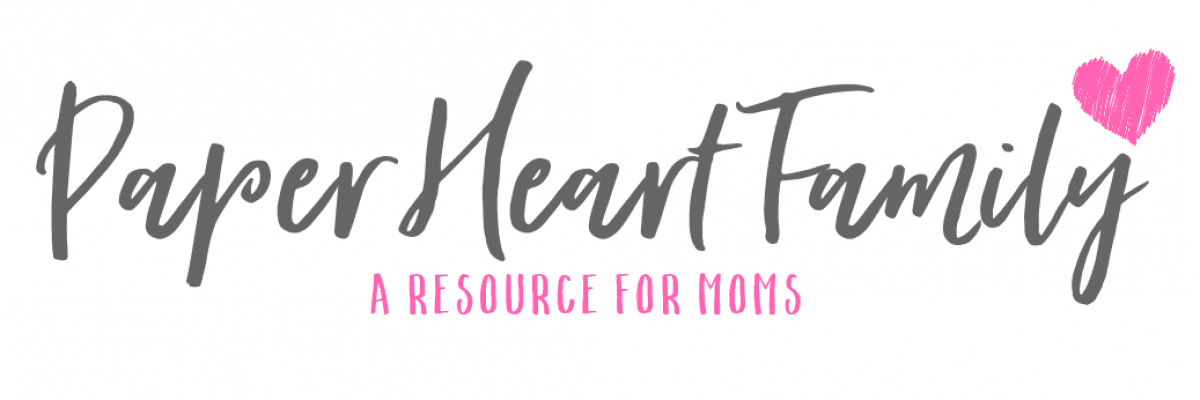
19 Activities For Three Month Olds: What To Do Everyday
By: Author Brenda Kosciuk
Posted on Published: June 30, 2022 - Last updated: July 28, 2023
Wondering what to do with a 3 month old baby when he’s awake?
My best advice is to keep it simple.
You might feel like your baby needs more stimulation, but at 3 months old, your baby is amazed by, well, pretty much everything!
Every baby is different, I realize. Some babies are demanding more attention at this age and some are content to just observe.
My first baby wanted to be entertained, even at the age of 3 months! She always wanted to be moving and exploring and interacting.
This list is full of simple things that I used to do with her.
My second baby , on the other hand, either nursed or slept for the first three months of her life. Seriously.
She was never awake and I didn’t have the opportunity to do any of these activities with her.
It might also be helpful to know what the typical milestones are for this age, so that you can focus on activities that will work to develop these skills.
Three Months Of Age Developmental Milestones
This list is a general list of milestones for 3 month olds. These are important skills however remember that baby’s develop at different rates and at their own pace.
- May raise head and chest when on tummy
- Opens and closes his hands
- Pushes down on his legs when on a flat surface (first stage of walking)
- May swipe at dangling objects
- May grasp at toys
- Can start to follow moving objects with his eyes
- Makes cooing noises
- Turns his head toward sounds (such as the sound of your voice)
- Enjoys playing
This post contains affiliate links.
Here are the best activities for your baby.
These infant development activities could be useful too.
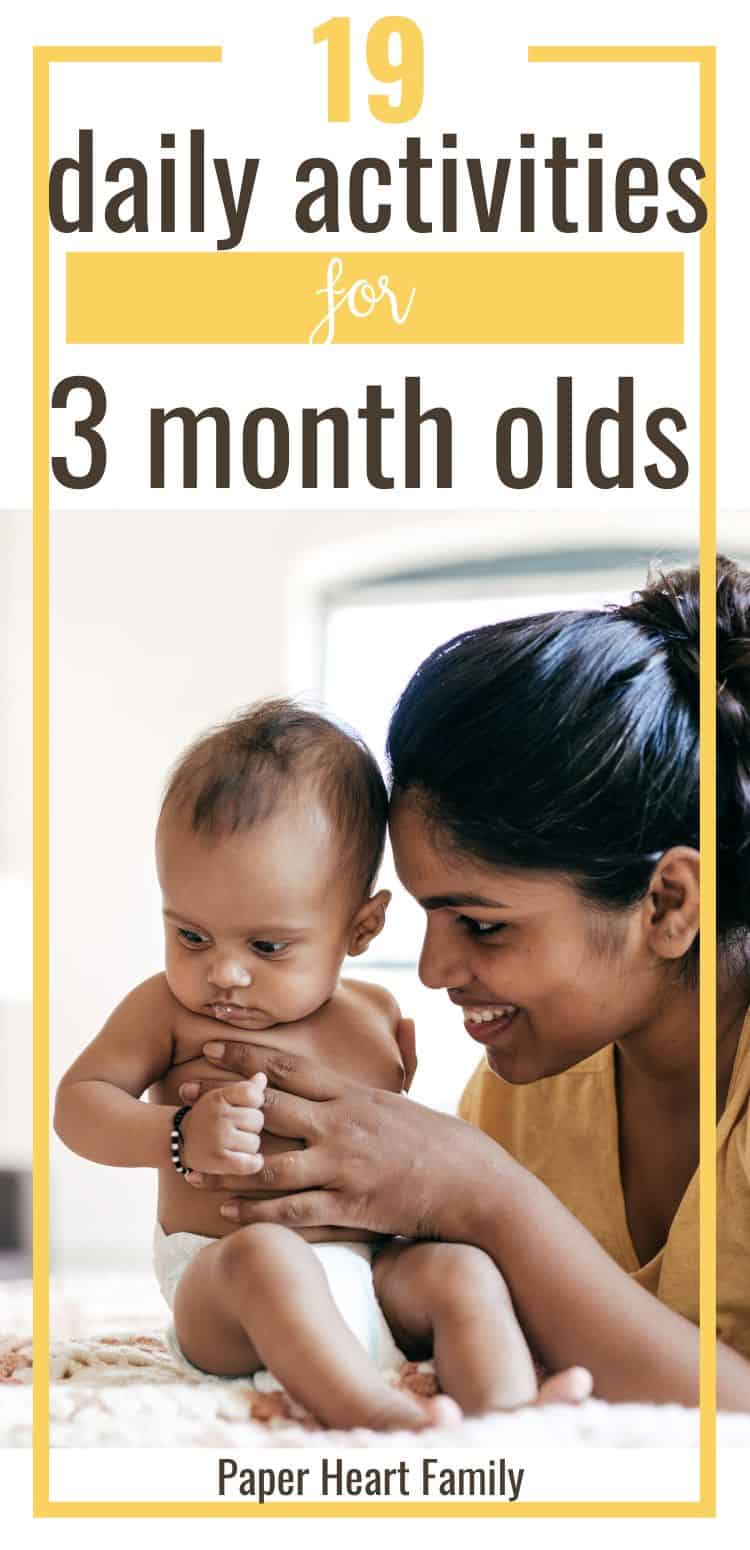
Activities For 3 Month Olds
1. talk to your baby.
Talking to your baby is probably one of the BEST things you could do for him.
Through talking to him, he’s learning so many language skills: he’s going to learn the structure of the language, expand his vocabulary, learn about maintaining eye contact.
And it’s of course so simple.
Talk to your baby whenever you can: when he’s in the sling, when you’re making dinner and he’s in the bouncer near you, when your changing his diaper, when you’re going for a walk, etc.
2. Read To Your Baby
You might think that your baby is too young for you to read to him, but that’s not true. This is the perfect time to start. You could read to your baby from day one of his life, and in my opinion, the sooner the better. It’s such a special time to share with your baby.
Reading, just like talking, is going to do great things for your baby’s language development.
And I would say it’s a good idea to start a routine of reading now, so that when he becomes more mobile he will be more likely to sit while you read.
Your 3 month old will love looking at the pictures and listening to your voice. And the repetition that your baby will get from reading the same books over and over again is so helpful for speech development, too.
3. Sing To Your Baby
Just like reading and speaking, singing is another simple activity and is a great way to interact with your child and develop future language skills .
These baby action songs are super engaging!
4. Implement Daily Tummy Time
I know that some babies just don’t like tummy time, but it’s still something that you should try to incorporate into your baby’s daily schedule.
Tummy time helps to develop strong neck muscles and shoulder muscles and develops fine motor skills essential for some very big milestones (sitting up, rolling over and crawling).
It can also help prevent positional plagiocephaly (flat spots on the head).
The best thing to do if your baby hates tummy time is to do it on your chest. Get into a semi-reclined position and lay your baby on top of you, stomach to stomach. This way your baby can look at you and feel more cozy during tummy time.
5. Listen To Music
Put on some music (it doesn’t have to be nursery rhymes!) and start dancing around with your baby.
6. Get A Play Mat
Allow your baby to have some stimulating time away from you.
I think the Fisher Price Kick’N’Play is a great play mat for babies because it has dangly toys but it also has a piano at the bottom of the mat that your baby will “play” when he kicks his feet. Both of my kids loved it.
Baby Einstein’s version looks pretty amazing, too.

7. Imitate Your Baby
Imitating your baby is super entertaining to him, and is a great way to teach him the back and forth manner of communication.
According to a study done by Lund University , babies like being imitated, and are more friendly toward imitators. Babies look and smile at those who imitate them more.
8. Mirror Play
There are so many benefits for your baby by using a mirror to look at, play with, etc. Not to mention, it’s super entertaining for young babies to see their own reflection and different facial expressions.
Mirrors help babies to learn how to reach, point and pat. It aids in the development of many visual skills, cognitive skills and even with language skills.
Put your baby in front of a mirror and watch as he falls in love with himself!
9. Play Peek-A-Boo
Playing Peek-A-Boo is such a classic fun game, but for good reason. Playing this simple fun activity will start to teach your baby the concept of object permanence.
He will start to realize that even if he can’t see you, you are still there.
Developing this skill is immensely important once separation anxiety hits.
10. Hold Toys For Your Baby
Holding a toy or different objects in front of your baby and moving it around encourages your baby to grasp it, or at least try to. It’s a great hand-eye coordination activity.
The simple act of looking at the toy is beneficial for babies, especially if they are high contrast toys.
High contrast toys (toys that are black and white for example) can not only strengthen your baby’s mind but can also improve your baby’s vision.
11. Help Your Baby Discover His Own Hands And Feet
A baby’s hands and feet can become their favorite toy at this age, once they are discovered. If your baby hasn’t discovered his hands and feet yet, you can help him out by:
- clapping your baby’s hands together
- stretching your baby’s little arms up overhead
- pedal your baby’s legs
- place toys in your baby’s hands
- tickle your baby’s face with his feet
- get some Lamaze hand and foot finders to put on your baby’s wrists and ankles
12. Have Age-Appropriate Toys Available
At this point, you do NOT need a lot of toys, because your baby may not play with them anyway. However, here are a few favorite baby toys that have good reviews with the 3 month old crowd.
- Oball – The Oball is a super easy ball to grasp (and can easily be placed in your baby’s hand)
- Sophie The Giraffe – Sophie the Giraffe is essentially a teether made out of natural rubber that is easy to hold, squeaks and is high-contrast.
- Beatbo – Beatbo is a soft, plush toy that lights up and sings when his belly is pushed. The lights also move with the music. It’s a great toy for baby’s who love music and dancing.
13. Stand Your Baby Up
Strengthen those leg muscles by standing your baby up on the floor or on your knees facing you.
14. Take Your Baby Where You Go In A Sling
A baby carrier is going to allow your baby to see a lot of different things which stimulate his senses while also giving him a lot of close contact with you.
Oh, and of course it’s an easy way to allow you to have your hands free to do something for you. Win, win!
15. Get Outside At Least Once A Day
Especially if your 3 month old has a typical fussy period at some point in the day, making getting outside one of your daily activities can nip that fussiness right in the bud.
16. Get Out Of The House
Just getting a change of scenery is so beneficial for your baby (and maybe even more so for you). Go to the mall and walk around or to the local park. Even going to Target will be exciting for your baby.
17. Enroll Your Baby In Playtime At The Local Library
Your baby won’t really “play” with the other babies at play group, but he will start to be able to see other babies. Even more importantly, you will be able to connect with other moms who are going through the same stages that you are experiencing.
18. Extend Bath Time
If your baby loves bath time, extend it! Let him play and splash and get all wrinkly. Refill the tub with warm water a few times and let your baby enjoy bath time.
19. Give Baby Your Finger
Your baby can most easily develop his grasp by holding onto your finger. There’s no better feeling than your baby holding on to your finger, right?
So that’s it! Like I said, keep it simple and enjoy this stage, but also be present in your baby’s learning process. Your baby will only be a baby for a very short time.
It will get easier soon! Your baby will start to hold onto toys and scoot around very soon.
- 135 Beautiful Baby Quotes
- Baby Won’t Sleep Without Being Held
- How To Encourage Your Baby To Laugh
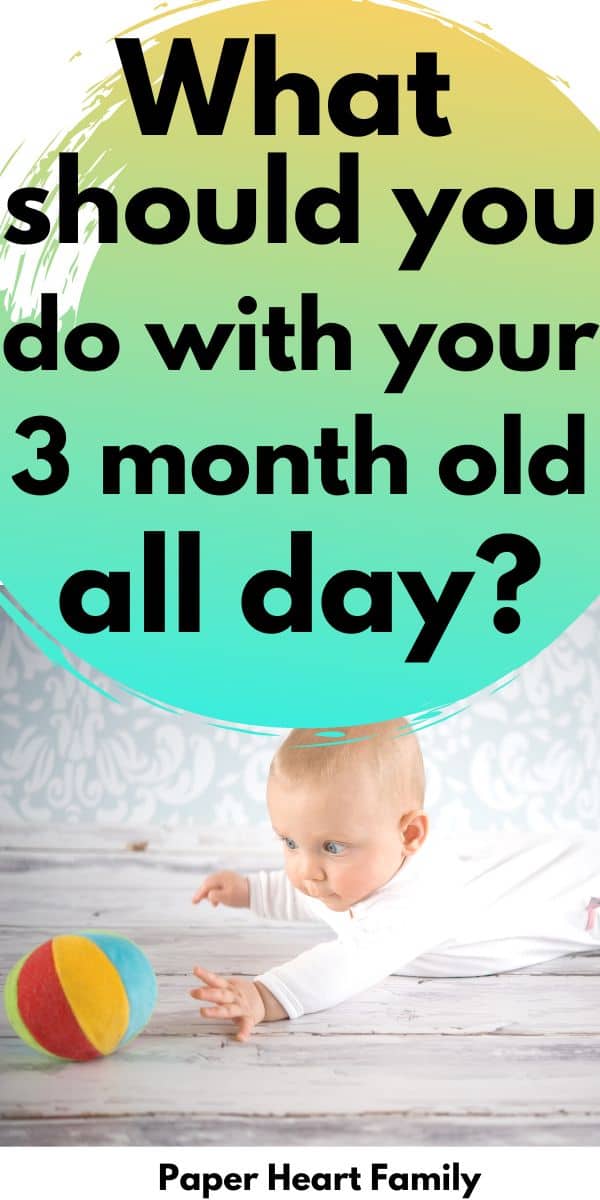
Activities For 3 Month Old Baby: Learning And Development
What should a 3 month old be doing.
At three months old, your baby may start to develop more control over their movements. They might start reaching for objects, holding their head up for longer periods, and showing more interest in their surroundings.
What The Experts Say
"Play is a fundamental building block of an infant’s development – setting the stage for a lifetime of learning and exploration. Through play, infants explore the world around them, developing crucial motor skills and fostering cognitive abilities. For example, infants learn to manipulate objects and start to understand cause and effect by grasping a rattle and then shaking the rattle to make noise. Play also lays the foundation for social interaction. It is during play that infants learn to communicate by mimicking sounds, gestures, and facial expressions of caregivers. Playful interactions with warm and nurturing caregivers also foster emotional development and emotional regulation. Play during infancy provides the necessary stimulation for growing brains and bodies, promoting healthy growth and overall development." Noreen Commella, Psy.D., Licensed Psychologist for HYM
At three months of age, babies are usually more alert and display intentional movements, and they become more aware of their surroundings, showing a heightened interest in interacting with the world around them.
Activities for 3 month old babies are vital for stimulating their senses and helping them to develop motor skills, cognitive abilities, and language.
From simple games like peek-a-boo to introducing them to different textures, there are a plethora of activities that are both enjoyable and beneficial for your little one.
1. Tummy Time
Tummy time is essential for a 3 month old. It helps to strengthen the neck, back, and shoulder muscles and prepares them for crawling. Place your baby on their tummy on a flat, soft surface. Stay close and interact with them, using toys or making faces to keep them engaged. Gradually increase the duration as your baby becomes more comfortable with tummy time. Avoid doing it immediately after feeding to prevent discomfort.
2. Sensory Play
At this age, babies are developing their senses, and sensory play is an excellent way to stimulate them. Use sensory bottles filled with glitter, beads, or water, and DIY sensory mats with different textures. Allow your baby to feel various materials like soft fabric, rubber, or a cool metal spoon to explore different sensations.
3. Reading and Storytelling
Reading to a 3 month old can be a delightful experience for both the baby and the parent. Though they might not understand the words, the sound of your voice and the pictures in the books are stimulating. Choose colorful books with large images. As you read, point to the pictures and vary your tone to keep them engaged.
4. Playing with Toys
Introduce your baby to toys that are easy to grasp and safe to chew on. Rattles, soft plush toys, and teething toys are ideal. Playing with toys helps them develop hand-eye coordination and discover cause and effect as they realize that shaking a rattle makes noise.
5. Encouraging Movement
Help your baby discover their body by encouraging movement. Gently move their arms and legs in a cycling motion, or playfully tap their feet. You can also use foot rattles to encourage them to move their legs. These activities are not only fun but also crucial for motor development.
6. Social Interaction
Social interaction is essential for your baby’s emotional development. Engage in face-to-face interaction, making different facial expressions, and see if your baby tries to imitate them. Also, provide opportunities for them to interact with other babies and adults in a safe environment.
7. Baby Massage
Massage can be a calming activity for your 3 month old. It's not only a way to bond but also has numerous health benefits, including improving circulation and aiding digestion. Use a gentle baby oil or lotion and massage their body with light, circular movements. Be attentive to their cues to ensure they are enjoying the experience.
8. Listening to Music
Music can be incredibly stimulating for a 3 month old. Play different types of music and observe your baby’s reaction. Lullabies and nursery rhymes are great, but don't hesitate to introduce them to various genres. Music can calm a fussy baby, improve brain development, and establish a sense of rhythm.
9. Mirror Play
Babies are often fascinated by their reflection in the mirror. Hold your baby in front of a mirror and let them observe themselves. Point to different parts of their face in the mirror and name them. This activity can be entertaining and also helps in developing self-recognition and social skills.
10. Outdoor Strolls
Taking your 3 month old for a walk outside can be a sensory feast. The fresh air, different sounds, and the changing scenery can be very stimulating. Make sure your baby is dressed appropriately for the weather and protect them from the sun. Talking to them about what you see and pointing out different objects can also be educational.
11. Water Play
Many babies love water. Engage in gentle water play by placing your baby in a small tub with a little water. Always ensure that the water is warm, not hot, and never leave your baby unattended. Splash a little and let them feel the water with their hands and feet. This is not just fun but also gets them accustomed to water, which can be helpful for bath times.
12. Language Development Activities
Engage your baby in activities that encourage language development. Talk to them constantly, narrate your actions, and respond to their coos and babbles. Imitate the sounds they make and encourage them to mimic you. This interaction is vital for language development and helps build a foundation for future communication skills.
13. Visual Tracking
Help your baby develop visual tracking skills by moving objects slowly in front of their eyes. Use colorful toys or objects and move them from side to side, then up and down. This activity encourages the development of eye muscles and coordination, which are essential for later skills like reading.
14. Gentle Tickles
Tickling your baby gently can be a joyful bonding experience. It can also help in sensory development. Use your fingers to tickle their tummy, feet, or under the arms. However, be cautious and make sure not to overdo it, as some babies might not enjoy being tickled.
15. Baby Yoga
Baby yoga can be a calming and bonding activity for both the parent and the baby. It involves gentle stretches and movements that can aid in your baby's physical development. There are classes available for baby yoga, or you can find tutorials online. Always ensure that the movements are gentle and suitable for a 3 month old.
16. Introducing High Contrast Images
At three months, babies are particularly responsive to high contrast images. Showing them black and white pictures or toys can be visually stimulating. You can find high-contrast books or even make your own cards with bold patterns. This activity can help with visual development and focus.
17. Playing with a Baby Gym
A baby gym is an activity center with hanging toys and mirrors. Place your baby under the gym and let them reach out for the toys. This activity is excellent for developing motor skills, hand-eye coordination, and spatial awareness.
18. Sound Exploration
Introduce your baby to various sounds. Use sound-making toys, or even simple household objects like pots and spoons. This exploration of sound is not only stimulating but can also be an early introduction to the concept of cause and effect.
19. Introducing Different Smells
Expose your baby to various gentle smells. You can use things like a cut lemon, vanilla essence, or fresh flowers. Ensure that the smells are not too strong and observe your baby’s reactions to different scents. This activity can stimulate the sense of smell and contribute to sensory development.
20. Play Peekaboo
Peekaboo is a classic game that never gets old for babies. Hide your face behind your hands or a cloth and then reveal it with a smile. This simple game can be very entertaining for a 3 month old and can help develop social and cognitive skills.
21. Have Fun
Remember that while engaging in these activities, the most important thing is to enjoy the time spent with your baby. These moments are not just for development but are also precious bonding opportunities.
Engaging your 3 month old in various activities is essential for their development. Keep in mind that every baby is unique, so it's important to be attentive to their cues and adapt activities according to their preferences and comfort levels.
Always ensure safety and consult a pediatrician if you have any concerns about your baby's development. Be attentive to your baby’s needs and preferences and ensure their safety and comfort during these activities.
What are some fun activities for 3-month-old babies?
At three months old, babies are becoming more interactive and are developing better control over their movements. Fun activities for 3-month-old babies include tummy time with added reaching and grasping challenges, playing with rattles and other noise-making toys, engaging in baby conversations, and introducing simple baby games like peekaboo.
Always follow your baby's cues and adjust the activities according to their needs and preferences. Supervise your baby during these activities and ensure their safety and comfort at all times. Remember that every baby is different, and their development may vary.
How can I support my 3-month-old baby's development through activities?
Supporting your 3-month-old baby's development involves providing them with a variety of stimulating activities that encourage sensory exploration, motor skill development, and social interaction. Tummy time with reaching and grasping challenges helps strengthen their neck and upper body muscles while also developing their hand-eye coordination and fine motor skills. Playing with rattles and noise-making toys can improve their auditory skills and cause-and-effect understanding.
Engaging in baby conversations by mimicking their sounds and responding to their vocalizations can support their language development and social skills. Introducing simple baby games like peekaboo can help develop their cognitive skills and understanding of object permanence. Be patient and consistent with these activities, and always create a nurturing and supportive environment for your baby to explore and learn at their own pace.
What are some fun activities to engage a 3-month-old baby's growing curiosity?
As your baby reaches three months old, their curiosity and awareness of their surroundings increase. Engaging them in fun activities can help stimulate their development. One activity is to play peekaboo with your baby, hiding your face behind your hands or a cloth and then revealing it. This helps to develop their understanding of object permanence and encourages social interaction.
Another activity is to use a baby-safe mirror to allow your baby to explore their reflection. This helps them become more aware of themselves and promotes self-recognition. You can also introduce your baby to various textures by providing soft toys, blankets, or other items with different textures for them to touch and explore. This encourages sensory development and curiosity.
How can parents help their 3-month-old baby develop better hand-eye coordination?
Developing hand-eye coordination is an essential skill for your 3-month-old baby. One way to help improve this skill is by encouraging your baby to reach for and grasp toys. You can hold toys within their reach or place them on a play mat, encouraging your baby to stretch and reach for them. This helps to develop their fine motor skills and hand-eye coordination.
Another activity is to use a baby gym or activity center with hanging toys that your baby can bat at or grab. This encourages them to focus on the toys and practice coordinating their hand movements with their visual perception. Additionally, you can play with your baby by gently rolling a soft ball towards them, encouraging them to reach for and eventually grasp the ball, further developing their hand-eye coordination.
More Child Development Activities
Activities for 2 month olds, activities for 4 month olds, explore hym, our offerings, autism, adhd, occupational, speech & language.
- Search Please fill out this field.
- Newsletters
- Sweepstakes
- Baby Development
- Infant Growth Chart
- Three Months
- Four Months
- Five Months
- Seven Months
- Eight Months
- Nine Months
- Eleven Months
3 Month Old Baby Milestones to Know
Your 3-month-old baby is getting stronger and discovering all the things their body can do. Check out these 3-month baby milestones.
- Schedule and Routine
- Health and Wellness
- Safety Considerations
Things to Keep in Mind
- How to Support Baby's Development
When to Talk to a Health Care Provider
- Next in Baby's First Year All About Your 4-Month-Old Baby's Milestones and Development
Three months is a turning point for many babies and their parents. Your baby is no longer a newborn and they have officially completed the first quarter of their first year of life. They have reached a number of milestones, such as tracking objects with their eyes, reaching and grasping for things with their hands, and pushing up on their arms when lying on their tummy. What amazing accomplishments!
For many parents, 3 months marks a time when things get a little easier. Some of the not-so-fun parts of caring for a newborn—like colic and constant feeding—may have gotten better. At this age, sleep schedules may have become a little more predictable, too.
Still, there are some challenges that come with having a 3-month-old, and if you are still feeling tired and overwhelmed, that’s normal too. Let’s take a look at what milestones to expect once your baby turns 3 months, as well as some feeding, sleep, baby care, and health and safety tips.
Joshua Seong
At This Age
- Development : Your baby will start to recognize you from farther distances, and will now be able to start lifting their head and chest up from a belly-down position.
- Food : The length between feedings has stretched out and you may have a more predictable feeding routine.
- Sleep : More of your baby’s sleep happens at night now, and your baby may start sleeping longer stretches at night—some babies are even sleeping through the night.
3-Month-Old Physical Milestones
A 3-month-old baby has hit an exciting time. By the end of this month, they may begin to laugh (so get that camera ready!). But they'll also start to develop hand-eye coordination, which will help set your little one up to achieve something spectacular in the next month or so: the ability to roll over .
Your baby's movements become more focused and steady as they try new things, including:
Head Control
The biggest thing is the head control that a 3-month-old baby gains, says Kenneth Wible, MD, medical director of the Pediatric Care Center at Children's Mercy Hospitals & Clinics in Kansas City, Missouri. "They should be able to hold their head steady if you hold them upright. Sometimes they will lift their head up if they get their arms under them."
Your 3-month-old will also start to use their hands more and might put them together in front of themselves. "They're not going to take things, but if you present them with a toy or something else that attracts their attention, they'll hit it with their fist," Dr. Wible says.
Arm Coordination
As the month goes on, your 3-month-old baby will continue to gather strength in their core and extremities. "During that third month, they're really developing their coordination with their arms; they're learning the control of their arms and the awareness. Rattles with sounds can be very helpful because it gives them feedback about where their arms are," says Donna Eshelman , a movement specialist and founder of Stellar Caterpillar, a Los Angeles-based business focused on helping babies reach their gross motor milestones in the first year.
Toward the end of the third month, you might see your baby roll over, she adds. Although the Centers for Disease Control and Prevention (CDC) lists this as a 6-month milestone, many babies surprise their parents with this trick much earlier.
Most babies first roll from their tummies to their backs, then as they get stronger and more coordinated, from their back to their tummy. Another reason to encourage tummy time !
You may notice that your baby really begins to work their legs at 3 months old. If you lay them on their belly or back, your baby should start kicking their legs playfully and stretching their legs out. If you try to stand or sit your baby up (while supporting them, of course!), they will push down with their feet.
Additional Behaviors at 3 Months
Here are some other exciting milestones your baby is likely to reach this month:
- They will continue to expand and refine their vocal skills, cooing and even starting to babble
- They may be able to hold objects for longer periods of time and may be able to start shaking them
- They may begin imitating sounds that they hear
- They will turn toward whoever is speaking
3-Month-Old Feeding Milestones
By 3 months old, babies are still feeding frequently, but not quite as frequently as when they were newborns. Many parents find that they are more settled into a feeding routine , and can more readily predict when their baby will need to eat, and begin to plan their days around this.
Breastfeeding babies still need to feed at least eight times in a 24-hour period, but some babies are still feeding more frequently than that . There is a wide range of normal. While breastfeeding, let your baby finish one breast before offering the other. Let your baby guide you in this process.
Formula-fed babies may be able to stretch the time between feedings to up to four hours. They generally take about six ounces per feeding at this age, but again, this will vary depending on how hungry your baby is. Always feed your baby based on their hunger cues.
Only about half of all parents are still exclusively breastfeeding when their babies hit the 3-month mark. This is often because parents have gone back to work and find it difficult to keep up with a pumping schedule. It’s important to keep in mind that breastfeeding isn’t all or nothing. It’s possible to combine formula and breastfeeding.
You can talk to a lactation consultant or health care provider about how to do this, and what the best ways are to keep up your milk supply as you return to work.
3-Month-Old Sleep Milestones
Three months marks some significant changes when it comes to sleep. Your baby is still sleeping about 15 hours a day, give or take. But now, they are doing the bulk of their sleep at night, which will come as a welcome relief to parents.
This means that, rather than sleeping at random times during the day, your baby is starting to take actual naps during the day, followed by longer periods of playtime. All babies are different when it comes to naptime, though, so don’t be surprised if you still have a catnapper at this age.
“Naps are varied—some take thirty-minute ones throughout the day, others take two longer ones,” says Gina Posner, MD, a pediatrician at MemorialCare Orange Coast Medical Center in Fountain Valley, CA. “Most take at least two naps a day at this point.”
Three months is also the time that some babies are able to technically start to sleep through the night. But many babies just aren’t there yet, says Dr. Posner. “I wouldn’t expect a baby to sleep through the night, but some do,” she notes.
Keep in mind, too, that “sleeping through the night” has a different definition when it comes to babies. A 3-month-old is considered to be sleeping through if they have slept six to eight hours in a row, even though they may sleep a total of nine or 10 hours a night. Still, many babies aren’t even there just yet, and still wake every few hours all night. This is perfectly normal, too.
3-Month-Old Schedule and Routine Milestones
It may not seem like it, but your baby is rapidly developing their language skills . Your baby has been cooing for a while, but this month, you may start to hear them babble. They may respond with smiles while they hear your voice and may even start trying to imitate the words that you say.
As your baby starts to have longer stretches of awake time during the day, you can use that time to talk to your baby, interact with them, and even start reading books to them. All of these activities help develop their language and communications skills.
So, talk to your baby as you draw them a bath and change their diaper. Describe what you're doing with them. Watch and marvel as they listen attentively, even though they probably don’t really know what you are saying.
As for reading, select books that are brightly colored, simple, and that give you opportunities to be animated and silly as you read. Baby-friendly books that your little one can grab and play with are even better.
3-Month-Old Health and Wellness Milestones
Your baby isn’t too messy yet (just wait till they start eating solids !), but caring for a baby involves quite a lot of clean-ups. Let’s look at what to expect this month.
You are still changing a lot of diapers, though maybe not quite as many as before. Your 3-month-old isn’t pooping nearly as much as they did as a newborn. It’s normal if they only poop once or twice a day, and even go a few days in a row without pooping. Your breastfed baby’s poop will still be loose, but formula-fed babies have firmer poops.
Spitting Up
Your baby probably isn’t spitting up quite as much as they did as a newborn, but it’s normal to continue to spit up sometimes at 3 months. As long as your baby is growing and is a “happy spitter,” you don’t need to be concerned. Just have a good supply of burp cloths on hand.
Your baby is probably not about to get any teeth just yet, but the teething process may be starting, and it’s normal for drooling to start as early as 3 months. Your baby may even start to have a few “drool bubbles.”
Drooling is not an issue as long as it’s not accompanied by other signs of illness, like fever or congestion. If your baby is drooling and is having trouble breathing, they may have choked; seek immediate emergency care if this is the case.
Safety Considerations at 3 Months
You likely won’t have another well visit for your baby until they reach 4 months; however, you should of course contact a pediatrician or health care provider with any questions you may have before then. If your baby shows any signs of illness or fever, or has any kind of accident, contact a health care professional right away.
At 3 months, you know the basics about keeping your baby healthy and safe. But there are a few safety issues that might come up now for you to be aware of.
Shopping Cart Safety
Now that you are out and about more, you will likely start taking your baby on errands with you. It can be tempting to take their portable infant car seat and place it on the top of a shopping cart, but this is not considered safe. In fact, according to the AAP, shopping cart accidents are one of the greatest dangers to young children, and account for 20,000 emergency room visits per year.
If you do take your baby shopping with you, it’s best not to place your baby in a shopping cart. Shopping carts can even be dangerous for older children. The AAP suggests that you instead wear your baby in a baby carrier, or use a stroller or wagon. If none of those are possible, it might be best to keep your baby home rather than take them shopping.
Taking Medications While Breastfeeding
If you are still breastfeeding your baby, you may have questions about what types of medications are safe to take—from cold medications to antibiotics to medication to treat anxiety or depression. According to the Centers for Disease Control and Prevention (CDC), most medications are safe for breastfeeding parents; however, you should always check with a health care professional. If a medication isn’t safe, there is often an alternative that is. Discuss your options with a pediatrician, health care provider, or a lactation consultant.
Don't freak out if your 3-month-old baby seems slow to reach gross motor milestones. "If the baby doesn't put [their] hands together or doesn't necessarily babble but makes other sounds, that's OK," Dr. Wible says. "They do things at their own pace and their rate."
That said, if you have concerns. Don't hesitate to bring them to your baby's doctor. According to the American Academy of Pediatrics (AAP), some early signs of a physical or gross motor delay include:
- Having trouble rolling over, sitting, or walking
- Unable to hold head and neck steady
- Muscles that seem stiff or floppy
In addition, you should alert your doctor if your baby isn't symmetrically moving their arms or legs or prefers one extremity over another. This could be a sign of a central nerve injury, says Dr. Wible, adding that he doesn't like to dwell on red flags at this age. "I've seen babies with red flags, and they turn out to be fine," he says.
Your baby is still growing very rapidly these days, and after their latest growth spurt, they may even be ready to grow into the next size of clothing. You probably have noticed that their face has filled out and their little arms and legs have become chunkier. So cute!
Your baby generally grows about 1 to 1 ½ inches taller at this age and gains about 1 ½ to 2 pounds per month. But in about 4 months, your baby will have doubled their birth weight. Keep in mind that these are all estimates. It’s normal if your baby’s growth is a little slower and faster than this. All babies grow at their own rates.
How to Support Your Baby's Development at 3 Months
There are many ways to encourage your 3-month-old baby to develop their motor skills. It is important to remember that you can't rush your child's development, but you can make motor skill development lots of fun for you and your baby. Here are a few ideas.
Offer Lots of Tummy Time
Your baby should get plenty of tummy time every day. "That's such an important time," Eshelman says. "It's like a cornerstone of motor development."
The pressure of their hands on the floor during tummy time connects them to the muscles of the hands and shoulders, developing strength.
Experts at the Eunice Kennedy Shriver National Institute of Child Health and Human Development, offer some tips for tummy time, such as:
- Spread a blanket for your baby to lie on.
- Prop your baby up slightly with a rolled-up towel under their arms.
- Keep it short to limit frustration.
- Try regular times, like after a nap or diaper change.
- Try to encourage interaction by placing a toy just out of their reach.
- Sit in front of your baby to interact and bond.
The exercise your 3-month-old baby gets now can pay off in the future. "Later, around months six and seven, they will sit up for the first time with gorgeous posture if they've had a lot of practice," Eshelman says. "A lot of times, parents will put them sitting up too soon, and their spine will curl backward because they don't have strength."
Explore Together
Encourage your baby to explore their surroundings in new ways, Dr. Wible says. "Allow them to touch their feet to surfaces, and challenge them with toys and attractive objects that encourage them to try to reach or grasp for something," he suggests.
Encourage Hands-On Play
Eshelman encourages toys that make a sound based on a baby's movement, such as a rattle, "as opposed to something electronic and lights up when you push a button," she says. The unplugged rattles help develop the movement of the hands and arms, whereas the electrical toys only develop finger movement.
"It is very important to choose rattles that are a size that fits into [your] baby's small grip. A simple maraca or barbell shape is the perfect first rattle," she adds.
Talk to a health care provider if you have concerns about your child's development. According to the Department of Health and Human Services, babies should see their doctor for well-child checkups six times before their first birthday. This way, they can monitor how well and when your baby reaches essential milestones.
The CDC recommends talking to a health care provider early if you have concerns since early intervention can make a difference. They can help you determine if delays are within a normal range or concerning and direct you to developmental screening and intervention if necessary.
Additional reporting by Wendy Wisner .
Babies this age should still be only consuming breastmilk or formula. Solid foods aren’t appropriate for 3-month-olds.
Your baby isn’t talking yet, but they may be cooing or babbling.
Your baby can’t see very clearly from a distance, but may be able to make out some of the shapes and colors on the TV if they are close enough. However, most experts recommend against allowing 3-month-olds to watch TV.
3-month-old babies take several naps a day, usually about two to four in total.
You don’t have to wake your 3-month-old to eat if they sleep long stretches at night, but if they wake up hungry, you should feed them.
Three-month-olds usually sleep nine to 10 hours at night and about four to five hours during the day. Put your baby to sleep when they show signs of fatigue, such as rubbing their eyes or acting fussy.
Colic and crying - self-care . U.S. National Library of Medicine.
Infant sleep . Stanford Children’s Hospital.
Developmental milestones: 3 months . American Academy of Pediatrics.
Your baby's growth: 3 months . Nemours KidsHealth.
Milestone moments . Centers for Disease Control and Prevention . n.d.
Movement milestones: Birth to 3 months . American Academy of Pediatrics . 2020.
Important milestones: Your baby by 6 months . Centers for Disease Control and Prevention . 2023.
Breastfeeding report card . Centers for Disease Control and Prevention.
Why babies spit up . American Academy of Pediatrics.
Drooling and your baby . American Academy of Pediatrics.
Checkup checklist: 4 months old . American Academy of Pediatrics.
Safe shopping with children . American Academy of Pediatrics.
Is your baby's physical development on track? . American Academy of Pediatrics . 2023.
Doctor visits: Make the most of your baby's visits to the doctor (0-11 months) . U.S. Department of Health and Human Services . 2023.
Concerned about your child's development? . Centers for Disease Control and Prevention . 2023.
Related Articles
Planning for a baby?
- Preconception Health
- Preparing for Pregnancy
- Assisted Pregnancy
- Second Pregnancy
Already Pregnant?
- Pregnancy Week by Week
- Health & Safety
- Live life better
- Preparing for the baby
- Pregnancy Diet & Fitness
Have a Baby?
- Baby Milestones
- Baby Basics
- Mother Care
- Activity & Fun
Have a Toddler?
- Toddler Mile Stones
- Toddler Basics
- Food & Feeding
- Child Safety & Health
- Games & Playtime
- Special Child
Positive Parenting
- Health & Hyginie
- Learning and Development
- Family Basics
Child Safety
- Special child Care
- Planning for Future
- Play, Games, activity & Fun
Life Skills
Premature baby, baby products, have a baby, activity & fun with babies, 8 learning and engaging activities for 3-month-old baby.
Written by Editorial Team

Editorial Team
With a rich experience in pregnancy and parenting, our team of experts create insightful, well-curated, and easy-to-read content for our to-be-parents and parents at all stages of parenting..
- Skill Development Of A 3 Month Old
8 Engaging And Learning Activities For A 3 Month Old
Skill development of a 3-month-old, 1. fine motor skills:.

2. Gross motor skills:
3. communication:, 4. learning:, 5. language:.
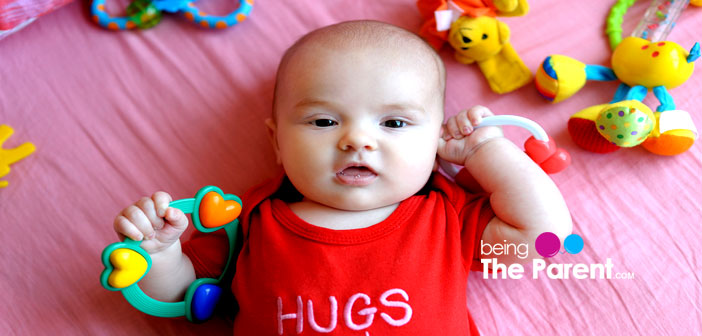
1. Reach out for toys:
2. talk, clap, sing, dance:, 3. surprise:, 4. flash it:, 5. feet/hands up in the air:.
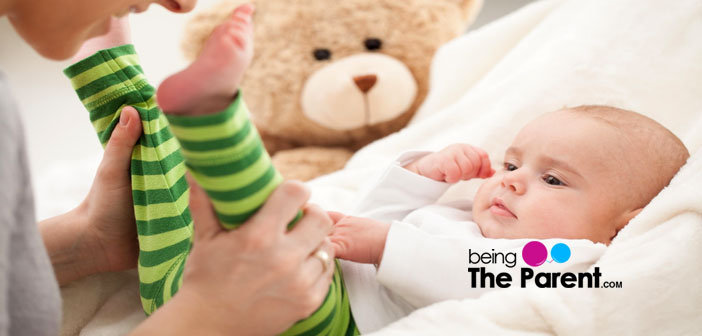
6. Bang on target:
7. hold it tight:, 8. move, sway, rock:, advantages of saffron during pregnancy.
Saffron is the dried stigma of Crocus Sativus flower, i.e. the thread-like part at the centre which contains pollen.

Editorial Team,
With a rich experience in pregnancy and parenting, our team of experts create insightful, well-curated, and easy-to-read content for our to-be-parents and parents at all stages of parenting. Read more.

Responses (0)
Want curated content sharply tailored for your exact stage of parenting, read this next, related articles.
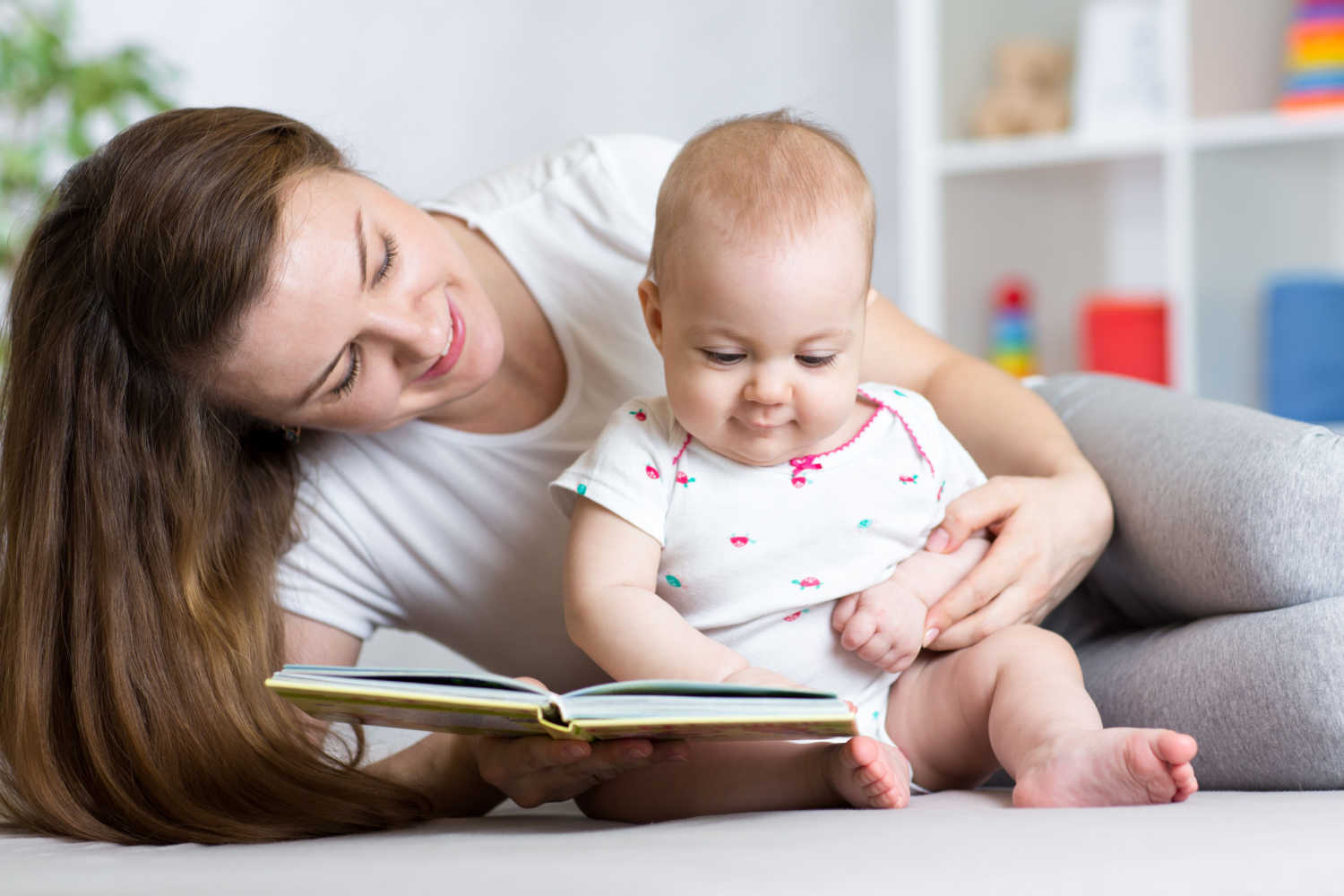
Top 8 Best Sound Books For Babies in First Year

Pregnancy Passions: Rediscovering Intimacy on the Parenthood Journey
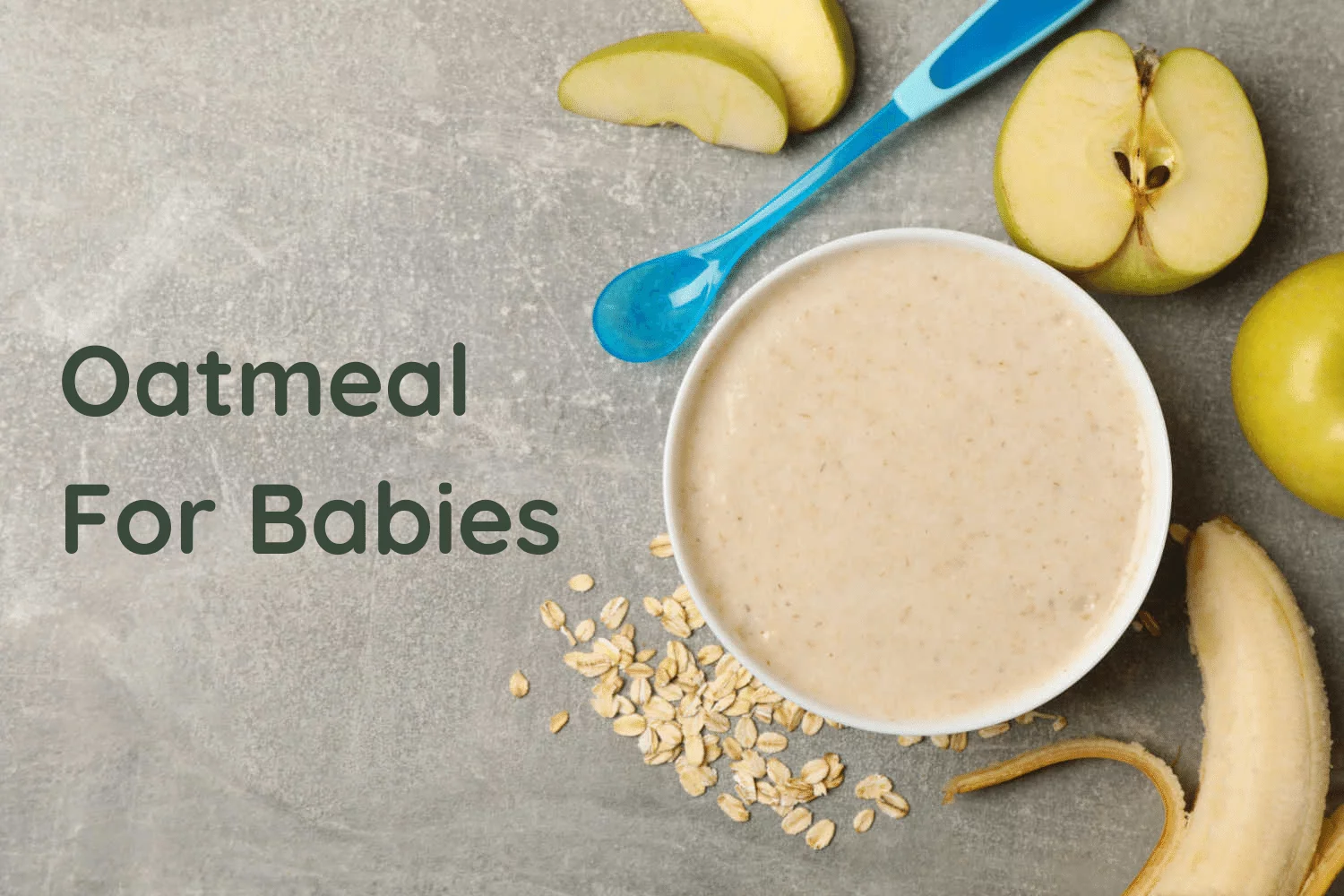
Oatmeal For Babies – When to Introduce, Benefits and How to Feed
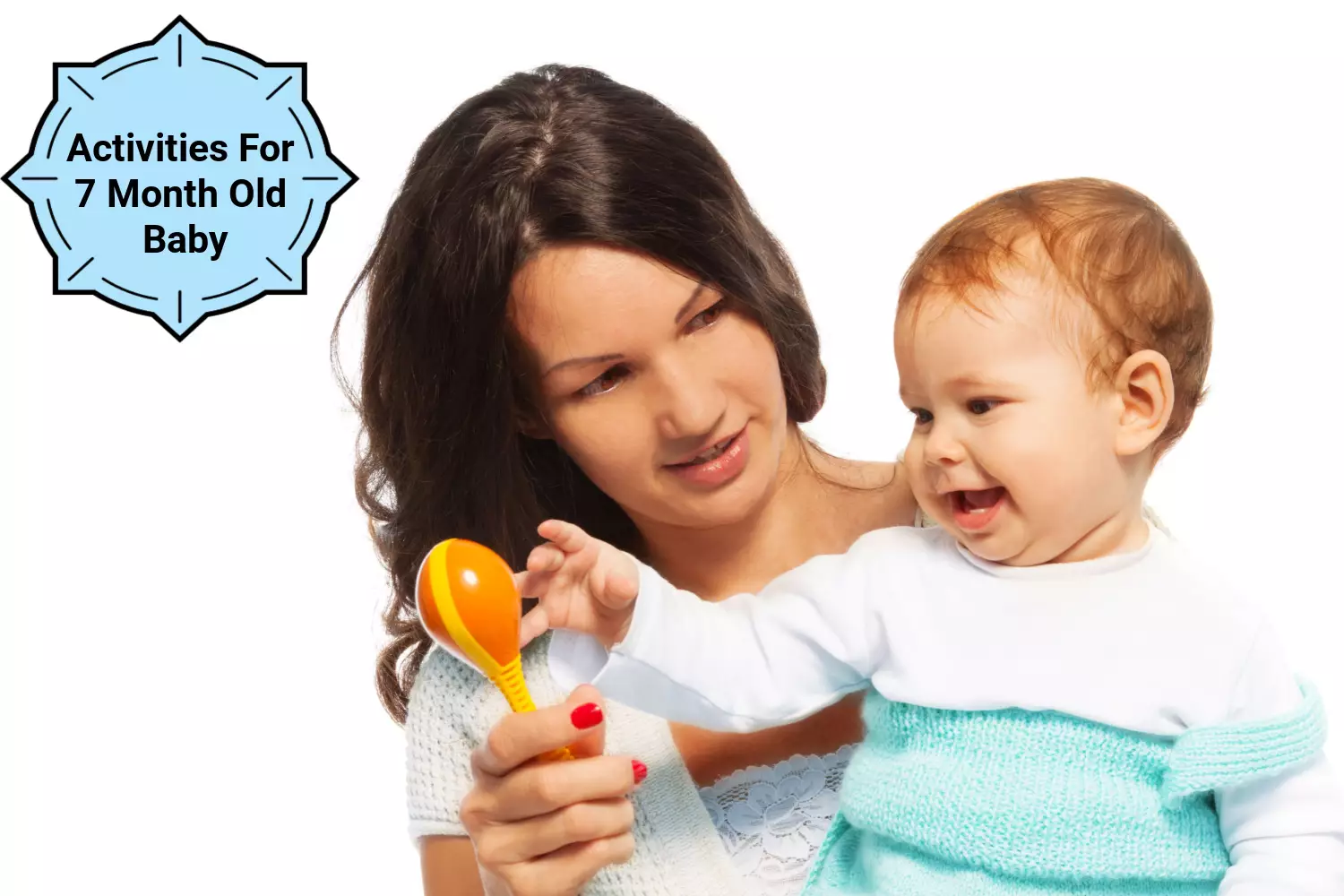
Top Activities For A 7 Month Old Baby – Benefits and Tips For Parents
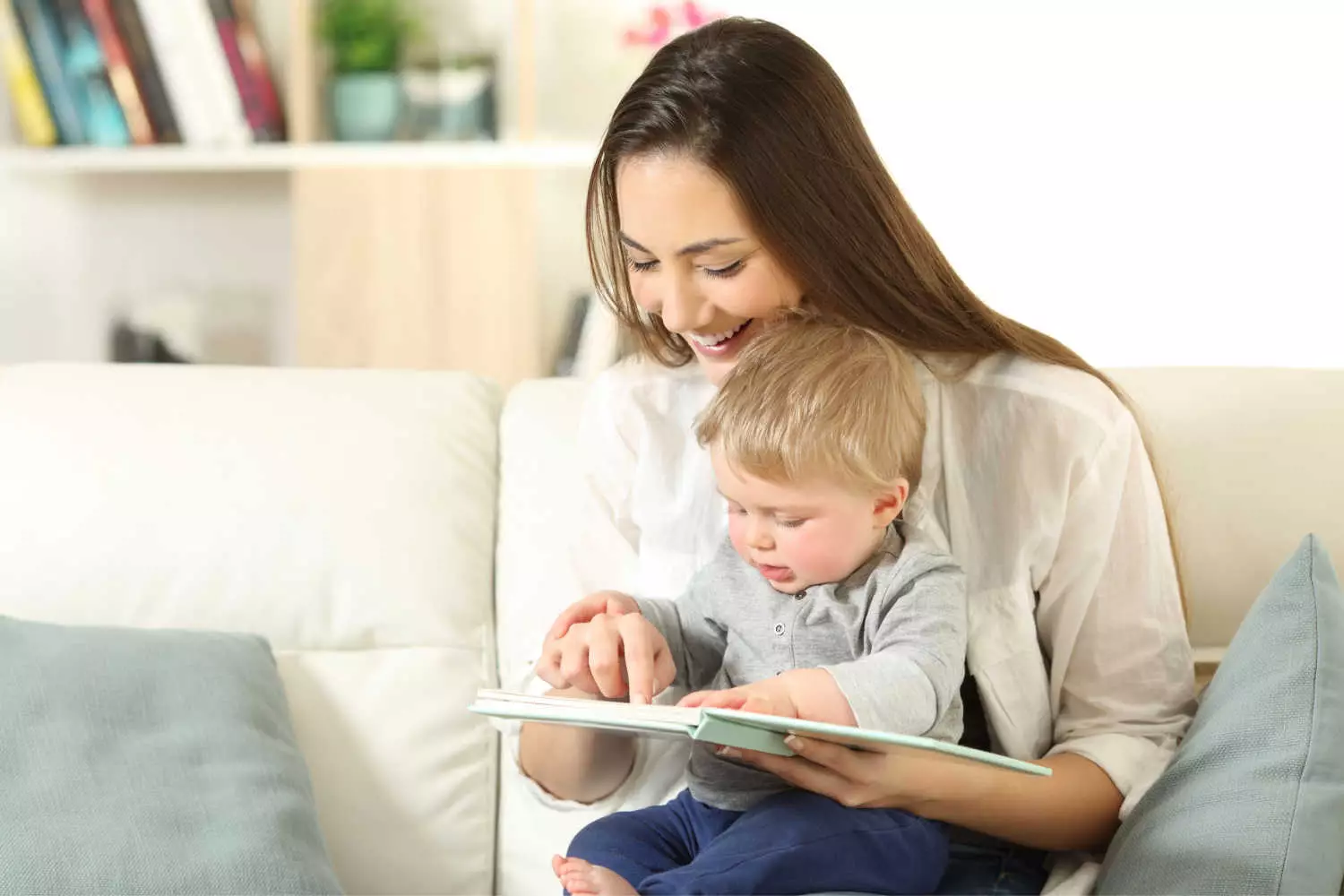
Top 8 Best Touch and Feel Books For Babies in First Year
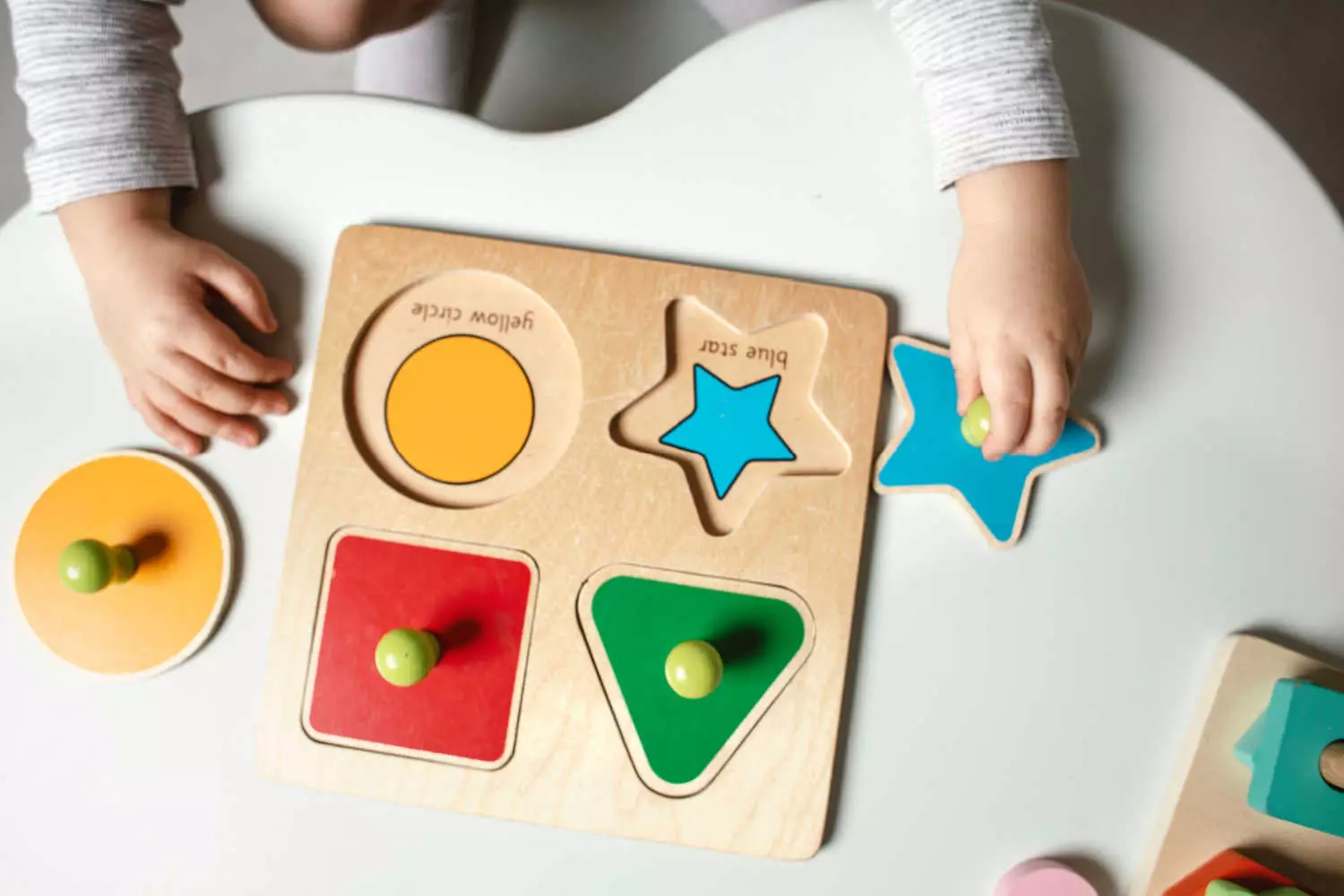
Puzzles For Babies – How it Helps in Baby’s Development
Sponsored content
Discover great local businesses around you for your kids..
Get regular updates, great recommendations and other right stuff at the right time.
Premium Access
Join our community of 50K+ Moms and get access to exclusive features & resources in our app.
Pay Rs 25/- and read this article (One time access)

Our site uses cookies to make your experience on this site even better. We hope you think that is sweet.
Create account
Focus your wanderlust. create your account to get curated stories and recommendations., already have an account sign in.
Don't have an account? Sign up forgot password?
Get curated personalized content., articles and resources served personalized as per the stage of your parenting., already have an account login, choose one..

Enter dates

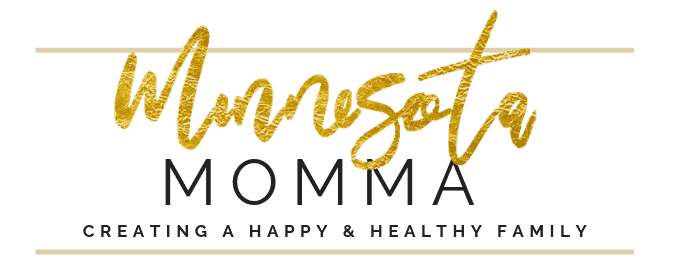
24 Activities for 3-6 Month Olds (Fun Ways to Play With Your Baby)
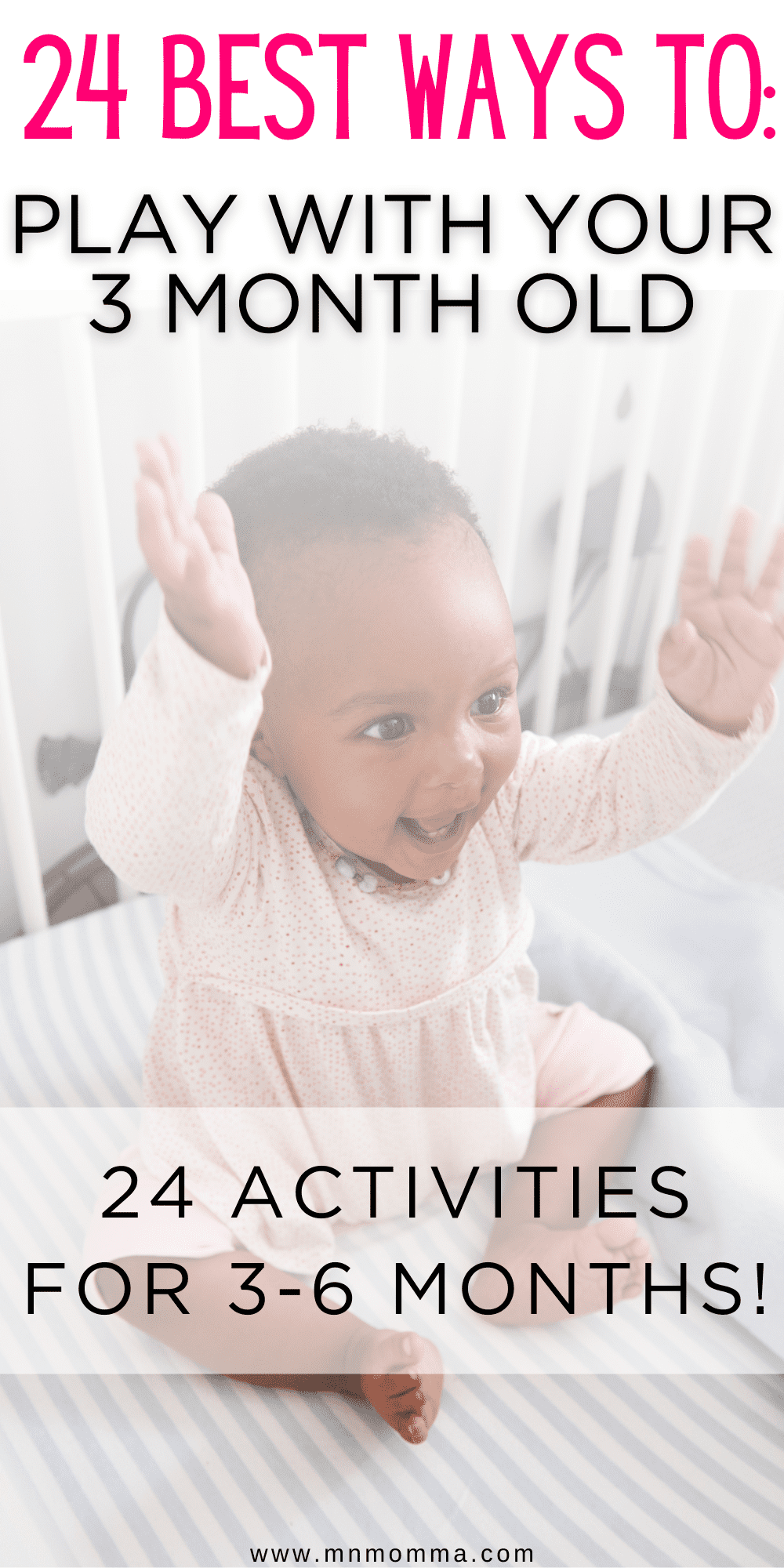
Disclosure: This post may contain affiliate links, which means I may receive a small commission if you click a link and purchase something. Please check out my disclosure policy for more details. All opinions are my own!
Welcoming a new addition to the family is an exciting time, and watching your little one grow and develop is one of the best adventures of parenthood.
At 3-6 months of age, your baby is beginning to become more alert and curious about the world around them.
As a parent, you may be wondering what activities you can do with your little one to help them explore and learn. Or maybe the days are just seeming long and you’re wondering what to do with a 3 month old all day.
Either way – you’re in good company of looking for the best activities to keep young babies learning and developing.
Here’s a great list of activities you’ll want to check out that are perfect for babies between 3-6 months old.
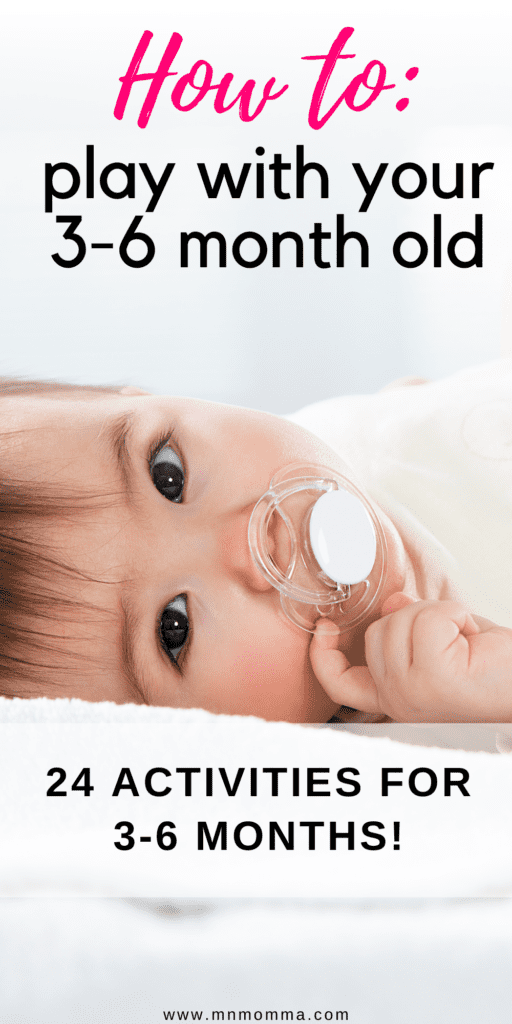
<—Pin it! Save this post for later!
Baby’s Development: 3-6 Months
Between 3 and 6 months, babies undergo huge physical, cognitive, and emotional development.
One of the most noticeable changes is that they begin to gain better control over their movements, especially their arms and legs. Making them much better at trying to reach and grasp objects.
They may also start to roll over from their stomach to their back and vice versa.
Cognitively, babies at this age are developing their sense of spatial awareness and hand-eye coordination.
They may begin to recognize faces and show interest in toys and other objects, using their new motor skills to manipulate them.
They may also start to babble and coo, as they practice using their voice and learning to communicate with others.
Emotionally, babies at this age are becoming more aware of their surroundings and may become upset when separated from their mom or dad.
They may also start to exhibit more complex emotions, such as joy, anger, and frustration.
To help support their development, parents and caregivers can provide plenty of opportunities for play and exploration, as well as lots of love and attention.
What Your Baby Can’t Do Yet (3-6 Months Old)
- Sit up without support
- Crawl or walk
- Feed themselves with a spoon or fork
- Understand complex language or follow instructions
- Speak in full words or sentences
- Fully control their hands and fingers to manipulate small objects
- Stand without assistance
- Chew solid foods (they still need to stick to purees or soft solids)
- Fully regulate their emotions and reactions to stimuli
- Show full object permanence (understanding that an object still exists even when it’s not visible)
Remember that every baby develops at their own pace and some may reach these milestones sooner or later than others. It’s important to provide a safe and stimulating environment for your baby to explore and grow at their own pace.
What Your Baby Can Do! (3-6 Months Old)
- Lift their head and chest when lying on their stomach
- Roll from their stomach to their back and vice versa
- Reach and grab for objects with their hands
- Explore toys and objects by mouthing and grasping them
- Follow moving objects with their eyes and turn their head towards sounds
- Recognize familiar faces and voices
- Begin to babble and coo, experimenting with their vocal cords
- Smile and laugh in response to positive stimuli
- Show interest in social interaction and games, such as peek-a-boo
- Show more control over their movements, such as waving their arms and kicking their legs
- Sleep for longer stretches at night and take shorter, more frequent naps during the day
- Develop their sense of spatial awareness and hand-eye coordination
Again, remember that every baby develops at their own pace and may reach these milestones sooner or later than others. It’s important to provide a supportive and nurturing environment for your baby to grow and develop at their own pace.
24 Ways to Play With Your 3-6 Month Old
As a parent, you may be wondering how you can engage your 3-6 month old in playtime activities that promote healthy development.
The good news is that there are plenty of fun and easy ways to play with your little one!
Here are 21 great activities that will help promote your baby’s cognitive, physical, and social development.
1. Play With Toys Together
Use your baby’s favorite toys to encourage visual tracking.
Move the toy around in different directions to keep your baby’s eyes following.
Just simply being together and interacting with your baby is amazing for your infant’s development.
2. Incorporate Daily Routines Into Playtime
It’s always a good idea to turn your regular day activities into fun learning time with your baby.
It can be as simple as talking about what you see on a walk outside or explaining what you’re doing while folding laundry – believe it or not, just these simple conversations can enhance baby’s language development.
3. Place toys near your baby during diaper changes.
Let your baby look at toys or try to reach for them while you’re changing diapers. This is a great activity.
4. Sit with Baby and Play Patty Cake
Play with your baby in the sitting position to help build neck and core strength.
Sweet nursery rhymes like patty cake or the itsy bitsy spider are perfect for this activity.
5. Mirror Mirror
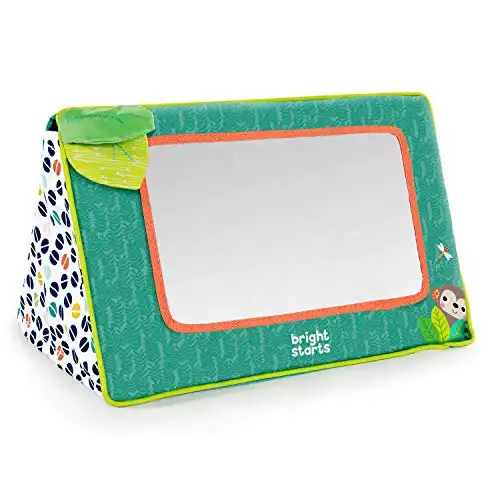
Let your baby check himself or herself out. Grab an unbreakable mirror and set it up for baby to see themself.
This can be a perfect time to practice facial expressions and social development.
6. Puffs or Cheerio Grab
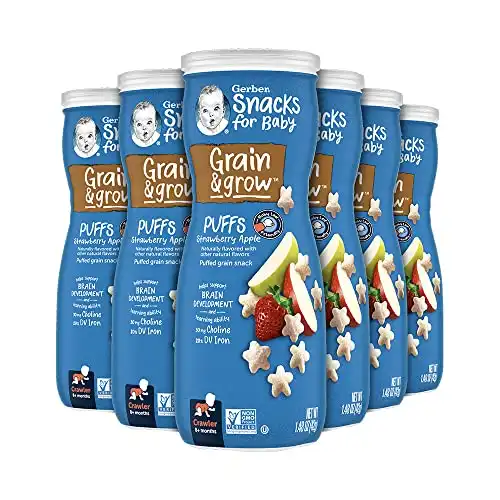
Your baby is probably just beginning to work on grabbing objects, so give them a chance to keep practicing!
Using puffs , yogurt bites, or cheerios that fit easily in your baby’s hand can be a great way to promote pincer grasp and fine motor skills. Remember to avoid small toys that can be a choking hazard.
7. Play Peekaboo!
Baby learning doesn’t have to be complicated. A fun game of peekaboo is a simple game that will make your baby’s face light up and is a classic game that babies love.
It helps with their understanding of object permanence and can also help develop their social skills.
You can play this game by hiding your face behind a blanket or your hands and then revealing yourself with a big smile and saying “peek-a-boo!”
8. Try Sensory Play for 3-6 Months Old
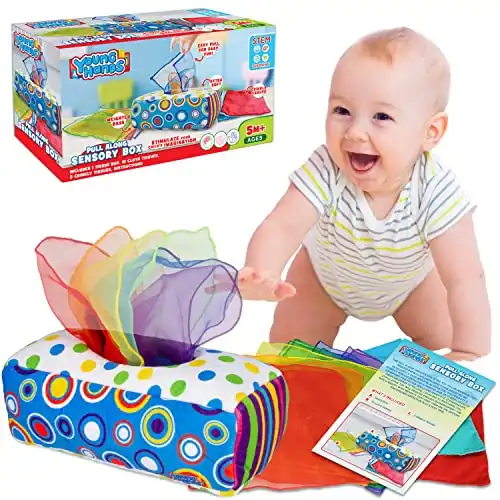
Babies at this age are fascinated by new textures and sounds. You can create a sensory box with a variety of soft and hard objects for your baby to explore.
You can also make your own sensory bags using colorful gel or water-filled bags to help stimulate your baby’s senses.
9. Incorporate Music
Musical toys are great for stimulating your baby’s auditory senses and can be a fun idea for playtime.
We use our Google Home all the time and ask it to play “Children’s nursery rhymes” and love it.
10. Sing Songs Together
Incorporate children’s songs like “Itsy Bitsy Spider” into playtime to help with language skills. Clap and play with your baby’s hand to help develop hand muscles and fine motor skills.
11. Use New Sounds
Use different sounds, such as clapping or snapping, to capture your baby’s attention and promote auditory development.
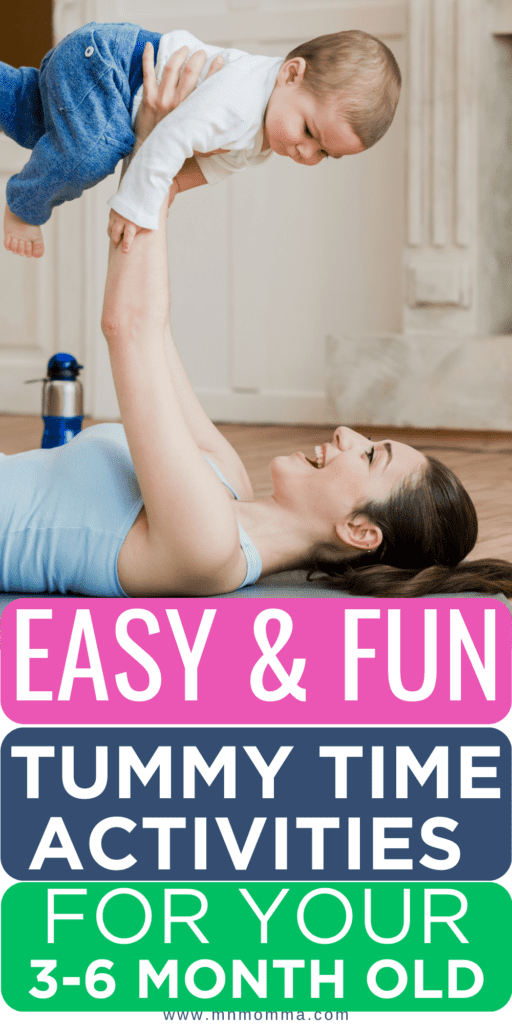
12. Tummy Time
Tummy time is one of the most important baby activities you can do, especially for babies between 3 and 6 months.
It’s essential for helping your baby develop their gross motor skills and build strong neck and shoulder muscles, which are necessary for sitting up, crawling, and eventually walking.
You can lay your baby on their tummy for short periods throughout the day, gradually increasing the time as they become more comfortable.
If your baby is getting restless in tummy time, try joining them on the floor.
And don’t forget that tummy time for 6-month-old babies looks a lot different than it might for 3 month old babies. You’ll get there!
13. Move Toys Around During Tummy Time
Some babies love tummy time, and some absolutely hate it.
So what do you do if your baby cries during tummy time?
You can try to spice it up a little bit with some new toys or excitement.
Try placing toys in different directions to encourage your baby to turn their head and work on neck and core strength.
If baby still is not having it, you can even do tummy time on your chest instead. This is great for baby’s strength and you get extra cuddles.
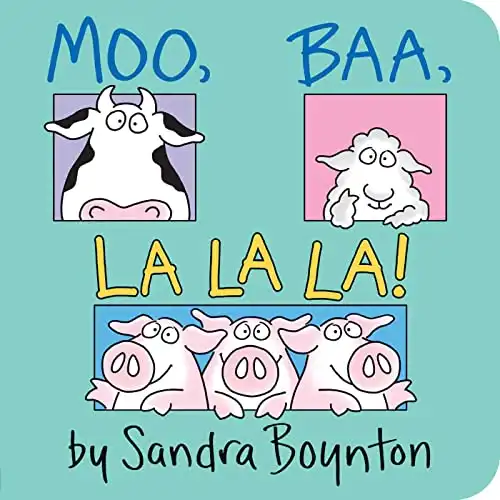
Even at a young age, babies can benefit from being read to. Reading helps with language development and can also promote a love of books and learning.
I recommend choosing board books with bright colors and simple pictures that are easy for your baby to focus on.
15. Chat With Your Baby
Talk to your baby during playtime to help promote language skills and social development.
It doesn’t have to be anything fancy and might feel a little weird at first. But just TALK.
Tell her about the weather, what you’re doing, how she got her name…whatever you’d like!
If you’re feeling tired or stuck, try adding in conversations using exaggerated expressions or varying your voice to sound silly.
16. Glitter Sensory Bottle
Use a sensory bottle filled with water and glitter to promote visual tracking and sensory development. Just make sure the cover is snapped on tight.
17. Texture Explorations
Encourage your baby to touch and explore different textures during playtime.
From the feel of the carpet to the smooth wood floor, this is super simple sensory experience for your 3-6 month old.
18. Explore Faces
We love to play the get to know you game at our house with our babies.
We’ll take their sweet little hands and touch them to our faces and say, “momma”, “dadda”, etc.
19. Sing To Your Baby
Whether it’s lullaby’s or the top 20 countdown – singing to your baby is a great way to play with him and expose him to different sounds and work on important skills like language development.
20. Dance With Your Baby
Sing and dance with your baby during playtime to promote physical development. Dancing with your baby can build your bond with baby and help you have some fun at the same time.
21. Baby Massage
Massaging your baby can help promote relaxation and improve their sleep.
You can use gentle, circular motions on their arms, legs, and back, being careful to avoid the fontanelles on their head.
22. Outdoor Walks
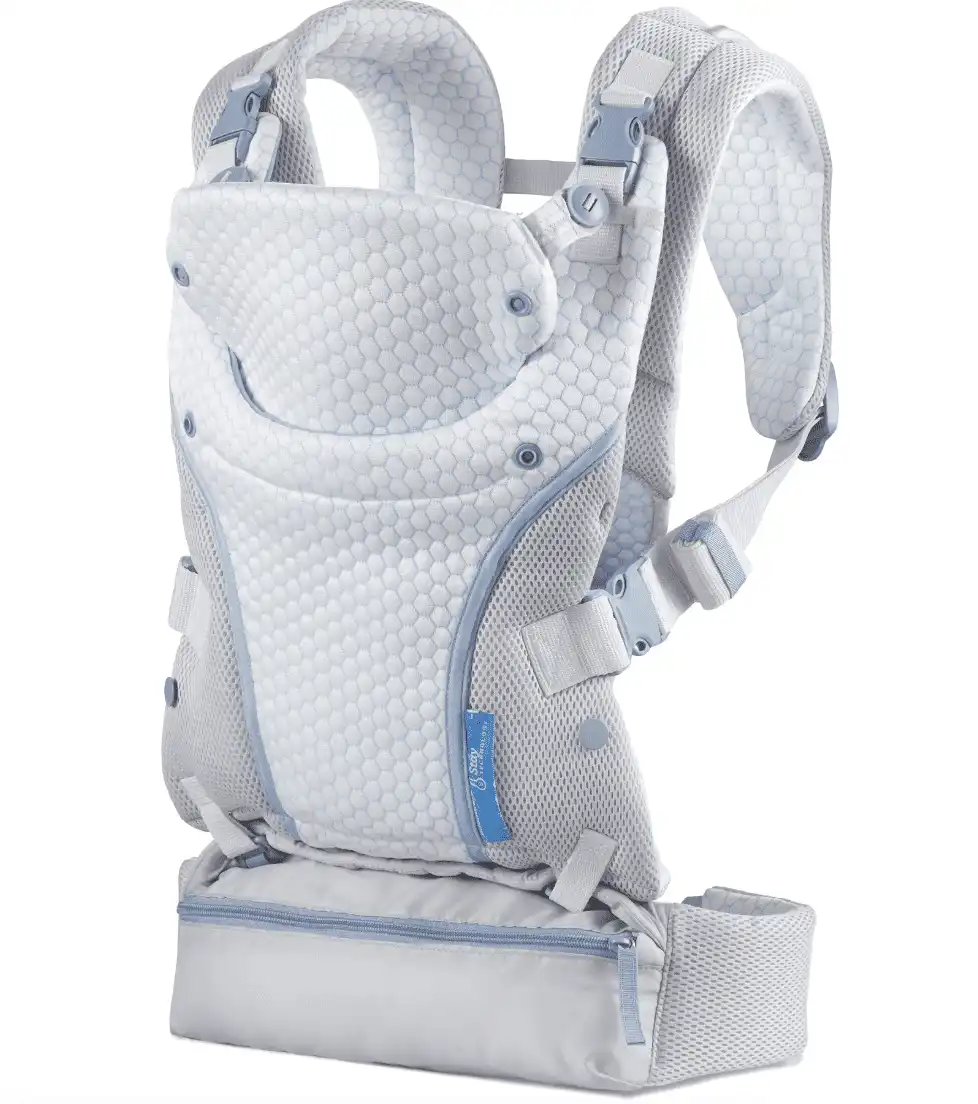
Getting outside and going for a walk can be a great way to stimulate your baby’s senses and provide a change of scenery.
You can use a stroller or baby carrier to take your little one on a walk around the neighborhood or to a nearby park.
23. Place baby on an activity mat
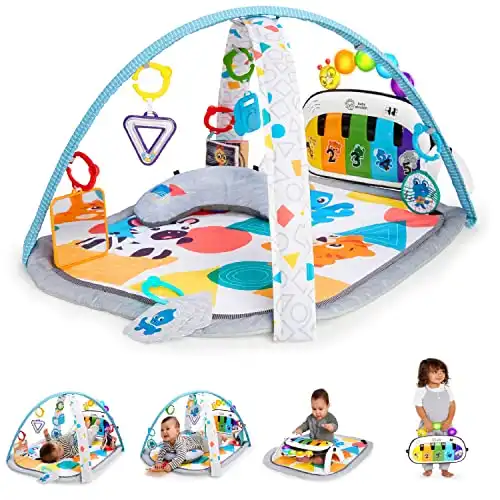
This is one of many fun activities for baby that’s super simple.
Let your baby play on an activity mat and look around, kick, and reach, at the toys around her. As she gets closer to 4 months old, she may begin reaching for objects.
24. Play Copy Cat
Stick your tongue out, make silly sounds, or click your tongue and see if baby copies you.
This can be a fun game to play back and forth with your baby.
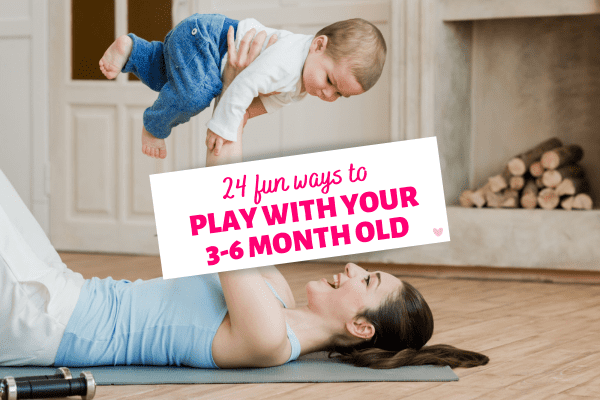
Frequently Asked Questions
How to stimulate baby’s brain.
Here’s a few quick tips for stimulating your young baby’s brain:
- Avoid screen time
- Talk to your baby
- Sing, dance, and play together
- Read to your baby
Try not to worry about stimulating your baby’s brain too much. As long as you’re avoiding screens to the best of your ability, and giving your baby lots of time to look around, interact with you, and learn more about their world – there’s a good chance that your baby is already learning and picking up new skills without you even having to work very hard.
What Sensory Skills Does a 3 Month Old Have?
At 3 months old, infants are developing their sensory skills and are beginning to explore the world around them.
Here are some of the sensory skills that a 3-month-old usually has:
- Vision: At this age, babies are getting better at seeing. They can focus on objects that are up to 12 inches away and can track moving objects with their eyes. They are also starting to develop depth perception and may notice his/her favorite faces in the distance (yours!).
- Hearing: Babies are born with the ability to hear, but at 3 months, they are starting to become more responsive to sounds. They might turn their head towards the direction of sounds and may begin to recognize familiar voices.
- Touch: Infants have a highly sensitive sense of touch and are able to feel different textures and temperatures.
What Are Montessori Activities 3-6 Months
Montessori activities for infants between 3-6 months old are designed to encourage their natural curiosity and promote their physical and cognitive development. Here are some Montessori activity ideas:
- Hang simple mobiles with contrasting colors and simple shapes above the baby’s crib or play area
- Sensory baskets (filled with baby safe items)
- Mirror play
- Singing and reading
- Grasping and reaching
Remember that Montessori activities for infants between 3-6 months old should be simple, safe, and focused on promoting the baby’s natural development and curiosity.
Indoor Activities for Babies 4-6 Months Old
Looking for indoor activities for your 4-6 month old? Almost every activity in this article can be done indoor or outdoor depending on the temperature and weather in your area.
What To Do With A 3 Month Old All Day
If your personality is one where you thrive on structure and the days home with an infant can start to feel a little long, there are lots of simple activities you can do together. Here’s a few tips for the long days:
- Plan an outing (even just to grab a few errands)
- Go for a walk
- Schedule out your day (naps, eating times, etc.); this can be a big help to some moms!
- Read books together
- Choose a few of the activities listed above
There are a variety of different things you can do with your 3-6 month old baby that will help stimulate their senses, promote development, and strengthen your bond with them.
Remember to always follow your baby’s lead and pay attention to their cues to ensure they are comfortable and happy during these activities.
Activities for 3-6 Month Old Babies
Spending time with your baby and engaging in playtime activities can be a great bonding activity for parents and babies alike.
And incorporating these activities into your daily activities can make playtime much fun and help promote healthy development in your 6-month-old baby.
It’s important to remember that every baby develops at their own pace. If you have concerns about your baby’s development, it’s always best to seek medical advice or consult with an occupational therapist.
- How to Play With Your New Baby (0-3 Months)
- How To Teach Your Baby Sign Language (And Why You’ll Want To!)
- Skipping Baby Food: How We Started Baby on Solids at 6 Months
Jen is a Registered Nurse, owner of Minnesota Momma, and mom of two little ones. She loves to focus on topics that keep families happy and healthy from pregnancy through birth and beyond.
Similar Posts

2022 Black Friday Deals for Moms, Babies, & Toddlers
Disclosure: This post may contain affiliate links, which means I may receive a small commission if you click a link and purchase something. Please check out my disclosure policy for more details. All opinions are my own! Complete Guide to Black Friday for Moms (Ideas for Moms, Babies, & Toddlers) Ready or not, Thanksgiving and…
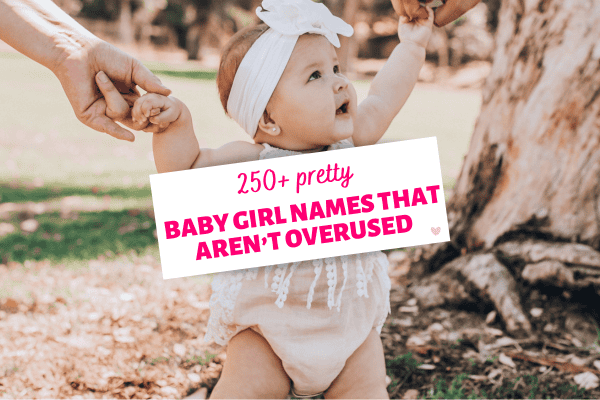
250 Pretty Baby Girl Names (that aren’t overused)
Disclosure: This post may contain affiliate links, which means I may receive a small commission if you click a link and purchase something. Please check out my disclosure policy for more details. All opinions are my own! I’ll be honest, picking baby names for my kids was one of my LEAST favorite things to do. …
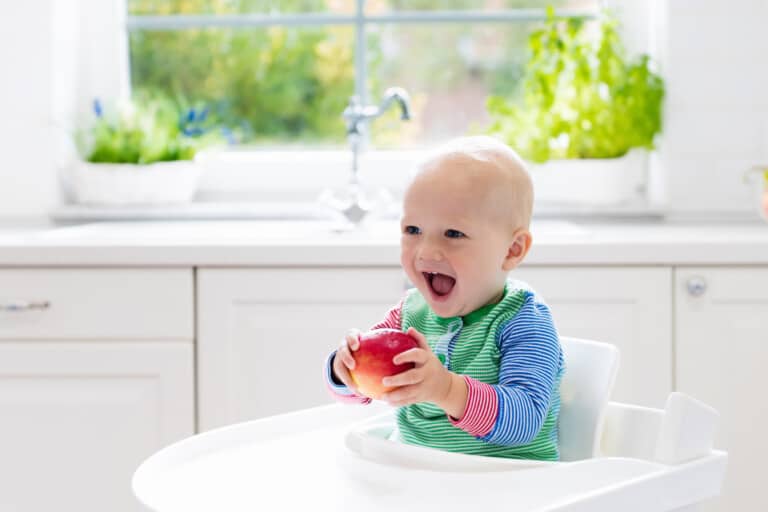
Best High Chair for Baby Led Weaning
Disclosure: This post may contain affiliate links, which means I may receive a small commission if you click a link and purchase something. Please check out my disclosure policy for more details. All opinions are my own! Let’s face it, baby led weaning can be a mess! And that means it can be hard on…
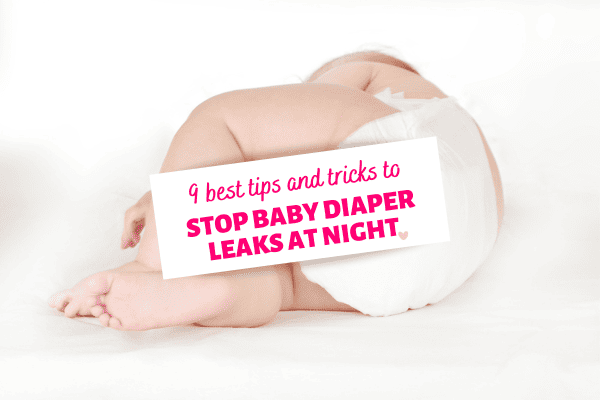
9 Game Changing Tips to Stop Baby Diaper Leaks At Night
Disclosure: This post may contain affiliate links, which means I may receive a small commission if you click a link and purchase something. Please check out my disclosure policy for more details. All opinions are my own! Let’s talk about a topic that every new mom or dad has encountered at some point: baby diaper…
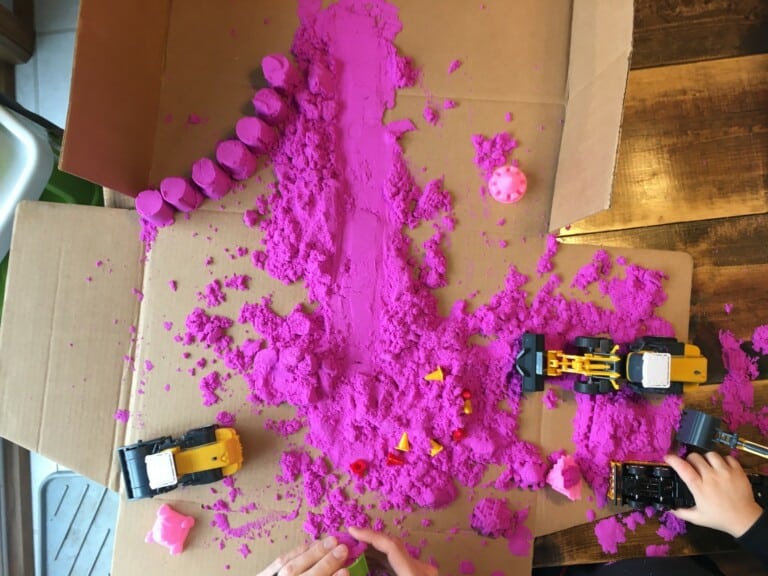
36 Activities For Your 3 Year Old (That You Can Do Inside!)
Disclosure: This post may contain affiliate links, which means I may receive a small commission if you click a link and purchase something. Please check out my disclosure policy for more details. All opinions are my own! Ideas & Activities for 3 Year Olds My three-year-old is a super busy little guy. He’ll work on…
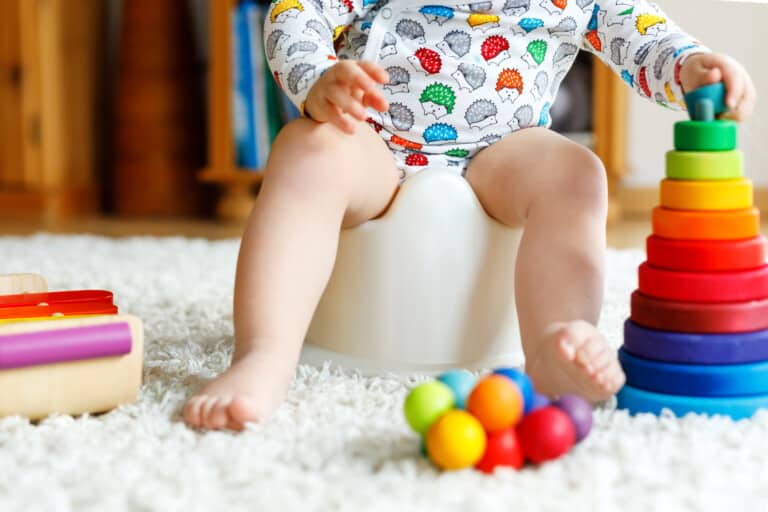
How to Potty Train in 3 Days (Yes, Really!)
Disclosure: This post may contain affiliate links, which means I may receive a small commission if you click a link and purchase something. Please check out my disclosure policy for more details. All opinions are my own! 3 Day Potty Training Bootcamp If you’ve searched the mom groups or even heard other moms talk about…
Leave a Reply Cancel reply
Your email address will not be published. Required fields are marked *
This site uses Akismet to reduce spam. Learn how your comment data is processed .
- Skip to content
- Skip to navigation
Baby development at 3-4 months: what’s happening
Your baby is busy learning about emotions and communication. They’re starting to link what you say to your facial expressions. Your baby loves your face, but they might find new faces interesting too. Your baby also knows your voice and will turn their head to you when they hear you.
Your baby is starting to show more emotion themselves and might laugh out loud, smile when they see and hear things they like, and make sounds like ‘ah-goo’. They might even try talking to you in ‘coos’ and other sounds. When you talk, your baby listens and tries to reply. And when your baby is alone, you might hear your baby babbling to themselves.
Any extra crying and fussing usually settles around 12-16 weeks.
Your baby loves playing with objects and might also look closely at objects and shake them. And now that your baby is using their hands and fingers more, your baby might stare at and play with their own hands too.
Sometimes your baby might cross their eyes when they’re looking at things – this is natural in the first few months.
When you hold your baby or help them to sit up, you might notice that they have more control of their head movements or can hold their head steady without support.
When you give your baby tummy time , they might lift their head high or push up on their forearms or hands.
If your baby has started to roll, you’ll be surprised at what they can reach, so always watch your baby. It doesn’t take long for your baby to unexpectedly roll into or reach for something that puts them in danger.
Helping baby development at 3-4 months
Here are simple things you can do to help your baby’s development at this age:
- Play together : sing songs , read books , play with toys , do tummy time and make funny sounds together – your baby will love it! Playing together helps you and your baby get to know each other. It also helps your baby feel loved and secure.
- Smile at your baby : when your baby sees you smile, it releases natural chemicals in their body that make them feel happy and safe. Smiling also helps your baby’s brain develop and helps your baby form a healthy attachment to you.
- Make eye contact with your baby: when you get your baby to follow your eyes, it encourages your baby to turn their head. Like tummy time, this builds your baby’s neck strength and head control.
- Talk to your baby and listen to their reply: this helps your baby learn about language and communication. When you talk or listen, look your baby in the eye and make facial expressions to help them learn the link between words and feelings.
- Find a routine: when it feels right for you and your baby, it can help to do things in a similar order each day. A familiar pattern helps your baby feel safe and secure.
- Prepare your home for a moving baby: it’s a good idea to look at how you can make your home safe for your baby to move about in.
Sometimes your baby won’t want to do some of these things – for example, they might be too tired or hungry. Your baby will use baby cues to let you know when they’ve had enough and what they need.
Crying and how to respond
Sometimes you’ll know why your baby is crying . When you respond to your baby’s crying – for example, by changing your baby’s nappy when it’s wet or feeding your baby if they’re hungry – your baby feels comfortable and safe.
Sometimes you might not know why your baby is crying, but it’s still important to comfort your baby. You can’t spoil your baby by picking them up, cuddling them or talking to them in a soothing voice.
Never shake a baby. It can cause bleeding inside the brain and likely permanent brain damage. If you feel like you can’t cope, it’s OK to take some time out until you feel calmer. Gently put your baby in a safe place like a cot. Go to another room to breathe deeply, or call your state or territory parenting helpline .
Parenting a 4-month-old
Every day you and your baby will learn a little more about each other. As your baby grows and develops, you’ll learn more about what your baby needs and how you can meet these needs.
As a parent, you’re always learning. It’s OK to feel confident about what you know. And it’s OK to admit you don’t know something and ask questions or get help.
It’s also important to look after yourself. Looking after yourself physically, mentally and emotionally is good for you, and it’s good for your baby. When you’re well, you can give your baby the loving attention they need to grow and thrive. You can also cope better if your baby is crying a lot.
Remember that part of looking after yourself is asking for help, especially if you’re feeling stressed , anxious or angry . There are many people who can support you and your baby, including your partner, friends, relatives, child and family health nurse and GP .
When to be concerned about baby development
You know your baby best. So it’s a good idea to see your child and family health nurse or GP if you have any concerns or notice that your 4-month-old has any of the following issues.
Seeing, hearing and communicating Your baby:
- is crying a lot and this is worrying you
- isn’t making eye contact with you or doesn’t pay attention to faces
- crosses their eyes most of time and doesn’t follow moving objects with their eyes
- isn’t making any sounds or responding to noises.
Movement Your baby:
- isn’t lifting their head
- isn’t starting to control their head when supported to sit
- isn’t reaching and grasping for toys
- doesn’t notice their hands and keeps their hands in a fist most of the time.
If you notice that your baby is losing skills they once had, see a child health professional.
It’s also a good idea to see your child and family health nurse or GP if you or your partner experiences the signs of postnatal depression in birthing mothers or postnatal depression in non-birthing parents . Signs of postnatal depression include feeling sad and crying for no obvious reason, feeling irritable, having difficulty coping and feeling very anxious.
Development usually happens in the same order in most children, but skills might develop at different ages or times. If you’re wondering whether your child’s development is on track, or if you feel that something isn’t quite right, it’s best to get help early. See your child and family health nurse or GP.
Languages other than English and Easy English
- Easy English (PDF: 1.9mb)
- Arabic (PDF: 181kb)
- Dari (PDF: 179kb)
- Dinka (PDF: 144kb)
- Hakha Chin (PDF: 135kb)
- Karen (PDF: 158kb)
- Persian (PDF: 226kb)
- Simplified Chinese (PDF: 225kb)
- Swahili (PDF: 135kb)
- Tamil (PDF: 224kb)
- Vietnamese (PDF: 150kb)
- How To Get Pregnant
- Infertility
- Pregnancy Week by Week
- Second Pregnancy
- Giving Birth
- Post Pregnancy
- Breastfeeding
- Development
- Browse Names
- Play & Activities
- Coloring Pages
- Food & Nutrition
- Health & Fitness
- Style & Beauty Care
- Collaborations
- New Parents
- Single Parenting
- Relationships
- Baby Eye Color Calculator
- Online Pregnancy Test
- Chinese Gender Predictor
- Implantation Calculator
- hCG Calculator
- Period Calculator
- ovulation calculator
- pregnancy due date calculator
- Child Height Predictor
- Pregnancy Weight Gain Calculator
- Breast Milk Calculator
- Child Growth Percentile Calculator
- Baby Cost Calculator
- BMI Calculator For Kids & Teens
- Contraction Calculator
- Immunization Scheduler and Chart
- C-Section Checklist
- Online Twin Pregnancy Quiz
- Numerology calculator
- Child Blood Type Calculator
- Nakshatra Calculator
- Diaper Bag Checklist
- Baby Name Combiner
Home • Baby • Play And Activities
3 Learning Activities For Your 3 Month Old Baby
The ideal activities to help take your three-month-old's developmental milestones to the next stage.
Dr. Shaon Mitra is a consultant pediatrician and neonatologist with 17 years of experience. She is attached to several hospitals in Kolkata, West Bengal, including Bellevue Clinic, ILS Hospitals Salt Lake, and Park View Superspeciality Hosp... read full bio
Harshita is a graduate in commerce and holds a PG Diploma in Patent and Copyrights Law from NALSAR University. She has also pursued CA and has more than three years of internship experience in auditin... read full bio
Rohit Garoo is a writer-turned-editor with over 9 years of experience in content writing, editing, and content marketing. He did his bachelors in Science at St. Xavier's College, Hyderabad, and master... read full bio
Trisha worked as a schoolteacher for three years before taking up professional writing in 2021. She completed her masters in English from the University of Calcutta and bachelors in Education from the... read full bio
MomJunction believes in providing reliable, research-backed information to you. As per our strong editorial policy requirements, we base our health articles on references (citations) taken from authority sites, international journals, and research studies. However, if you find any incongruencies, feel free to write to us .
Image: ShutterStock
Now that your three-month-old, it is time to introduce them to learning activities for a 3-month-old baby. This is the stage where the baby begins to develop her play, sensory stimulation, along with experiencing changes in her sleeping and feeding patterns. It will help if you try to understand their likes and dislikes. You have to be careful with every step that you might come across. If you are not aware of what activities will help them, we have covered them here. Check the list of activities that are guaranteed to help your little one develop strength and grow healthily.
3 Month Old Baby Development Activities
Your baby can now hold up her head steadily and hold herself easily at 45 degree while on her tummy time. You can try holding her on her feet and put her in different positions. Play all the fun activities for 3 month old baby that will help her muscles gain strength.
1. Your Baby Has Now Discovered Her Hands:
Image: Shutterstock
She has discovered she has hands that can be used for so many things. Here is what she tries doing with her hands:
- You can see her having fun with her fingers.
- Put the fingers in her mouth to suck them.
- Bring both hands together and clasp.
- She will soon start touching objects and hold things only if you put them in her grasp. She won’t be able to reach out for objects so soon.
- She will realize she can make noise with them. This is when she starts understanding the relationship between cause and effect, strengthening her cognitive skills. This usually comes a little later.
- You can place a mirror in front of her and give her a prop .
- She will keep looking at her own reflection.
- You can see her smiling back at her reflection. Mirror play generally appears at around six months of age.
2. Your Baby’s Senses Are Developing:
The vision and hearing abilities of your baby are developing at this stage. Make an observation of the following developments in her:
- She can now turn her head and smile hearing your voice .
- She will enjoy listening to music.
- She will love gazing at bright color toys.
- Faces of the 3 months old are absolutely fascinating.
- She will keep gazing at her own reflection in a crib mirror.
As you notice your baby’s senses blossoming, engaging in activities that stimulate these senses is key to their growth and development. Rachel Johnson, a mother and musician, talks about how music influenced her son. She started exposing him to her flute playing at just two months of age. She writes, “I was preparing for my first recital after having him (Oliver, her son) and he woke up when I started to play so I bounced him on my lap while I practiced the Lennox Berkeley Sonatina” She later adds, “All this music round the house must be good for the baby’s development – Oliver’s first sounds were very tonal, and he now has a fine repertoire of nursery rhymes ( i ).”
3. Communication Skills Of Your Baby Develops At This Stage:
This is one interesting activities to do with 3 month old baby. She has now started to relate to the world around her. Here is how your baby communicates now:
- She now gives smiles and smiling is a pleasure for her.
- Crying is no more her primary way of communicating. The baby will still primarily cry when hungry or sleepy.
- A 3 months old baby does not cry more than an hour a day .
- You need to visit a doctor in case her crying exceeds the normal limits.
- She is now making vowel sounds like “ah” “oh” and coos rather than crying.
- You can now engage her in socialization and narrate stories .
- She will start making sounds and make her own gestures.
Help Your Darling During Development Stage
You need to keep in mind each baby is unique in her own way. You should not force your baby if you find developmental delays. If you are in doubt, have a talk with your doctor and raise your concerns. Here is what you can do:
- Follow a development tracker to check the milestones she has attained. There are online checkers available for your convenience. Remember, if the baby is preterm, developmental milestones may be expected to develop a little later than term babies. It is always better to ask your doctor if there are any concerns about development of your baby.
- Organize your to-do list. This way you can know what you need to do.
- Look for the medical concerns for babies of this age.
- Spend time with your baby to enhance the eternal bonding and look at things around you from a completely different perspective.
Frequently Asked Questions
1. What can I teach my baby at three months?
- At three months, your baby starts responding to your voice by coos and gurgles. You may encourage them to keep talking, so it helps them learn the language and hold a conversation.
- Introduce shapes and colors through colorful toys of different textures and shapes.
- Hold a toy away from your baby and encourage them to reach out for it. This will help them learn how to grab and hold an object.
- Teach babies to develop daily feeding, playing, and sleeping routines. This will help them follow an order and feel safe and secure.
- Go for a walk outside with your baby and describe what you see. This will help them get accustomed to various new things around (1) (2) (3) .
2. How do I entertain my three-month-old baby?
You may entertain your three-month-old baby by (3) :
- Singing a favorite tune
- Tickling lightly
- Gently massaging their toes and feet
- Reading books in a calming tone
- Pretending to hide a toy and find it again
- Playing soothing music or lullabies
3. How can I stimulate my baby’s brain development?
You may stimulate your baby’s brain development by (4) :
- Providing nurturing and positive environment at home
- Responding in a warm and loving tone
- Encouraging fun activities, such as reading, singing, and talking
- Playing games, such as peek-a-boo
- Making eye contact and smiling
- Breastfeeding for at least six months
- Letting them interact with different people
- Helping them explore the environment outside and inside the house
- Getting their health checkups regularly
- Not giving them screen time
You may introduce age-appropriate learning activities for 3-month-old babies since it is time they begin to play. It is also when babies recognize their hands, develop senses, and try to hold up their heads. You may try activities such as keeping them in front of a mirror, clasping hands, and movement of hands, and feet, which help strengthen their muscles or enhance motor skills. Interaction with them and responding to the noise they make can be fun at this age and form the basics of communication or language skills.
Key Pointers
- At three months, babies learn to hold toys and other items. Encourage them by placing items in their grasp or putting a mirror in front of them.
- Baby’s senses, including vision and hearing, develop in the third month. Parents can enhance their senses by showing them bright colors and playing music.
- Promote your baby’s communication skills by conversing with them, repeating their sounds, and narrating stories.
- Introduce daily routines for feeding, playing, and sleeping to help your baby feel secure and comfortable.
- Take your baby for a walk and describe what you see, exposing them to new things in their environment.
Image: Dall·E/MomJunction Design Team
Check out this video for 10 fun activities to do with your 0-3 month old baby! From tummy time to singing songs, you’ll find something to keep your little one entertained.
Personal Experience: Source
MomJunction articles include first-hand experiences to provide you with better insights through real-life narratives. Here are the sources of personal accounts referenced in this article.
- Learning Play and Your 1- to 3-Month-Old. https://kidshealth.org/en/parents/learn13m.html
- 3-4 months: baby development. https://raisingchildren.net.au/babies/development/development-tracker-3-12-months/3-4-months
- Every Day I Learn Through Play! https://www.gov.nl.ca/education/files/earlychildhood_everyday_i_learn_through_play.pdf
- Your baby’s brain: How parents can support healthy development. https://caringforkids.cps.ca/handouts/pregnancy-and-babies/your_babys_brain
- Fact-checker
Dr. Shaon Mitra MD
Harshita makvana b.com, pg dip, rohit garoo bsc, mba, trisha chakraborty ma, bed, latest articles, 11 fun things to do on a friday night with your teens.
Plan a campfire, go bowling, eat a pizza - the idea is to have a relaxed weekend with your teen.
12+ Fun Weekend Activities To Do With Your Family
Amp up your weekend vibes with your family and spend quality time bonding over fun activities.
11 Cool Teen Birthday Party Ideas And Games
Make your teen’s birthday celebration unique, happening, and rave-worthy.
16 Engrossing Drama And Improv Games For Teens
These games can encourage teens to express themselves with confidence.
24 Fun-Filled Sleepover Games And Activities For Teens
Bond with friends over an exciting sleepover party with these novel games and activities.
100+ Clean And Funny School Jokes For Kids
Crack up your class into bursts of laughter by sharing school jokes with them.
95 Naughty And Funny Jokes For Kids To Laugh Out Loud
Leave your little one in splits with these puns, jokes, and one-liners.
Top 11 DIY Diwali Greeting Cards And Gift Ideas For Kids
Because the joy of preparing something yourself is out of the world.
22 Learning Activities And Games For Your 7-Month-Old Baby
Exciting ideas to advance the development and skills of your little one.
17+ Exciting And Interesting Games For 4-Year-Olds To Have Fun
Keep your little one engaged with games and watch them forget about everything else.
10 Interesting French Games And Activities For Kids
Not only are French art and fashion popular, but so are French children's games.
10 Cute ‘Frosty The Snowman’ Coloring Pages For Toddlers
Best Toys for 3-Month-Olds
Medical review policy, latest update:, what to consider when buying toys for a 3-month-old, how we chose the best toys for 3-month-olds, why trust us, best ball toy for 3-month-olds, oball classic ball, best soft book for 3-month-olds, the very hungry caterpillar soft teether book, best puppet for 3-month-olds, melissa & doug pooh bear hand puppets, best tummy time toy for 3-month-olds, baby einstein glow & discover light bar activity station, best sensory toy for 3-month-olds, melissa & doug k's kids musical farmyard cube, best activity mat for 3-month-olds, lovevery play gym, best soft blocks for 3-month-olds, manhattan toy wimmer-ferguson mind cubes, best board book for 3-month-olds, ‘on the night you were born’ by nancy tillman, best teething toy for 3-month-olds, nuby ice gel teether keys, best multi-purpose toy for 3-month-olds, manhattan toy winkel rattle & sensory teether toy, best travel toy for 3-month-olds, lamaze freddie the firefly, best developmental toy for 3-month-olds, bright stars lots of links, best stuffed animal toy for 3-month-olds, gund flappy the elephant, best musical toy for 3-month-olds, fisher price deluxe kick ‘n play piano gym, best crinkle toy for 3-month-olds, taggies crinkle me toy, best grasping toy for 3-month-olds, melissa & doug flip fish toy, best mirror for 3-month-olds, sassy tummy time floor mirror, best mobile for 3-month-olds, manhattan toy wimmer-ferguson infant stim-mobile.
American Academy of Pediatrics, The Power of Play , June 2022. WhatToExpect.com, Best Activities for a Newborn , September 2021. WhatToExpect.com, The Best Baby Mobiles to Stimulate Your Newborn , September 2021. WhatToExpect.com, Best Mats, Gyms and Toys for Tummy Time , August 2021. WhatToExpect.com, Making Bathtime Fun for Babies and Toddler , August 2021. Steven Abelowitz, M.D., F.A.A.P., Regional Medical Director, Coastal Kids Pediatrics, Newport Beach, California. Sarah Lytle, Ph.D., Director of Outreach and Education, Institute for Learning and Brain Sciences (I-LABS), University of Washington, Seattle, Washington. Ilan Shapiro, M.D., F.A.A.P., Medical Director, Health Education and Wellness, AltaMed Health Services, Los Angeles, California.
Explore the Best Products for Moms and Babies
Trending on what to expect, best baby deals happening right now, how to get your registry's free welcome gift, ⚠️ you can't see this cool content because you have ad block enabled., 17 of the best baby bottle and breast milk storage solutions you can buy on amazon, best toddler water tables, best stroller fans.

IMAGES
VIDEO
COMMENTS
2. Sensory balls. Introduce different textured balls, such as a soft plush ball, O-ball, or ping pong ball for your 3 month old to touch, hold, and explore. You could also make sensory balloons by filling a balloon with different materials from the kitchen, like flour, oats or corn kernels.
Let baby grab one end and pull. (Similar to pulling a tissue out of a box.) Hold a rolling pin in front of baby. Encourage baby to bat or swipe the object to make it spin. This can also work with other toys that spin or twirl. A 3-month-old baby is still building the neck strength to hold their head with control.
Games to Play. Head Lifts: Baby should be starting to lift head a little bit when doing Tummy Time. Get baby to move by dangling a toy to look up at. Helps baby improve neck and head control. Keep a Diary: Track things like baby's motor milestones, how often they eat, and how many ounces are eaten per day.
This 30-page ebook is written by a team of pediatric physical and occupational therapists and includes: -Information about developmental milestones, including gross motor milestones and fine motor milestones for ages 0-5. -Over 100 activity suggestions for supporting healthy fine motor, gross motor, and sensory development.
3 Learning Activities For Your 3 Month Old Baby by Mom Junction. Five Sensory Experiences for Babies 4-6 Months Old by The Paige Diaries . RELATED… 18+ Easy Sensory Bins for Babies. Easy Activities for 6-9 Month Old Babies
A Great Education Activity that grows with your baby from 3 months old - 3 years old. Monti Kids is one of our favorite things over here at Rookie Moms. They say that 85% of brain development happens in the first three years. Monti Kids provides educational play from birth to age 3 will help fulfill and expand your child's potential.
Pat-a-Cake. Brain development activities for 3 3-month-old baby can be as simple as singing to expose them to language development. Rhymes and songs develop language skills, and you can start with these baby three-month activities. baby they are a great way to teach those beginning sounds through verses and repetitions.
1. Tummy time. This continues to be an essential sensory activity in your baby's everyday routine. It helps to build coordination and strengthens your baby's neck, shoulders, arms and trunk. These muscles also help with the motor skills such as rolling over, crawling, pulling self up and sitting up.
1. Reaching for toys. Lay baby on her back or tummy and hold toys out for her to reach. 2. Singing clapping songs and helping baby to clap his or her hands. Pat-a-cake or these action songs for babies are great. 3. Providing toys for little ones to grasp and mouth.
Create a Leaf "Canopy". Make a leafy mobile for your grandbaby by placing a few colorful fall leaves between clear contact paper. Cut out the leaf shapes, punch a hole in each, and hang with yarn from a clothes hanger. While your baby is on her back, swing the "mobile" gently to make the leaves flutter. You can even move the mobile ...
11. Lay them on their backs with toys overhead. Place your baby under a mobile or on an activity mat. This is a great baby activity for a 3 to 4 month old as they love gazing at the objects floating above them. This promotes visual fixation and tracking as your baby starts to follow objects moving around.
Key Takeaways: Early Engagement is Crucial: Engaging a 3-month-old baby in activities is vital for their development. It strengthens the parent-child bond, boosts cognitive and physical growth, and promotes sensory exploration during these formative months. Reading Matters: Reading to your baby, even at this young age, is highly beneficial.
Games to play with 4-month-old to 6-month-old babies. At this age, your baby will become a lot more physical, rolling over both ways and even sitting up. Games can get more active now, too. Your baby might enjoy "pony rides" on your knee or tickle games. They're also more responsive to you, making noises and meeting your eyes.
Activities For 3 Month Olds. 1. Talk To Your Baby. Talking to your baby is probably one of the BEST things you could do for him. Through talking to him, he's learning so many language skills: he's going to learn the structure of the language, expand his vocabulary, learn about maintaining eye contact.
Use a gentle baby oil or lotion and massage their body with light, circular movements. Be attentive to their cues to ensure they are enjoying the experience. 8. Listening to Music. Music can be incredibly stimulating for a 3 month old. Play different types of music and observe your baby's reaction.
Check out these 3-month-old baby milestones. ... they're learning the control of their arms and the awareness. ... 11 Activities for Babies 0 to 6 Months Old.
Here are 8 such activities to start with. Of course, you can tweak and modify them to suit your and your baby's needs. The idea is to set the ball rolling. Skill Development Of A 3 Month Old; 8 Engaging And Learning Activities For A 3 Month Old; Skill Development Of A 3-Month-Old. At this stage your baby begins to develop 5 basic skills. 1.
The average weight for a 3-month-old baby boy is 14 pounds (6.4 kg), and for a 3-month-old baby girl, 12 pounds and 14 ounces (5.8 kg). When it comes to length/height, the average length for a 3-month-old baby boy is 24.25 inches (61.4 cm), and for a 3-month-old baby girl, 23.5 inches (59.8 cm). Remember that these are average measures and that ...
What to expect: baby cognitive development and play. At 3-6 months, your baby will probably: talk to you in 'coos' and other sounds. listen to you when you talk and try to reply. smile at their own image in a mirror. reach out to grab things or put things in their mouth. At 6-9 months, your baby will probably: say 'mama' or 'dada ...
8. Try Sensory Play for 3-6 Months Old. Babies at this age are fascinated by new textures and sounds. You can create a sensory box with a variety of soft and hard objects for your baby to explore. You can also make your own sensory bags using colorful gel or water-filled bags to help stimulate your baby's senses. 9.
Key points. At 3-4 months, babies often express new emotions, communicate in new ways, and move their hands, bodies and heads more. Simple activities like talking, singing and reading are good for baby learning and development. Speak with your GP or child and family health nurse if you're concerned about baby development or you need support.
3 Month Old Baby Development Activities. Your baby can now hold up her head steadily and hold herself easily at 45 degree while on her tummy time. You can try holding her on her feet and put her in different positions. Play all the fun activities for 3 month old baby that will help her muscles gain strength. 1.
Amazon. Best Mobile for 3-Month-Olds. Manhattan Toy Wimmer-Ferguson Infant Stim-Mobile. $15. Learn More. Amazon. At 3 months, your little one is exploring the world around him — and is often doing so with his mouth. Not only is this okay, but parents should actively encourage this type of exploration, since this kind of manipulation allows ...
1. Babbling and imitating sounds. Smiling at familiar faces. Playing with others, and they may even cry when the playing stops. Becoming more expressive with their face and body. 2. growth spurt 2 ...